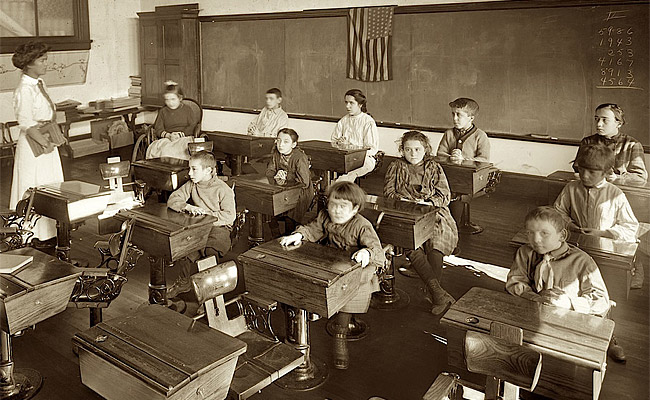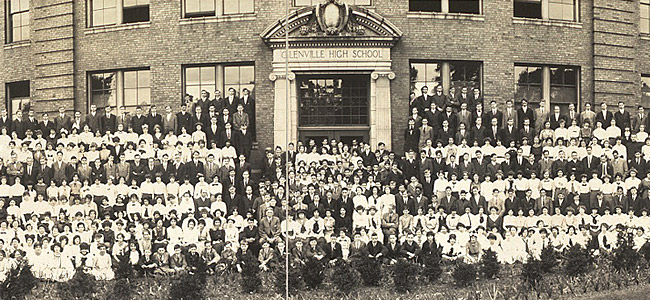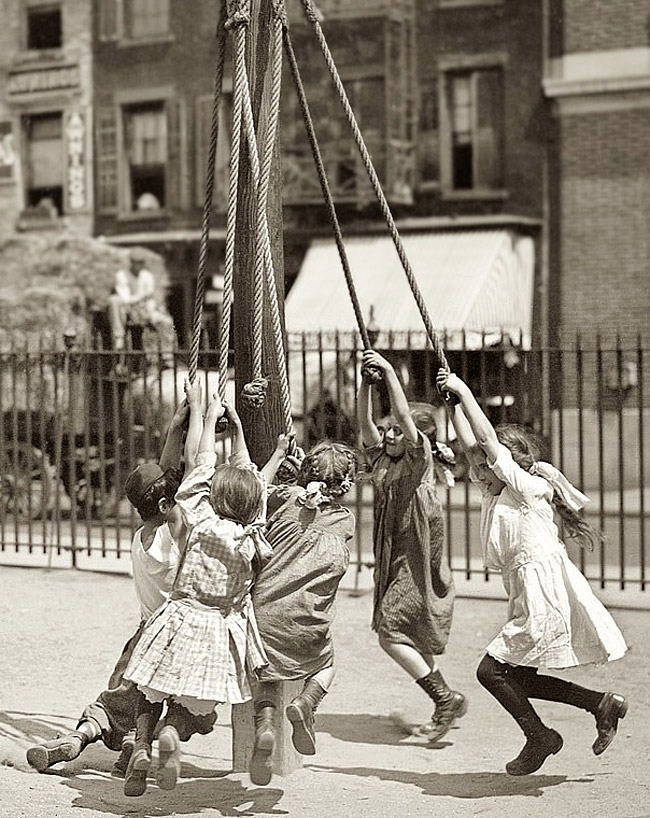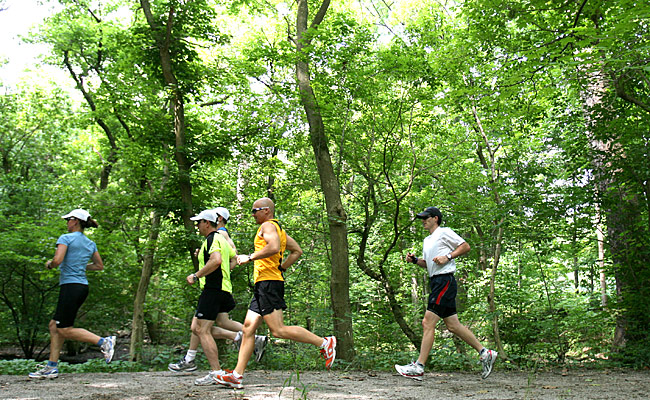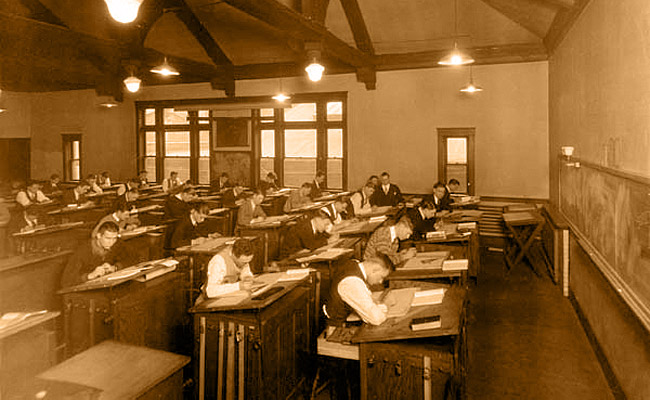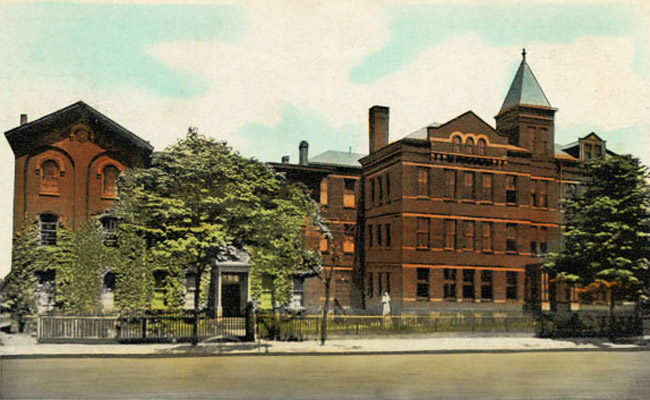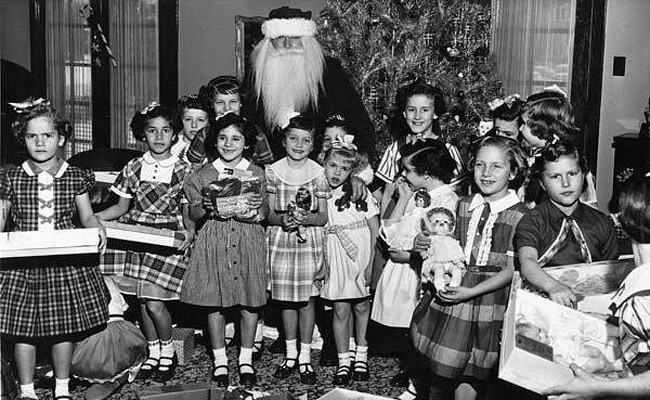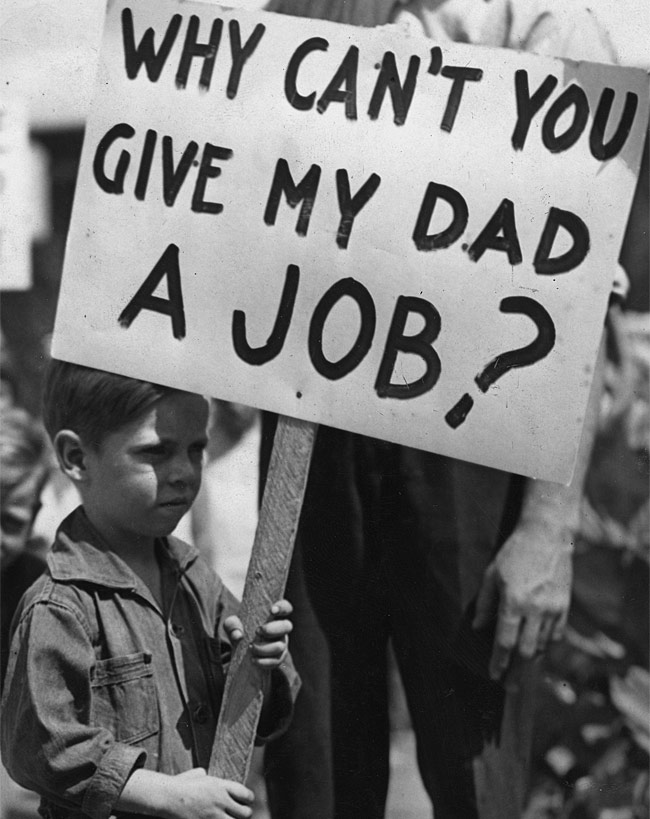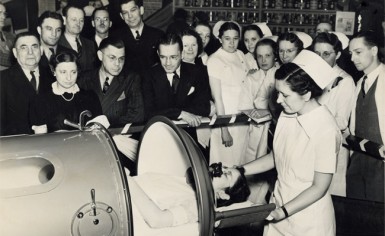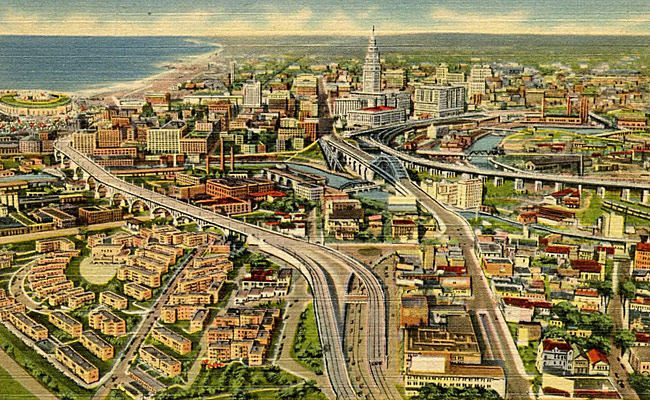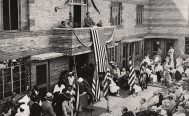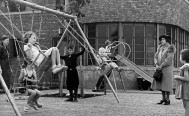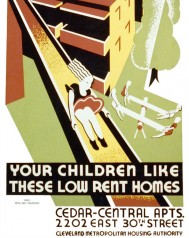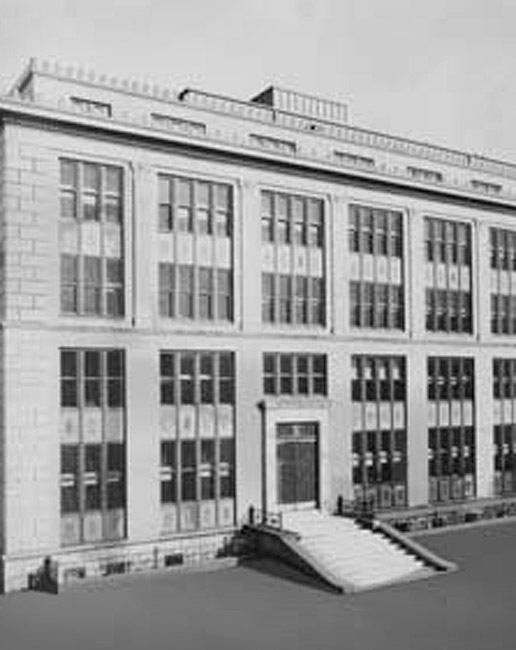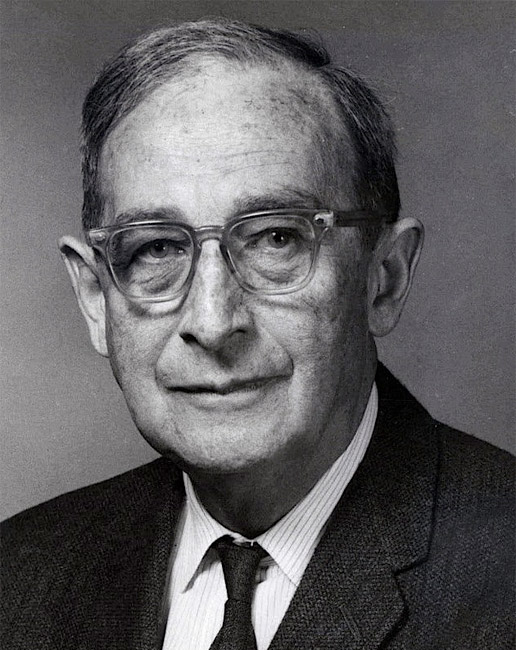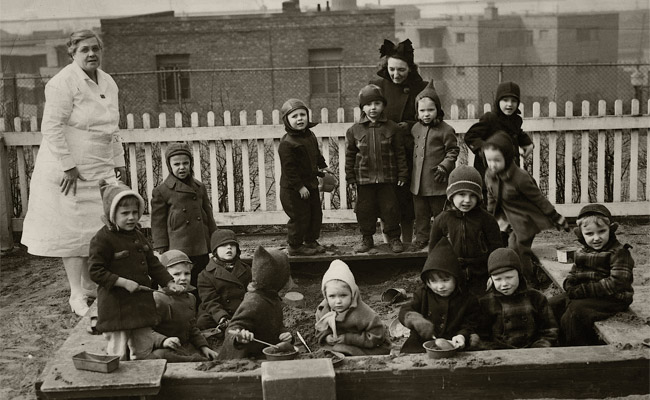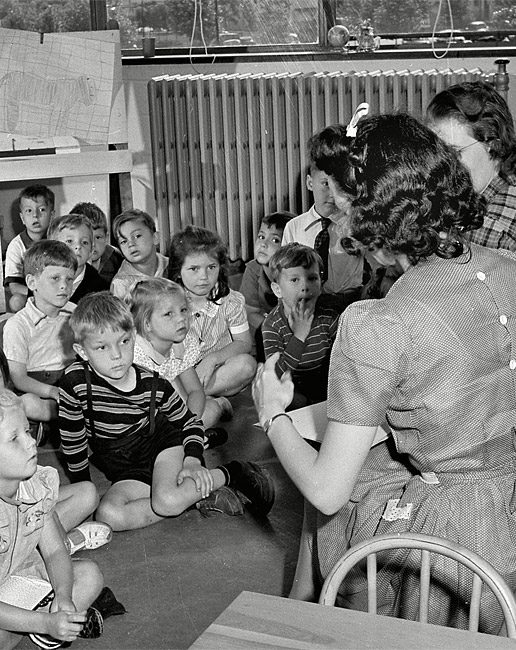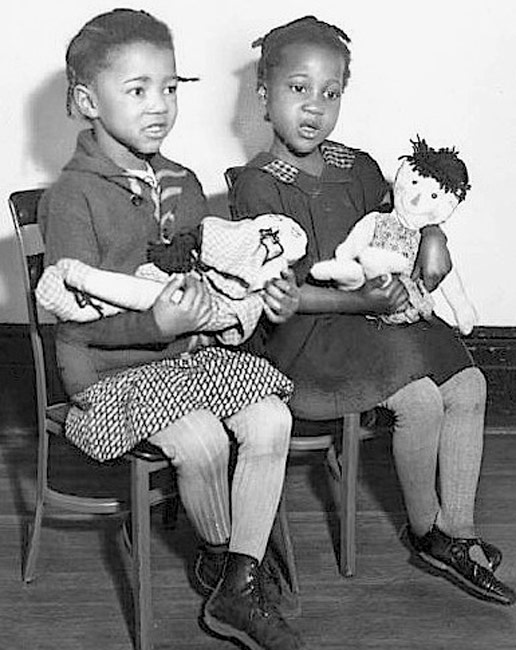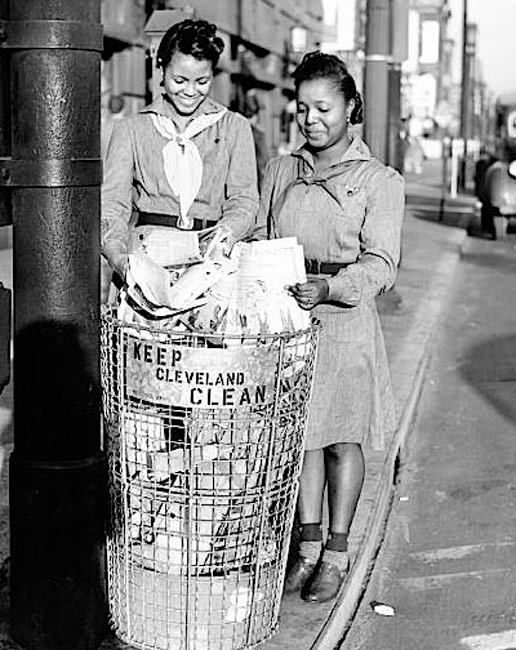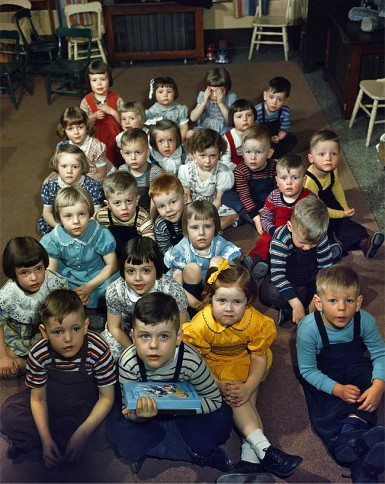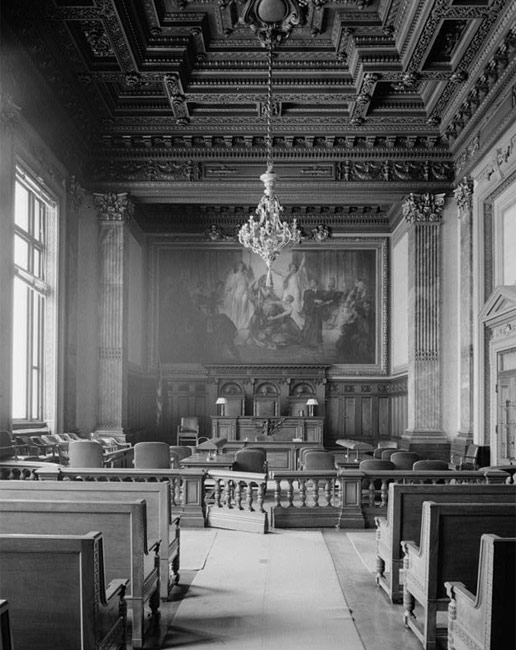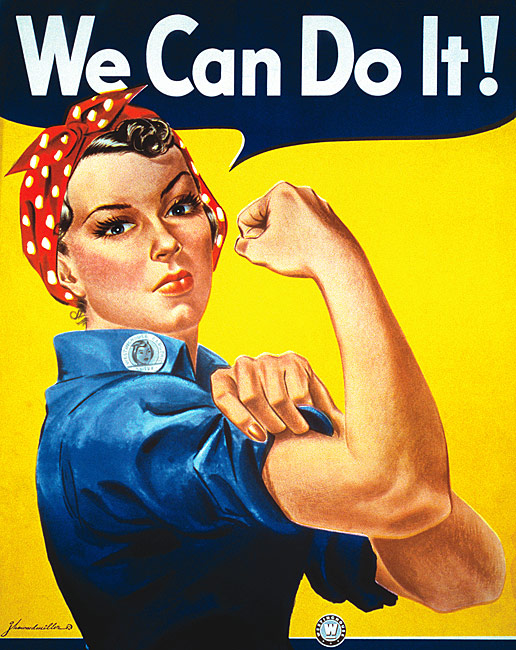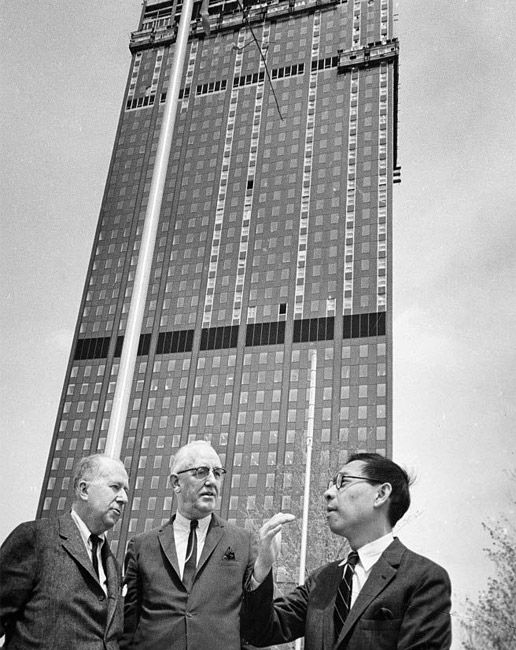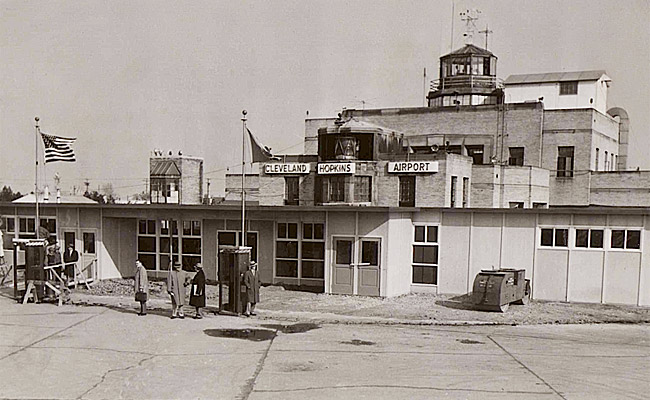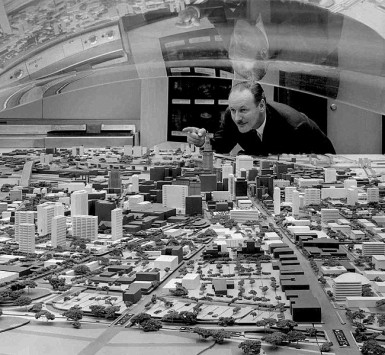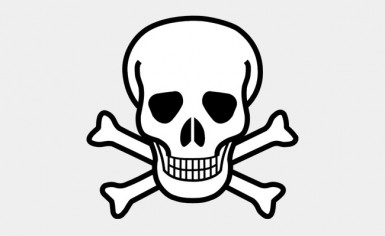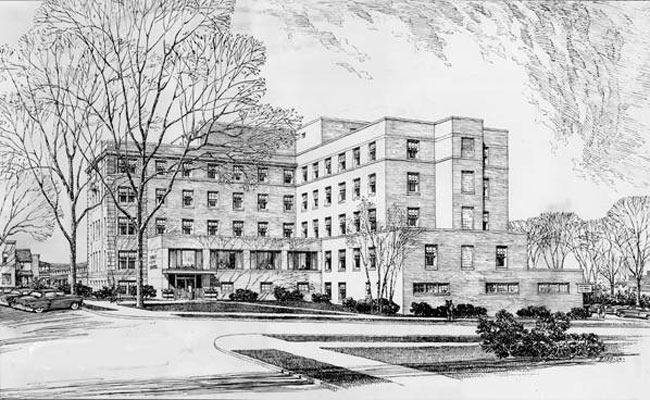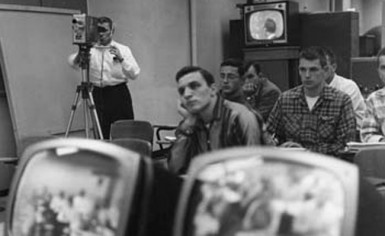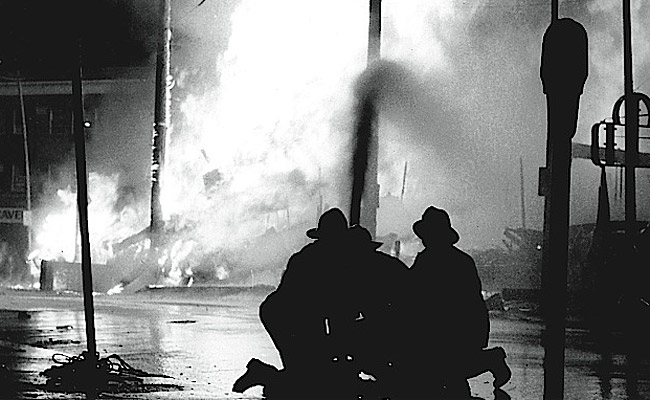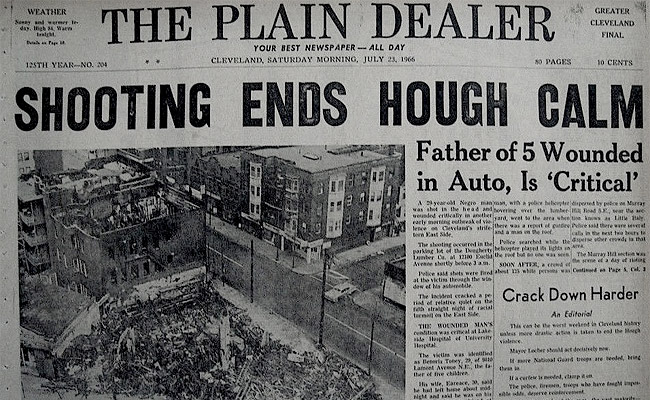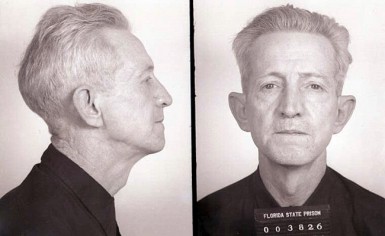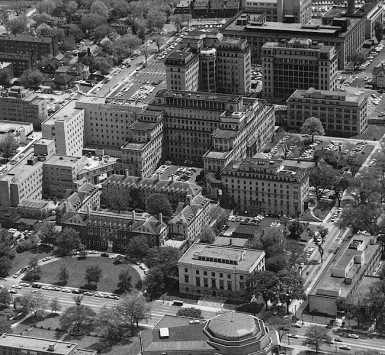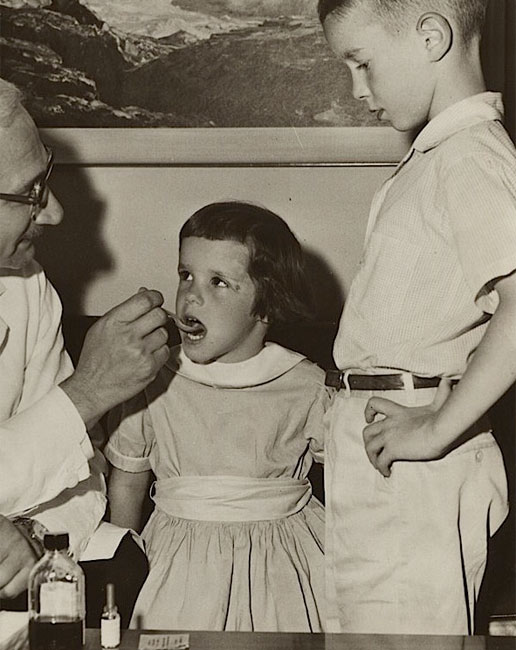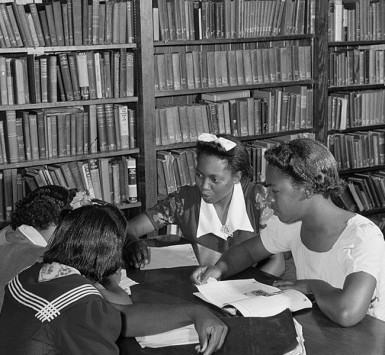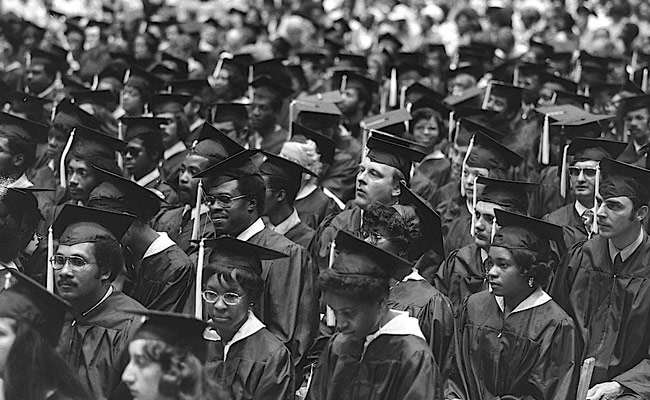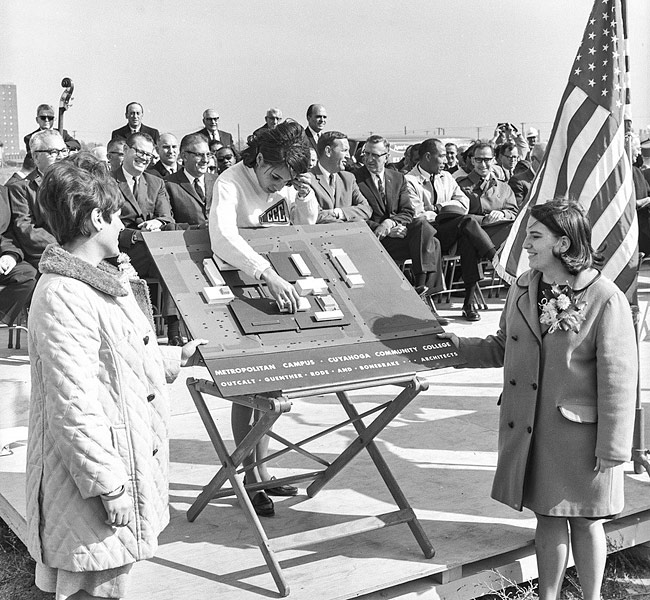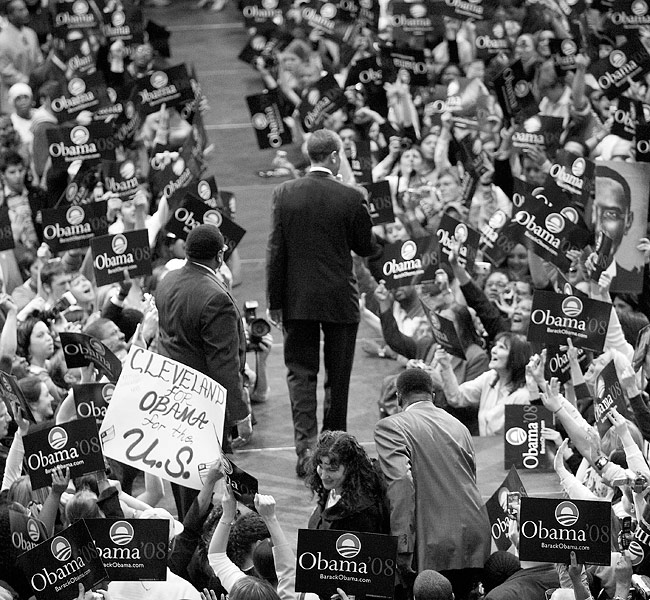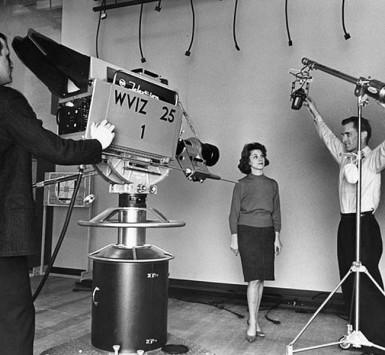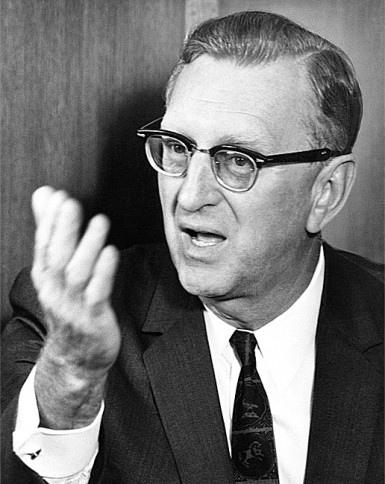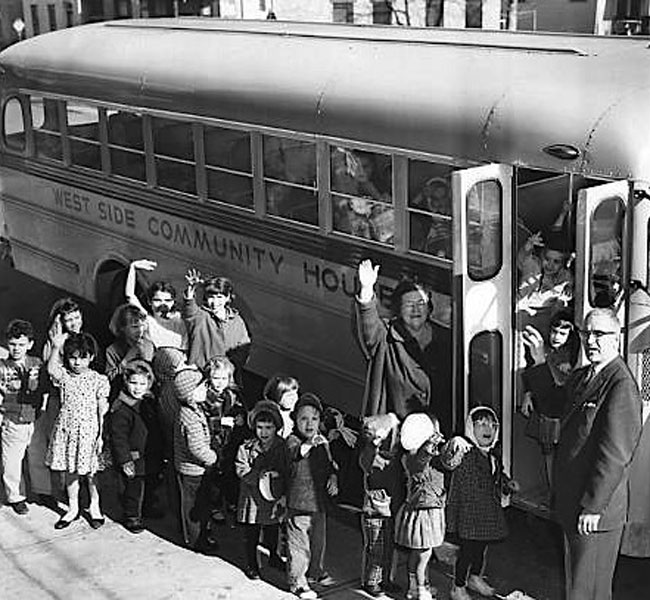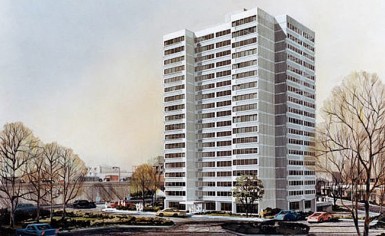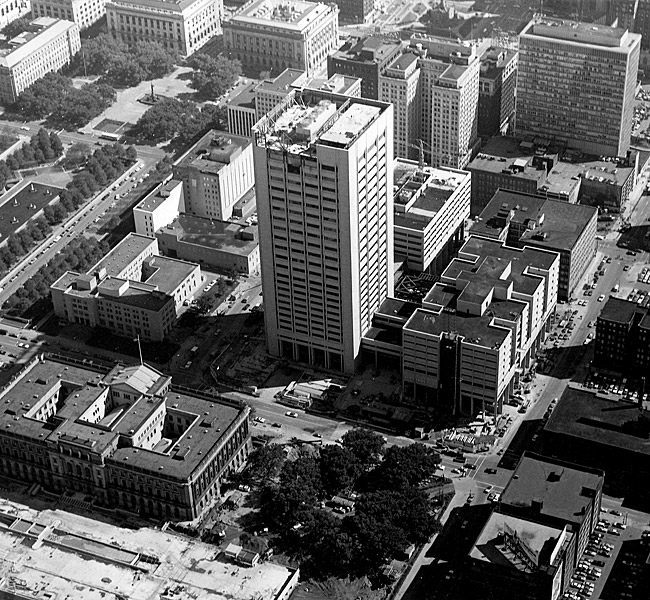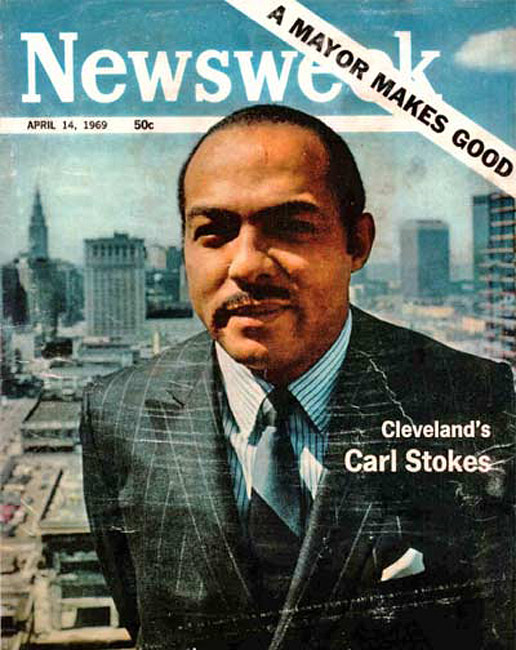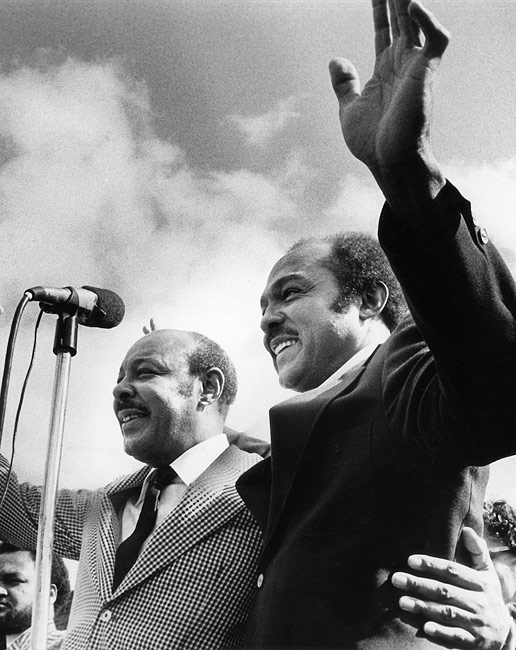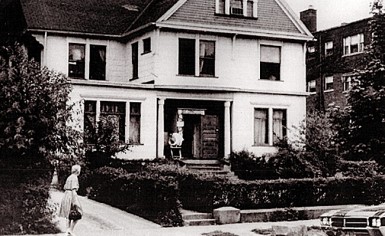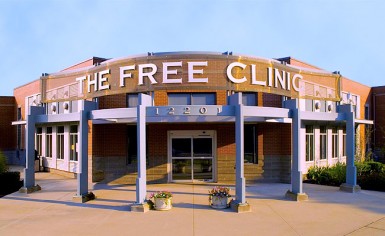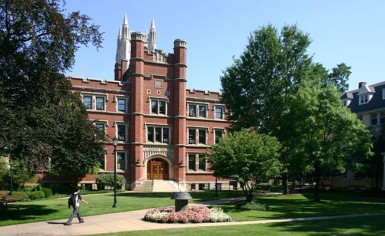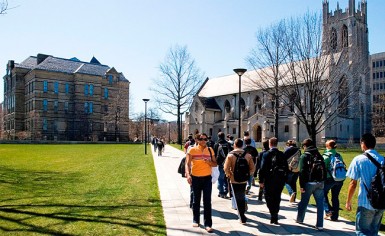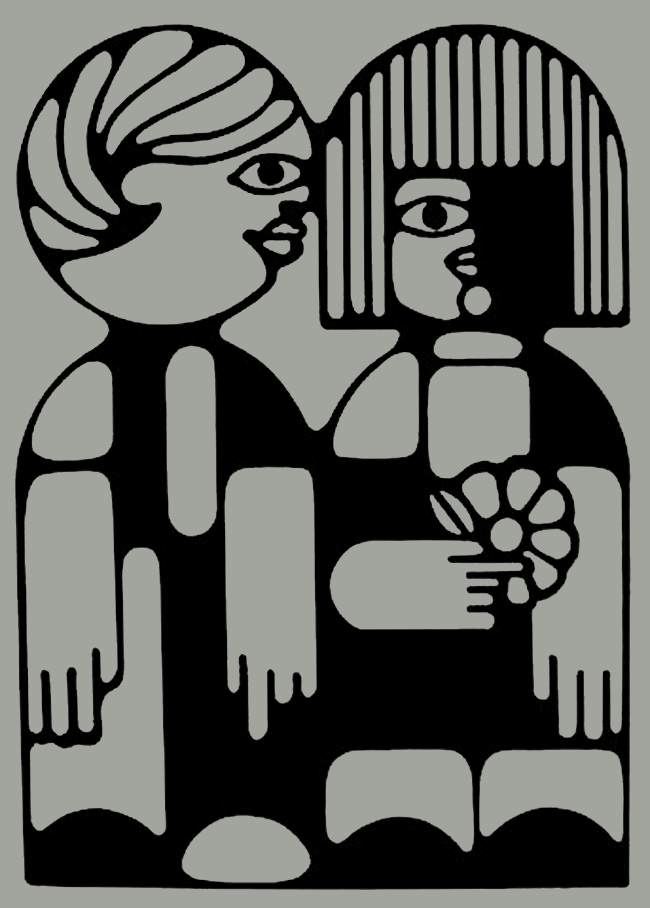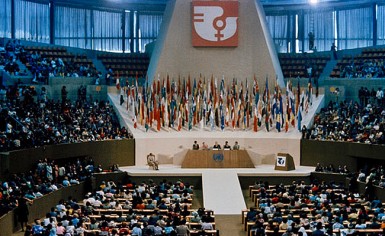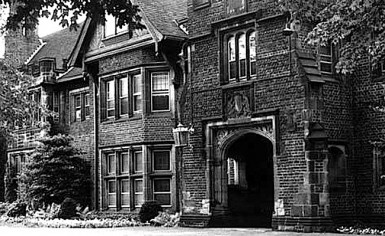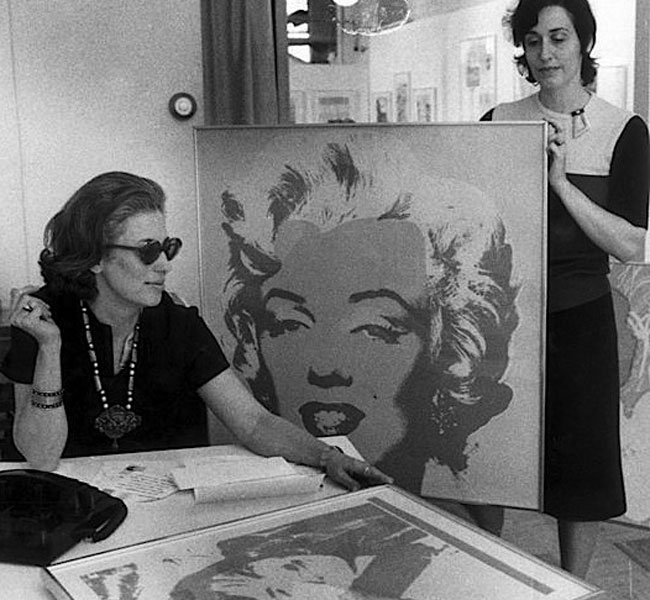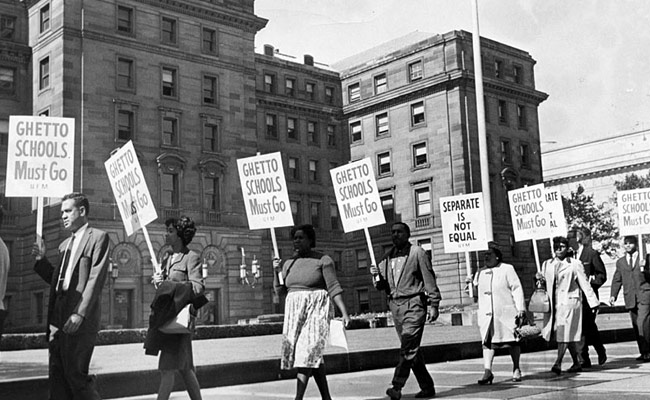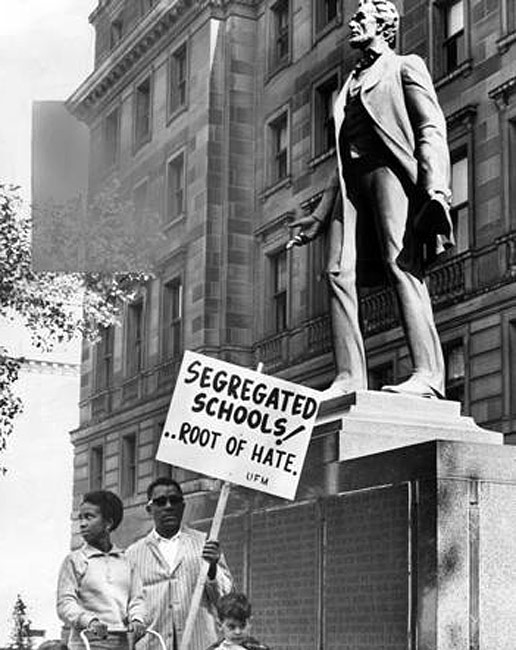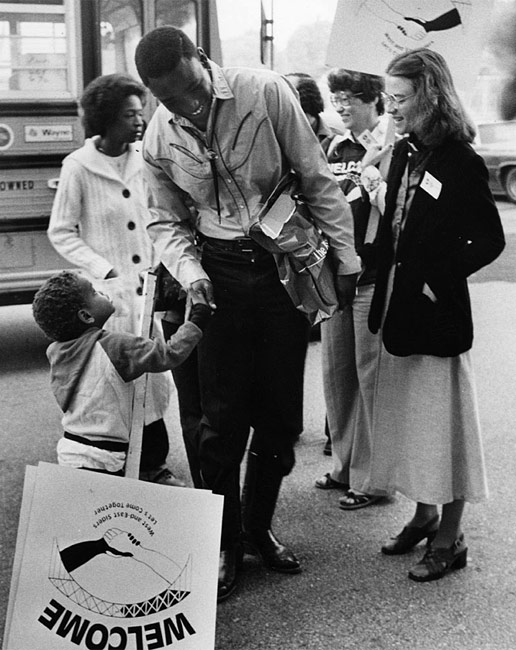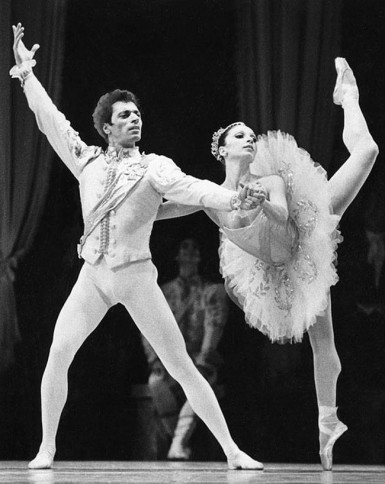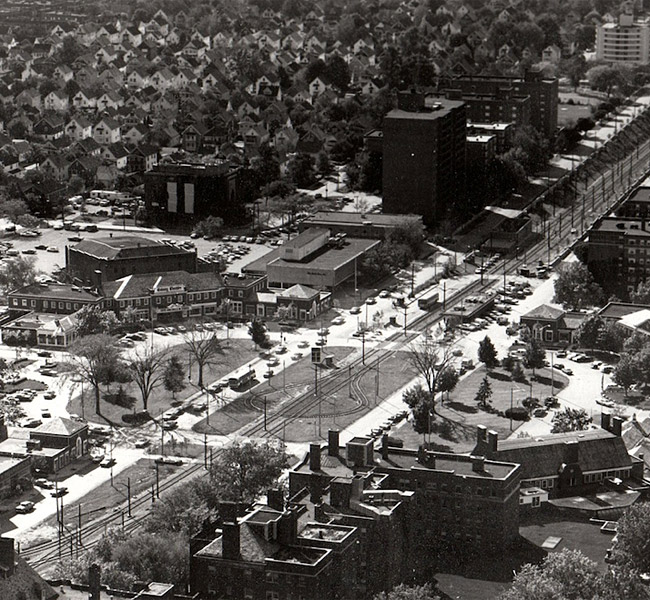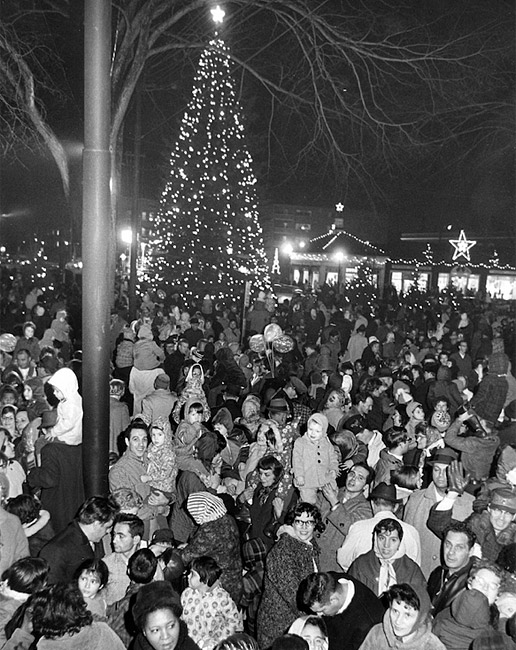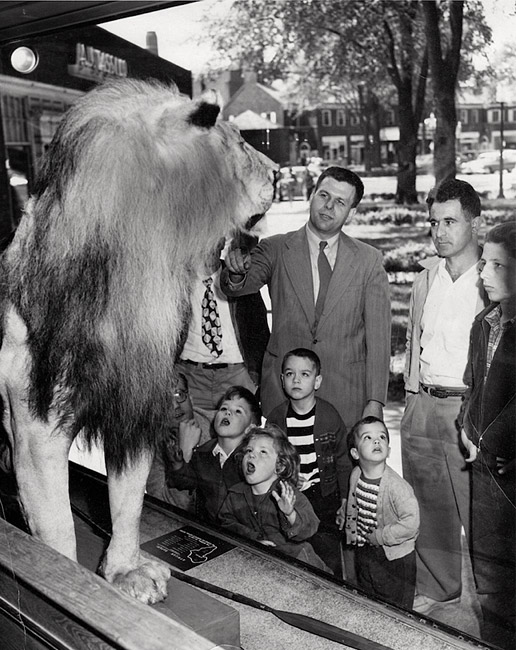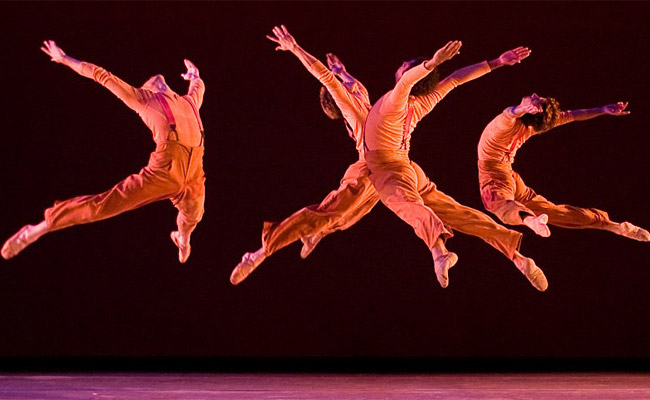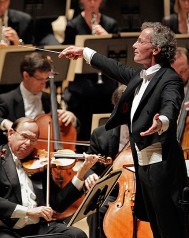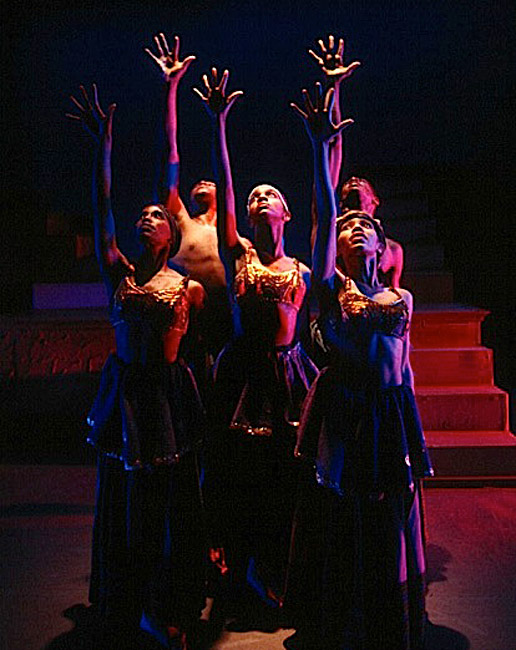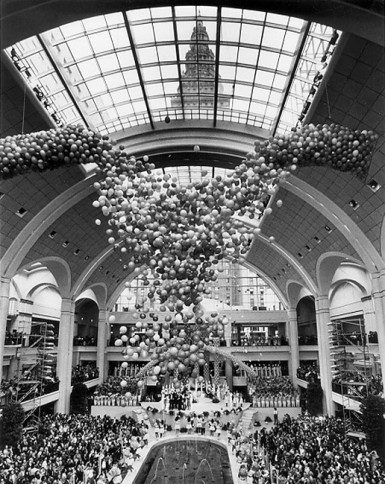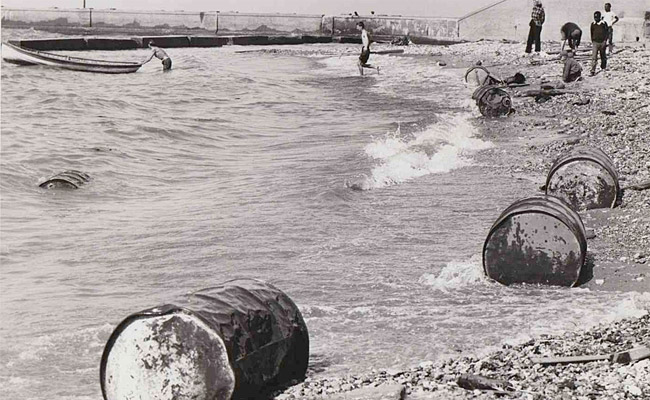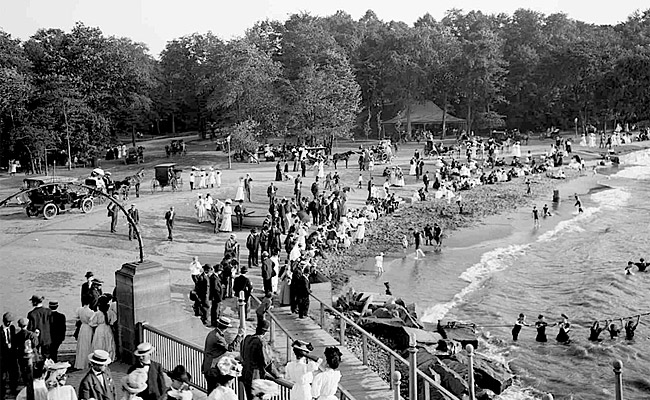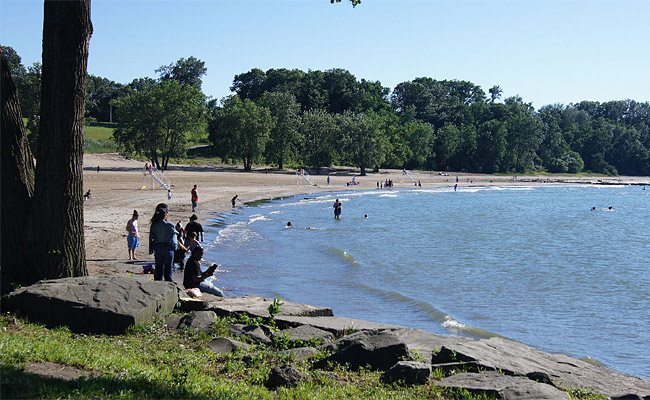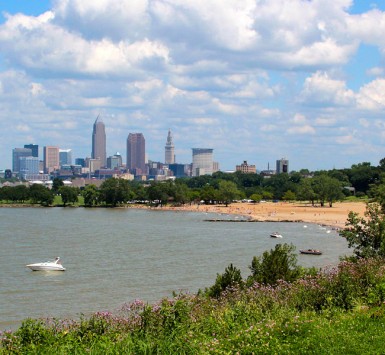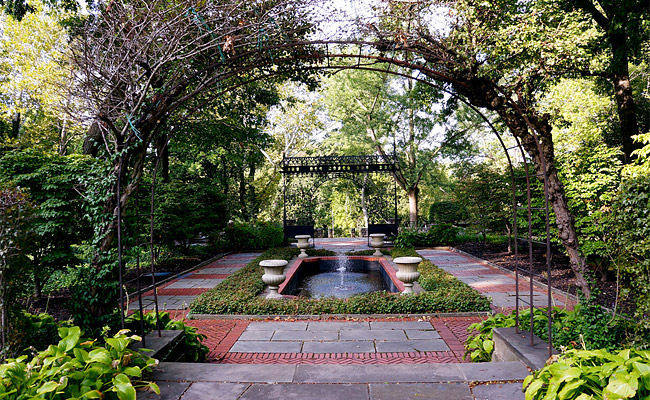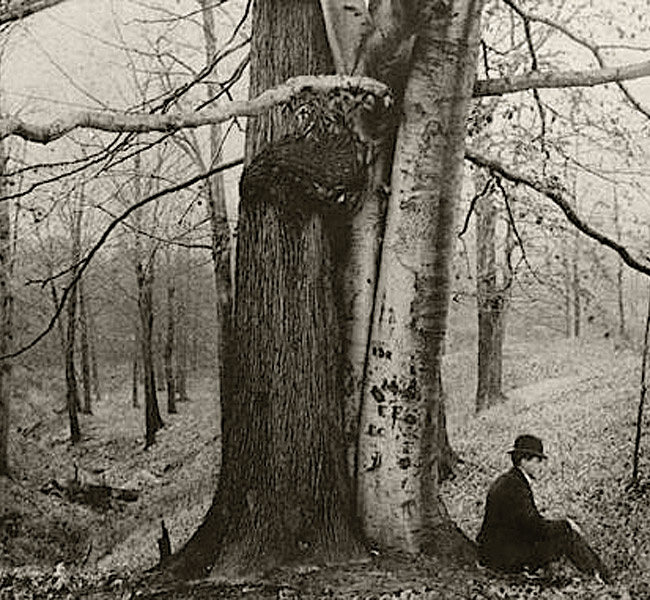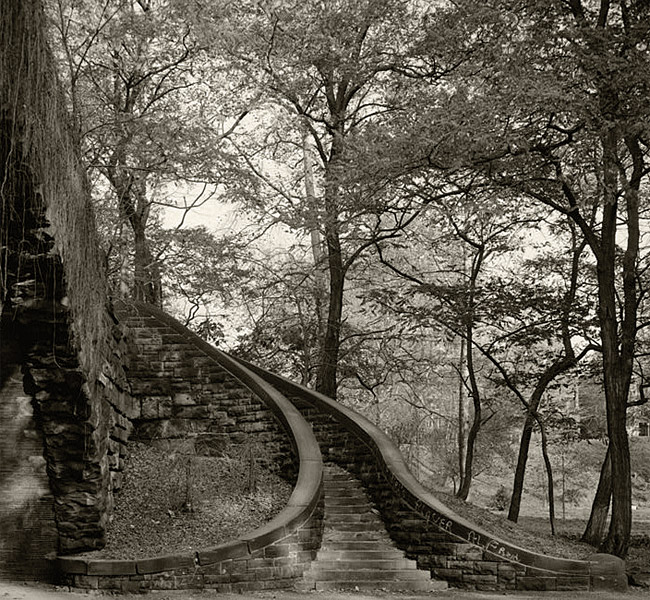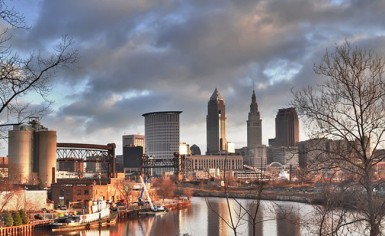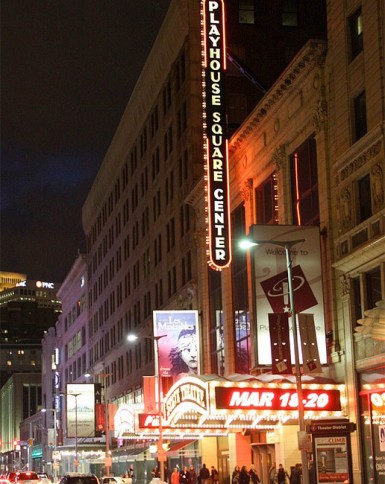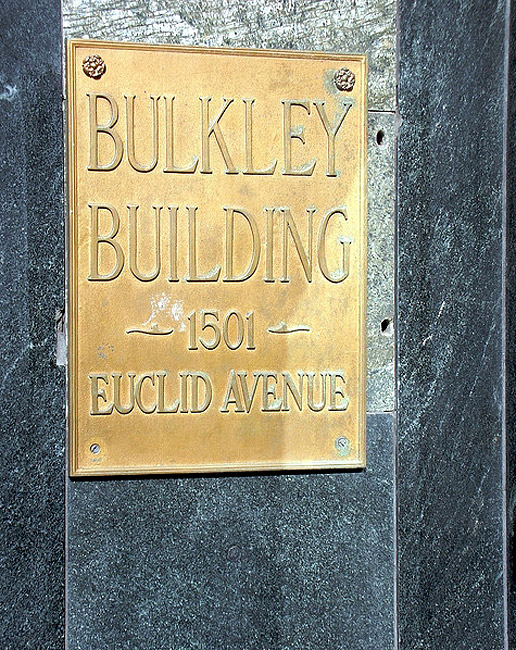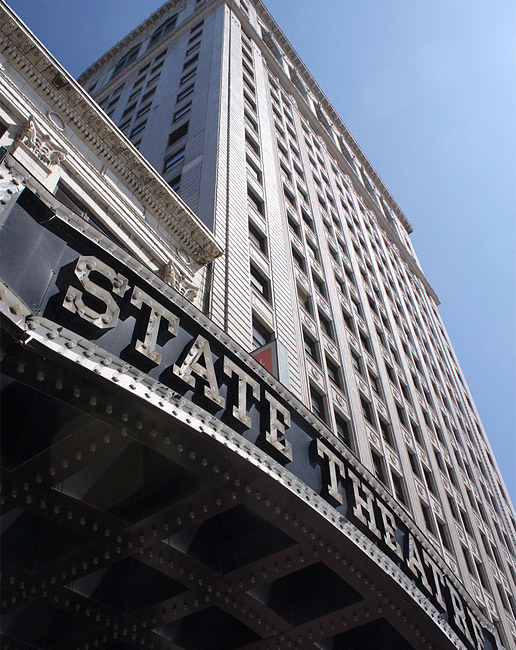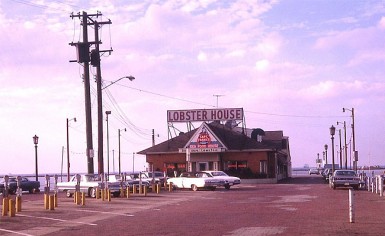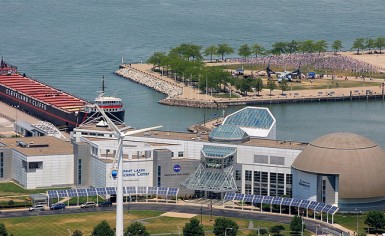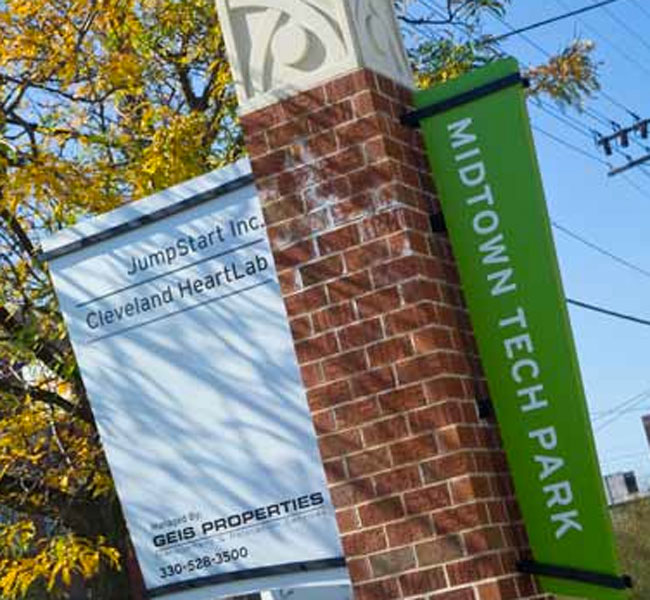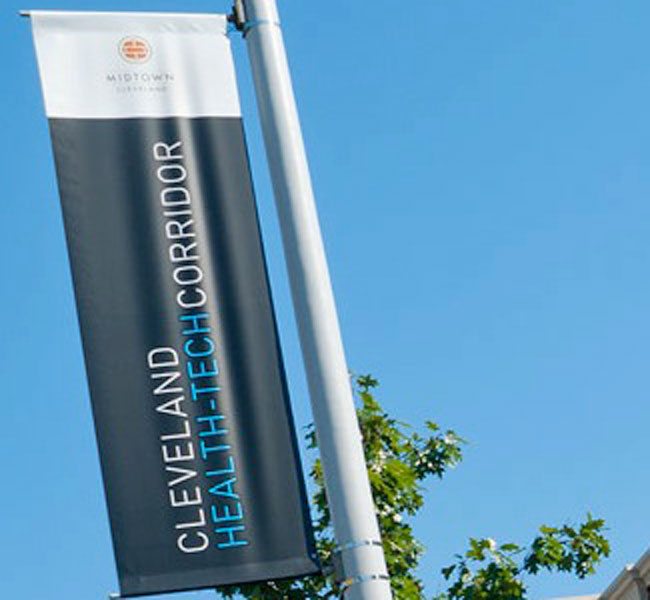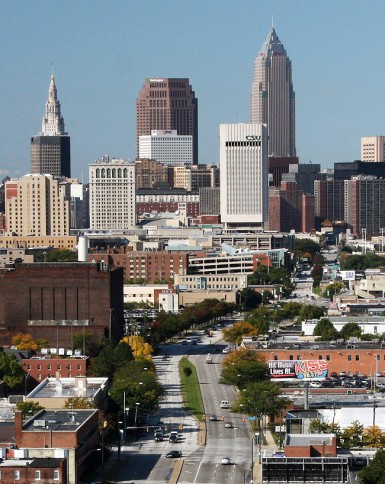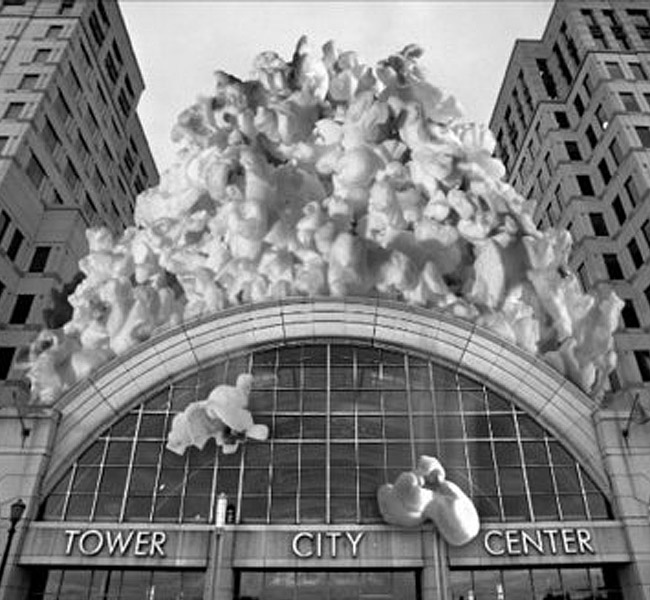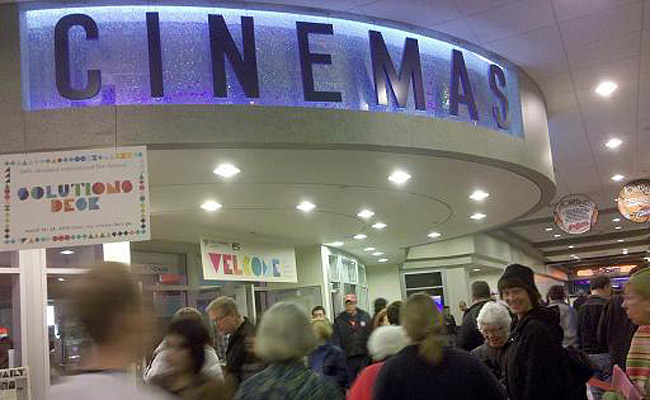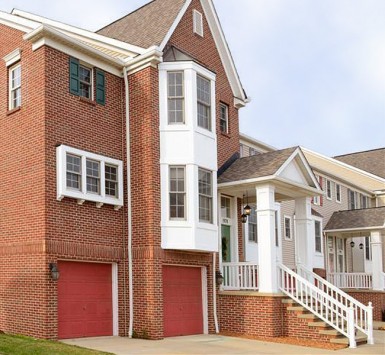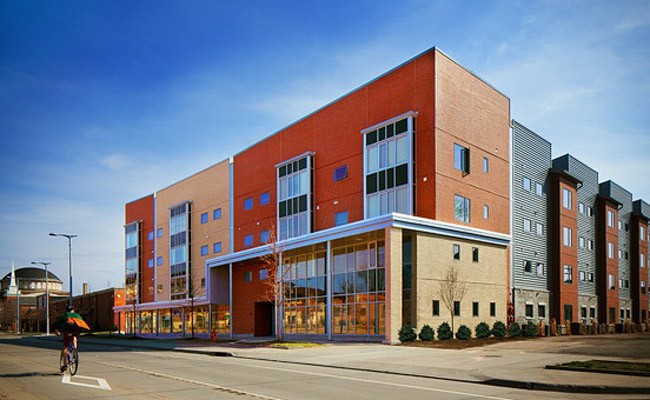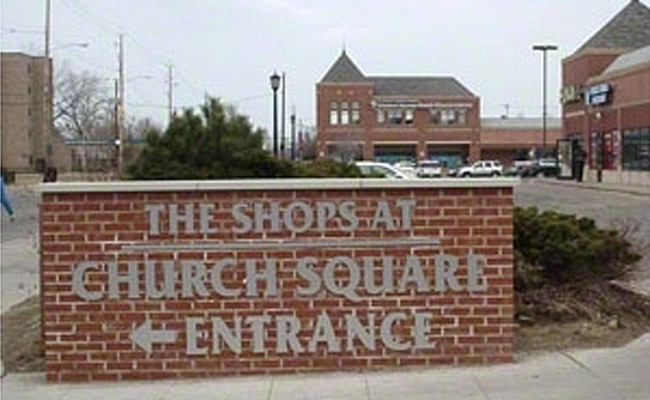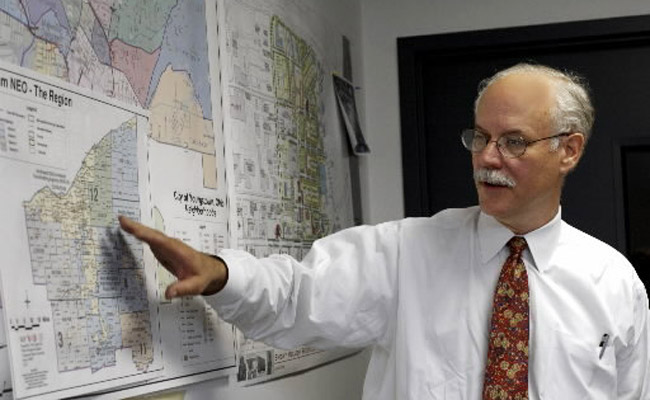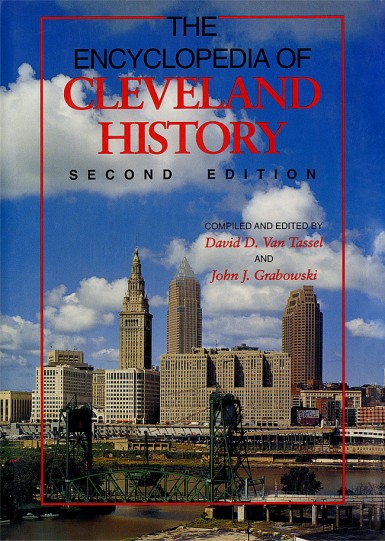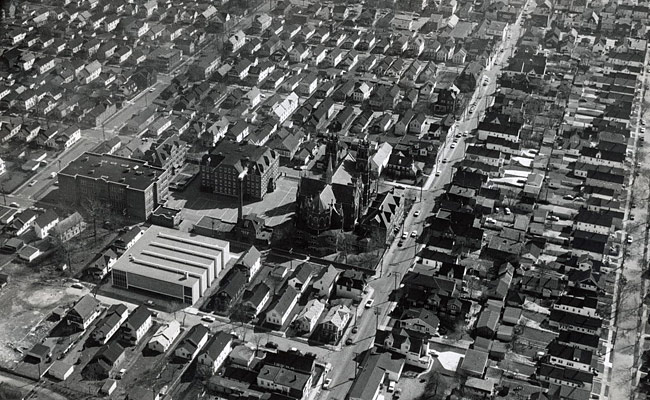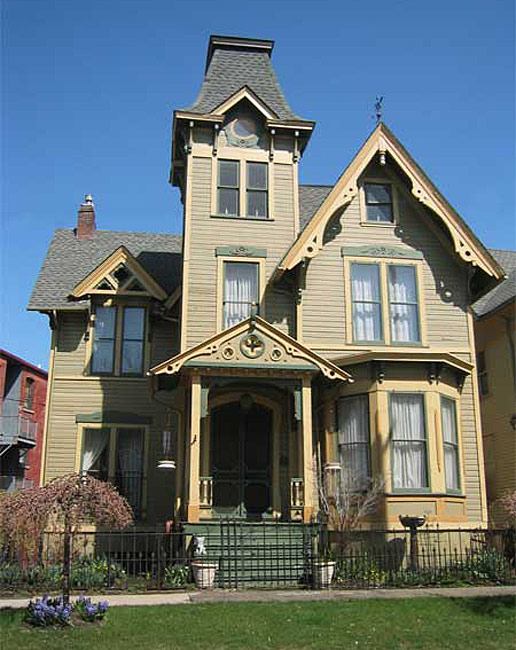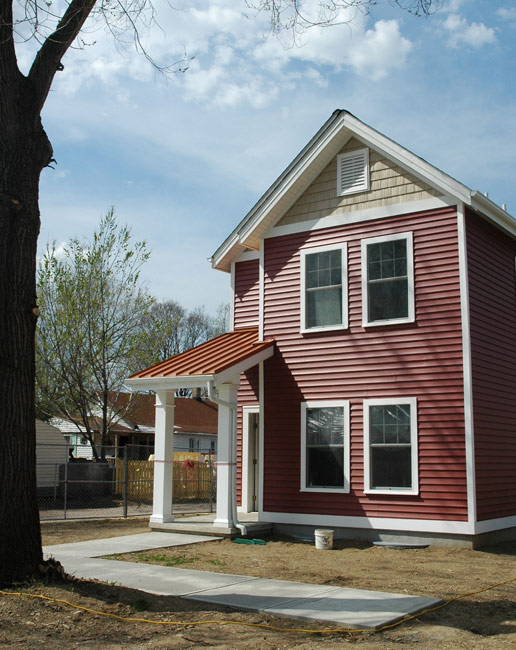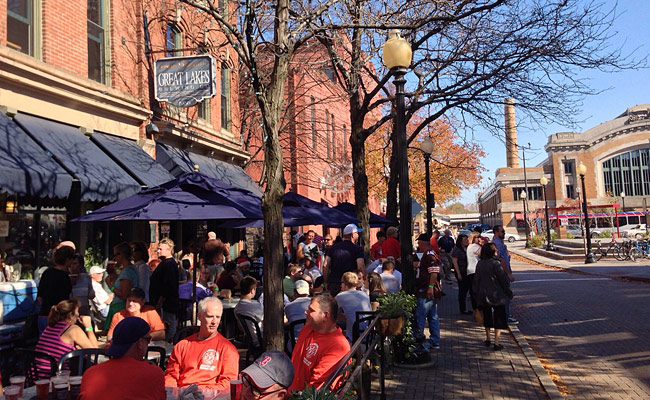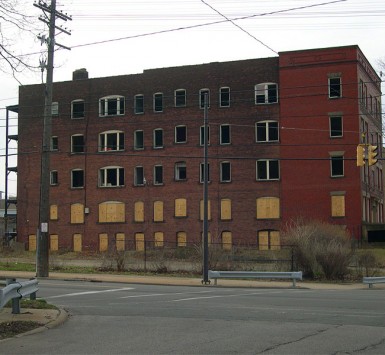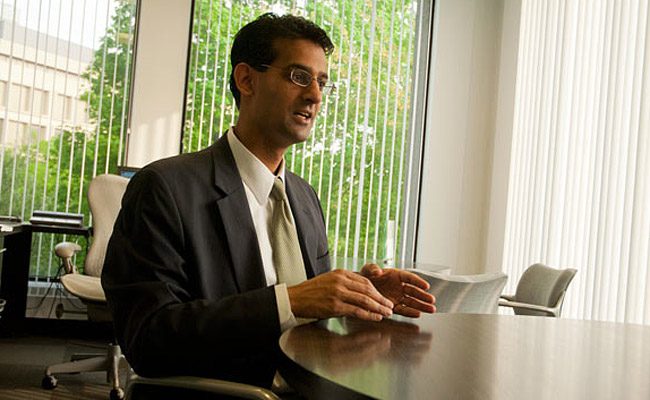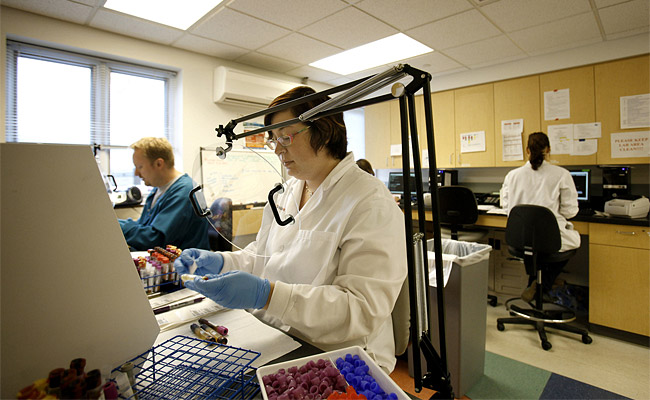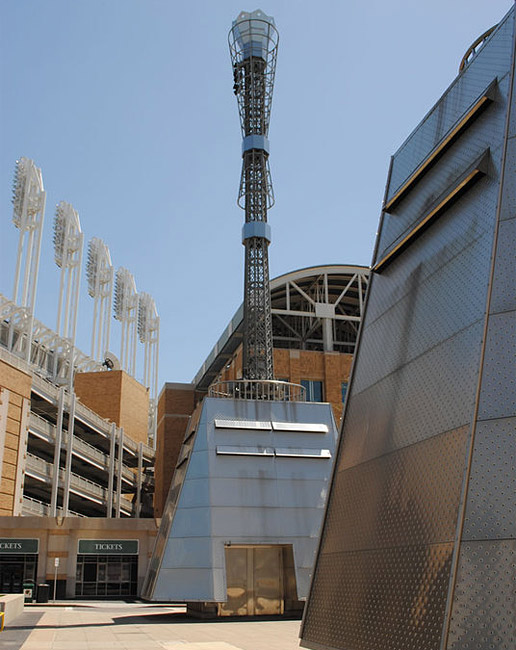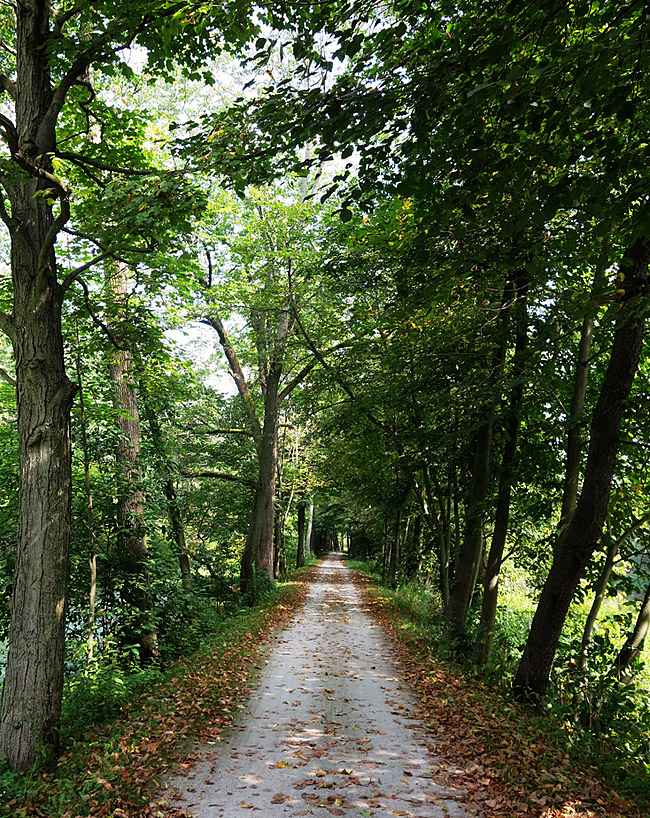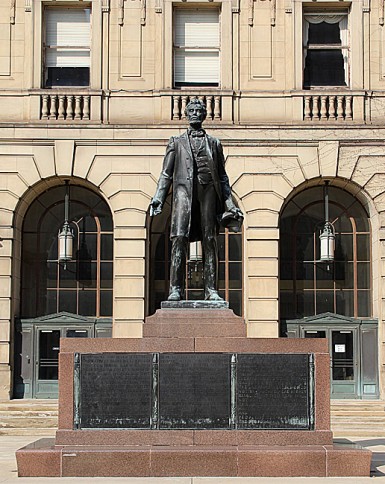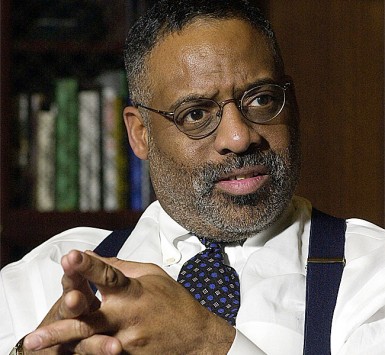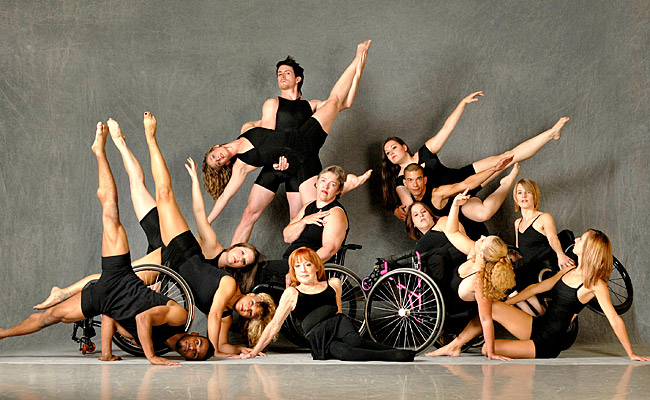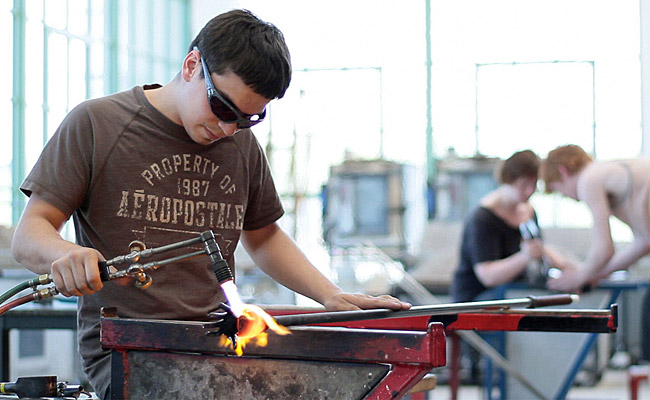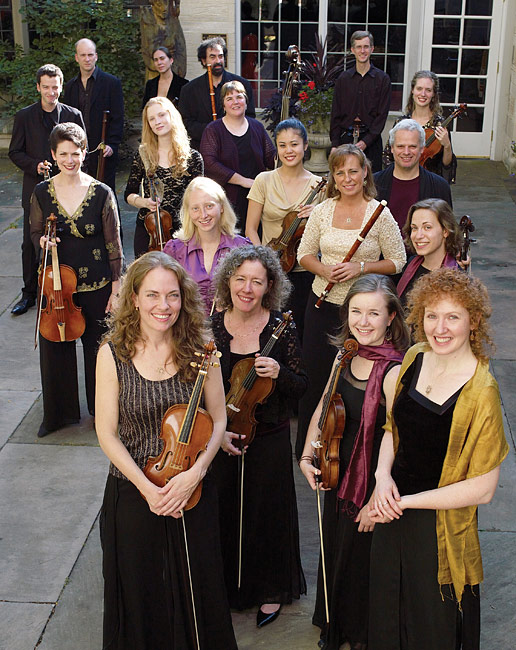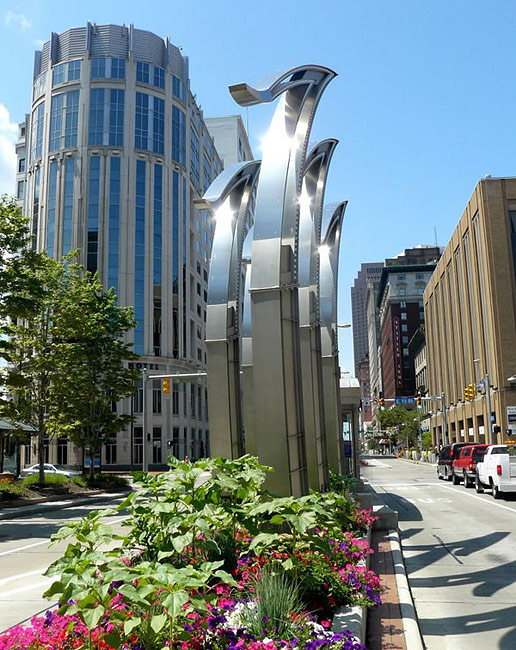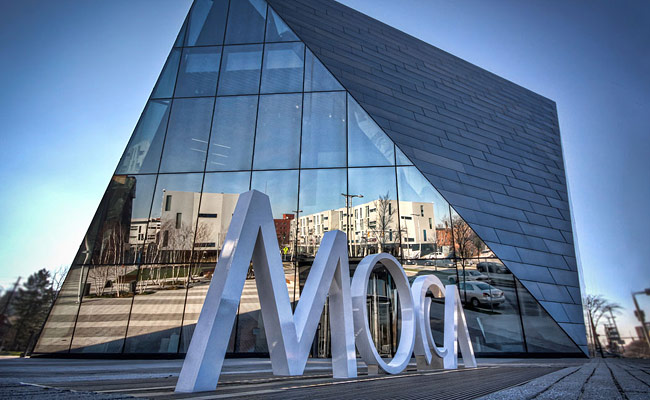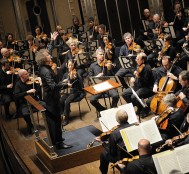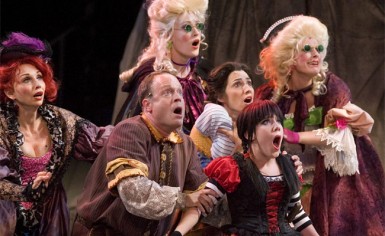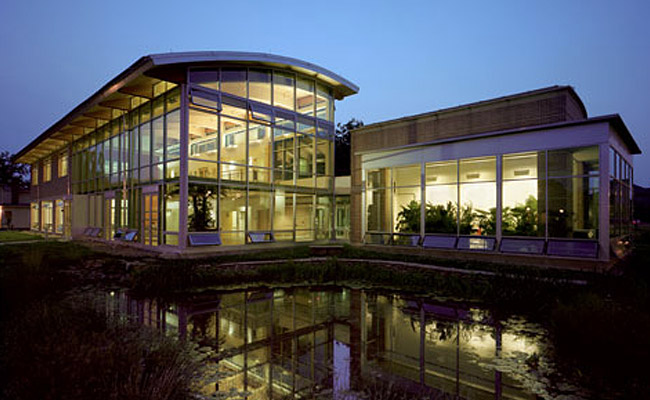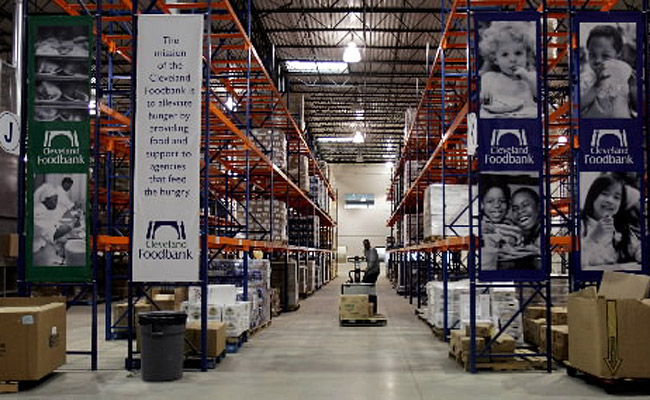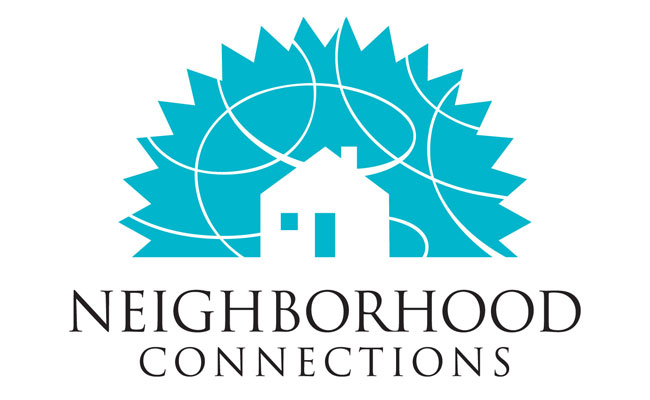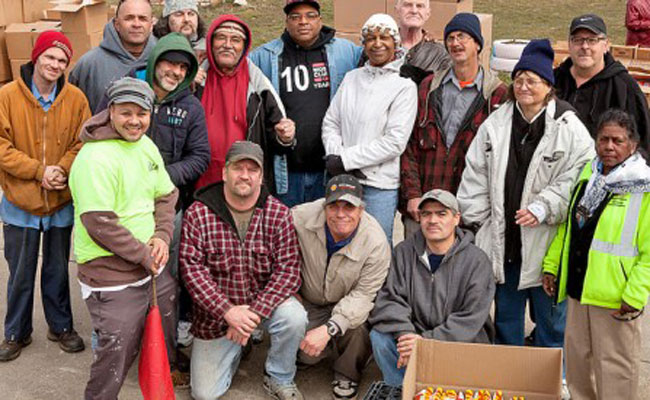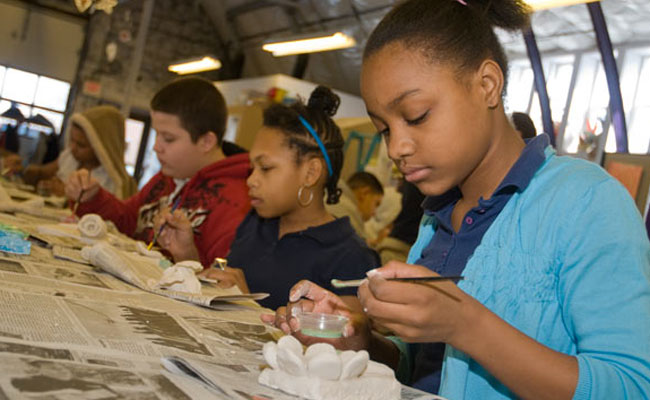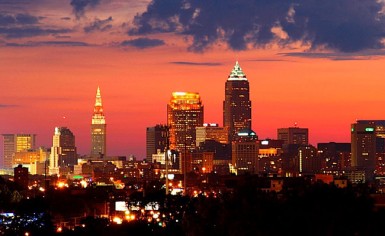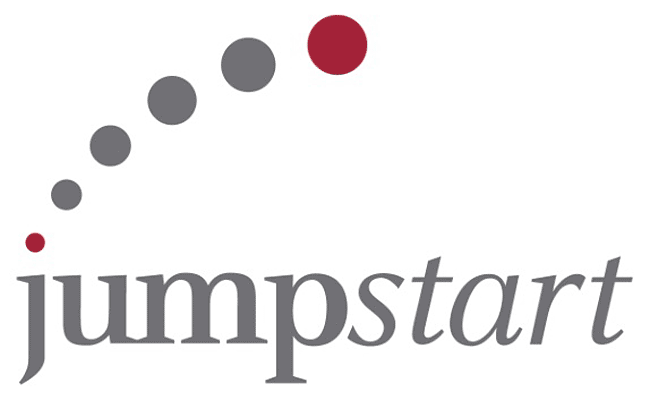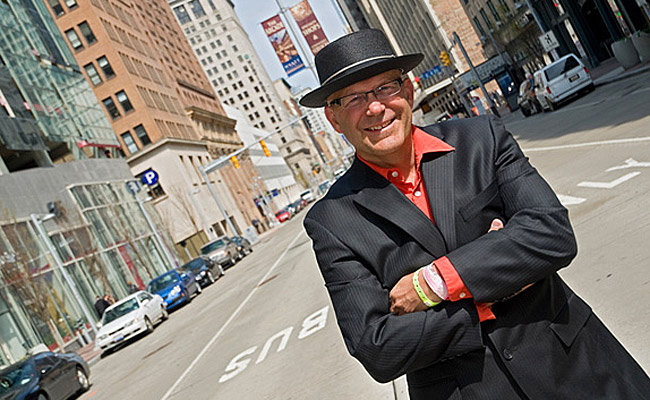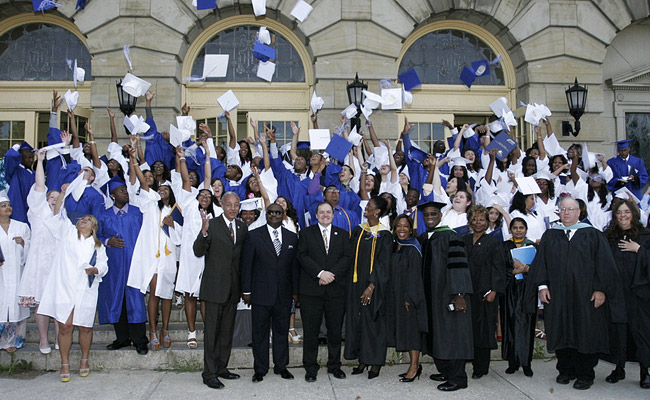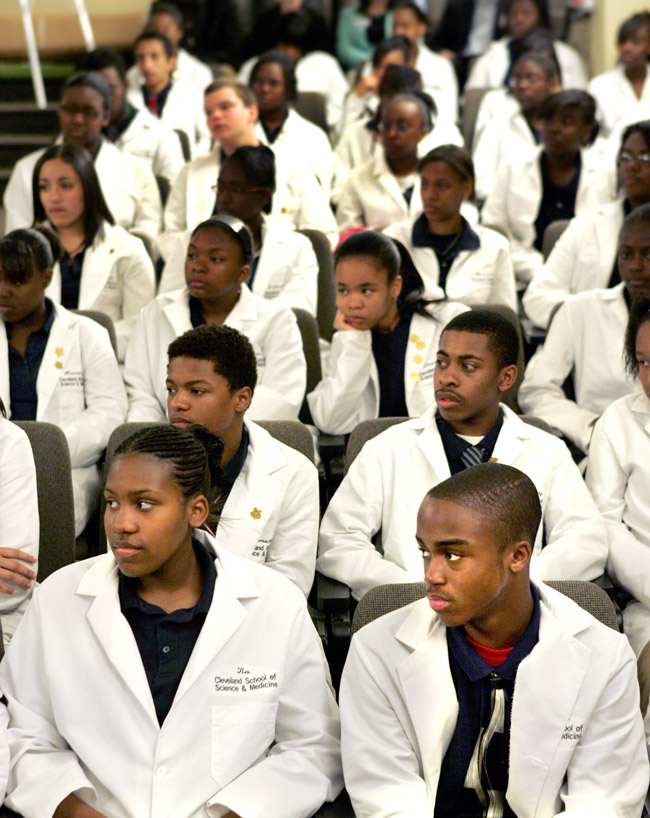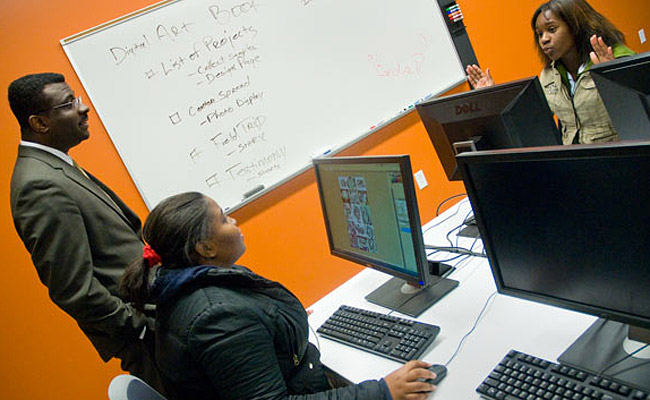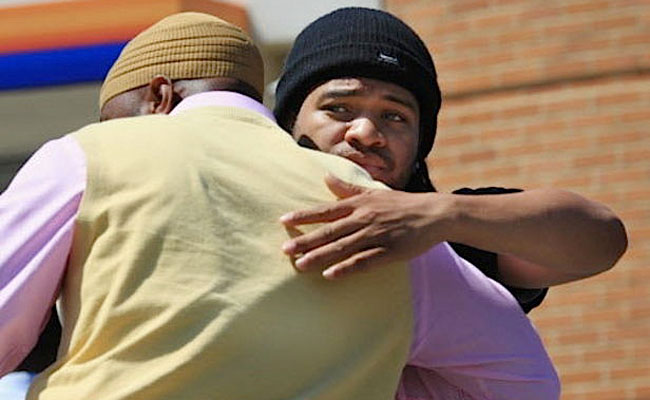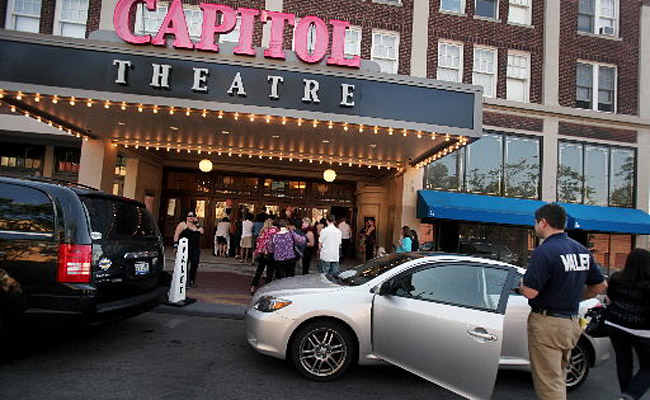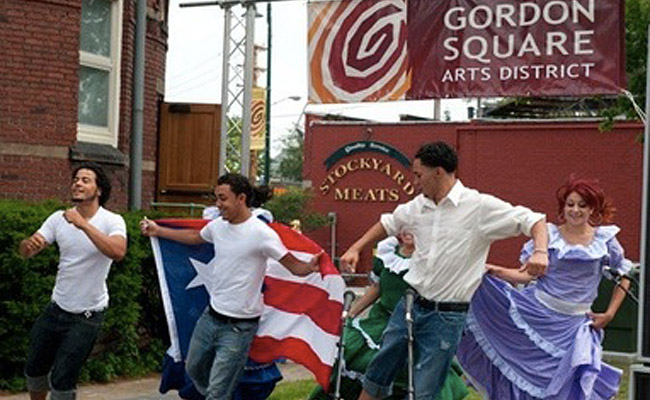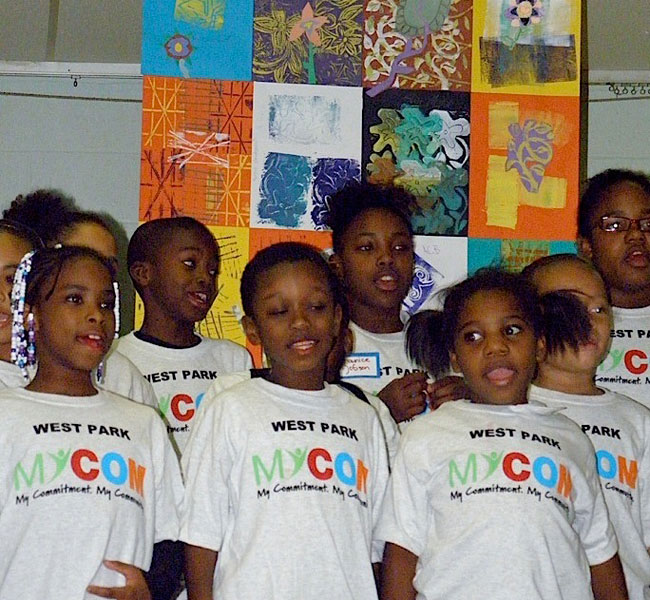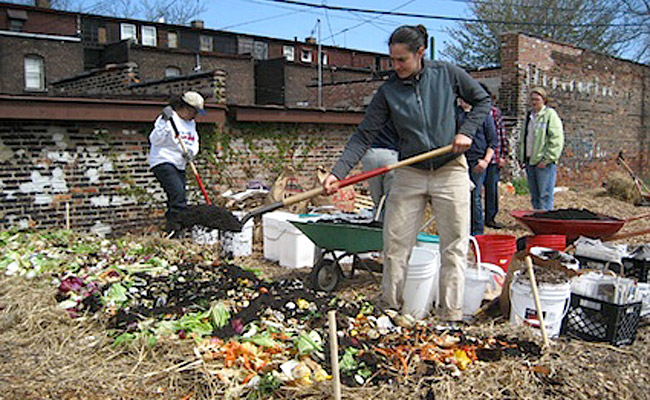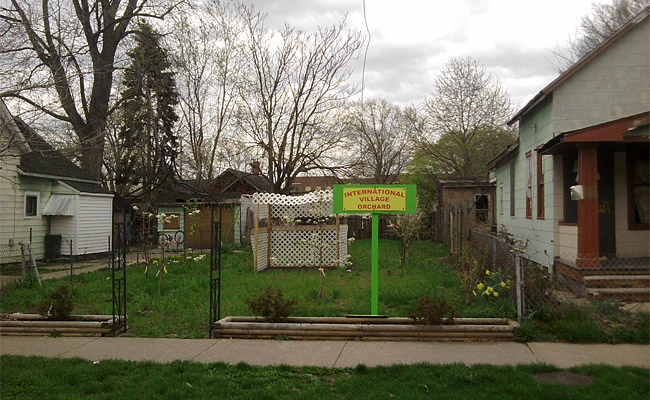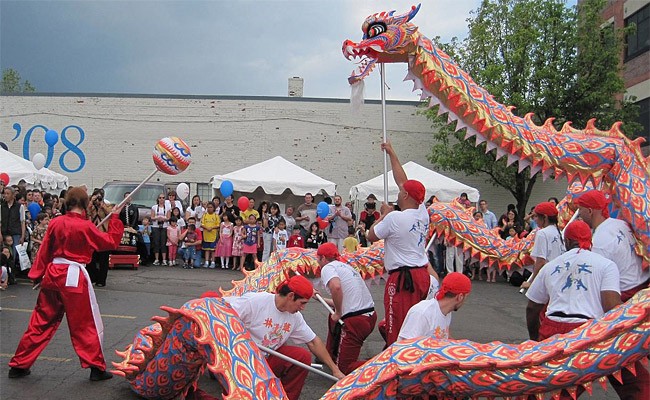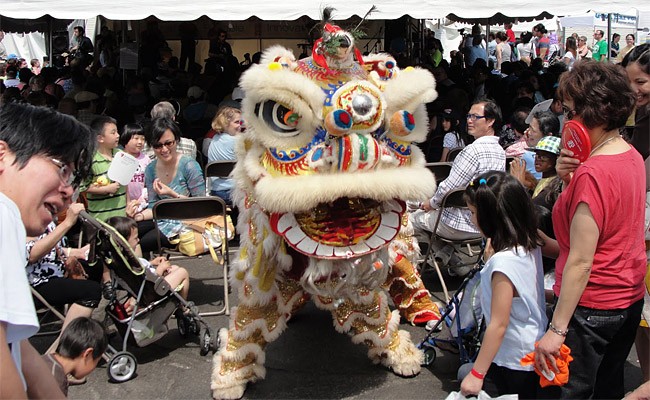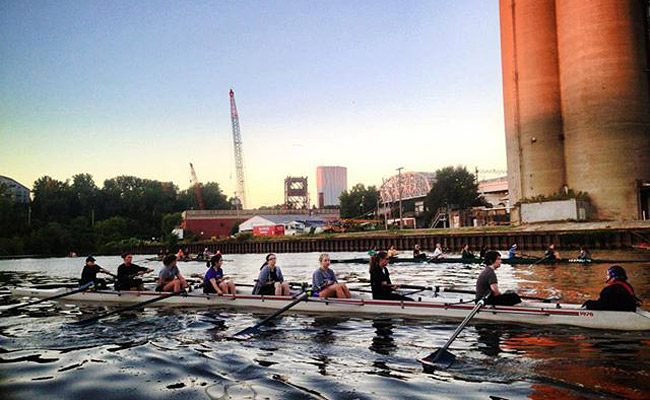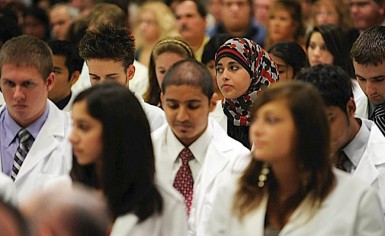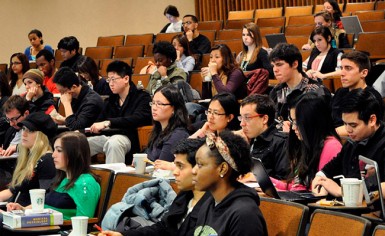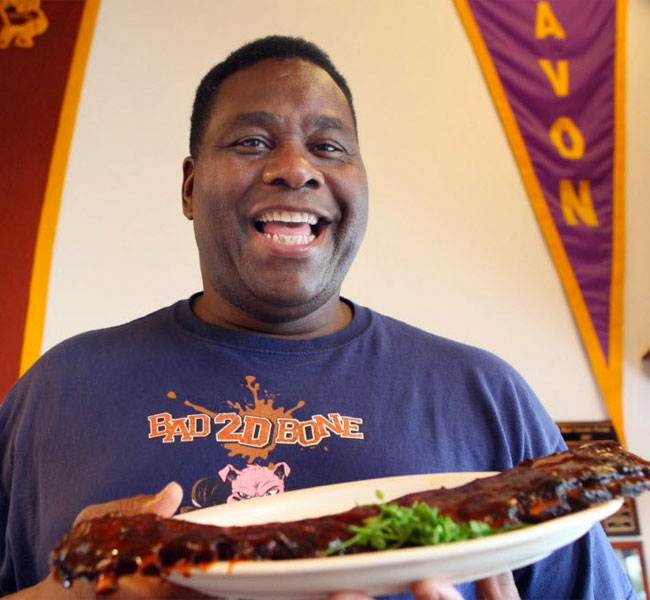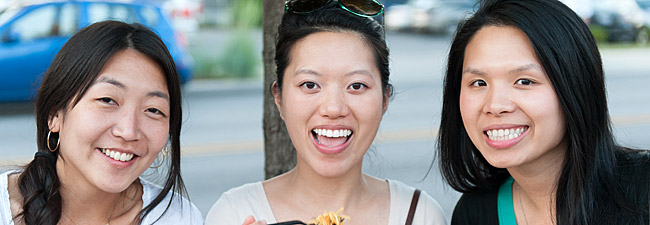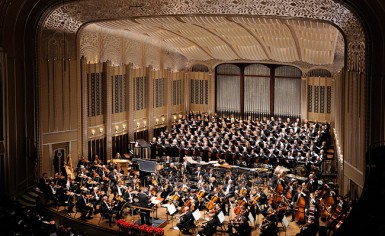Endowment
$0
Grantmaking
$0
Gifts Received
$0
Interactive
Graph
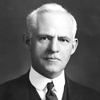
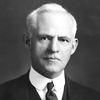
Talk to Fred
1914
Mary Coit Sanford
Donor of the Foundation’s First Bequest

On January 29, 1914, Mary Coit Sanford signed a last will and testament containing a bequest to establish five funds at the Cleveland Foundation. Her confidence in the new community trust, which was less than a month old, undoubtedly stemmed from the fact that Mary knew Fred Goff, if only by his sterling reputation. Mary grew up in Bratenahl, the Cleveland suburb where Goff had once served as mayor.
Descended from one of Cleveland’s founding families, Mary was notably civic-minded. She would help to found the Women’s City Club in 1916 and later chaired the Cleveland branch of the Women’s Committee of the Council of National Defense, a volunteer organization that sought to address local shortages of housing, fuel and food during World War I. Mary’s husband, surgeon Henry L. Sanford, would also participate in the war effort as a member of Cleveland’s famed Lakeside Hospital Unit, the first U.S. Army detachment to arrive in France in 1917.
Mary Coit Sanford died unexpectedly in 1926, less than a year into her tenure as a member of the board of the Cleveland public schools. Twelve years later, after the death of Mary’s husband, the Cleveland Foundation received her bequest of $40,000 (the equivalent of more than $650,000 today), to be divided among five designated funds. The beneficiaries of three of the funds were the Associated Charities, a philanthropic organization that provided direct relief to Cleveland families, and University Hospitals of Cleveland, the successor to Lakeside Hospital. Mary named the Harriet Fairfield Coit Fund and the William Henry Coit Fund in honor of her parents, who had nurtured her aspirations of earning a college degree. These latter funds provided scholarship monies in perpetuity to enable other young women to achieve their dreams by attending the College for Women of Western Reserve University.
1915
Landmark Public Education Study
“Nobody else dares do it.”
The Cleveland Foundation-commissioned survey of the city’s public schools provided a blueprint for sweeping reforms of an antiquated system unable to meet the educational needs of a flood of immigrant children. Two-thirds of the student population dropped out before the legally permissible age, the survey revealed. Interest in its recommendations for school improvement was intense. Members of the public packed a series of meetings at which overviews of the survey’s 25 reports were presented, and 90,000 copies of individual reports were sold here and internationally to persons concerned about public education reform.
Faced with an overwhelming consensus about the need for dramatic change, the school board hastened to recruit a new superintendent able to implement the survey’s proposals. As of 1923, when the foundation conducted a follow-up assessment of the survey’s impact, 74 of the 100 principal recommendations had been carried out or were in process. (See examples of these reforms.) The results justified the survey’s expense, which had been budgeted at $50,000. More important, the Cleveland Foundation’s qualification to provide bold civic leadership had been demonstrated. As foundation founder Fred Goff had said at the outset, “The schools are the very thing we ought to tackle. Nobody else dares do it.”
1919
Launch of the Cleveland Metroparks
The foundation’s call for an expansion in public recreational opportunities led to the first purchases of outlying parkland for what became the beloved “Emerald Necklace.”
The “Emerald Necklace,” as the famed Cleveland Metroparks are known throughout the region and beyond, began to take concrete shape thanks to foundation research. A foundation-commissioned study of Clevelanders’ leisure activities, completed in late 1919, recommended the creation of a council to advocate for the expansion of opportunities to partake of wholesome recreation. The Cleveland Recreational Council immediately began pushing for the passage of a special tax levy to allow Cleveland’s Metropolitan Park Board to make its first purchases of parkland in outlying districts. The levy passed, and the park board set about assembling what has become one of America’s premier park systems.
Today, the Cleveland Metroparks, which recorded more than 16 million recreational visits in 2012, encompasses the Metroparks Zoo and more than 22,000 acres of interconnected green space in 18 reservations. In 2013, the City of Cleveland’s six lakefront parks joined the system, adding an important new strand to the Emerald Necklace. With a startup grant from the foundation, the Metroparks has launched an Urban Beach Ambassadors program, a team of volunteers who will be on hand at Edgewater and Euclid/Villa Angela parks to help improve visitors’ enjoyment of the lakefront.
1927
First College Scholarships
Eighteen students received college scholarships ranging from $100 to $725, thanks to the establishment of the first foundation fund designated to provide financial assistance to worthy undergraduates. The Cleveland Foundation presently administers about 140 scholarship funds and has awarded more than $40 million in scholarships in the last 25 years alone (see video).
1930
Foster Home Demonstration Project
Seeking to reduce the number of orphaned or abandoned children required to live in institutions on a long-term basis, the foundation initiated a multiple-year demonstration project to be undertaken by two private welfare agencies, the Children’s Bureau and the Cleveland Humane Society, to test the feasibility of placing orphans in foster homes. The demonstration, which proved the benefits of foster family care, gradually reduced the reliance on institutional care here.
1931
Decisive Response to the Great Depression
Annual emergency allocations from the foundation helped the Welfare Federation meet a desperate need for social services.
Until President Franklin Roosevelt’s New Deal programs began, the Welfare Federation of Cleveland (now the Center for Community Solutions) stood as a principal bulwark protecting Clevelanders from the worst dislocations of the Great Depression. In the boom years preceding the stock market crash, the federation had annually raised millions to support the city’s nonprofit welfare organizations and agencies. With more than 100,000 Clevelanders on the breadlines as of 1931, the need for social services of all kinds had never been more urgent, yet it had become painfully clear that the federation would be hard-pressed to meet that year’s Community Fund goal of $5.35 million.
“Don’t worry, Mr. President,” Cleveland industrialist Samuel L. Mather, the father of the community chest concept, told Herbert Hoover when the president had appointed Mather to a committee charged with mobilizing a national relief effort earlier in the year. “Cleveland will take care of its own.”
On the last day of the drive, the fate of the campaign remained uncertain. That evening, 8,000 campaign solicitors gathered downtown in Public Hall to learn the final tally. The audience groaned over the news that an 11th-hour contribution of $150,000 from the estate of Samuel Mather, who had died a few months before, had not pushed the campaign over the top. Then Carl W. Brand took the podium. A Cleveland Foundation trustee, he announced the foundation’s contribution of $75,000, arranged that very day. With the foundation’s timely intervention, the Community Fund surpassed its goal by $30,000, enabling the welfare federation to fully fund its agencies’ increased requests for operating support.
The deepening Depression forced the federation to call again on the Cleveland Foundation the following year to rescue the Community Fund. The foundation continued to make an emergency allocation to the Community Fund every year thereafter until socioeconomic conditions began to stabilize after World War II and private donations once again enabled the welfare federation to take care of Cleveland’s own.
1931
Harry Coulby Funds
Much-Needed Support for Core Grantmaking
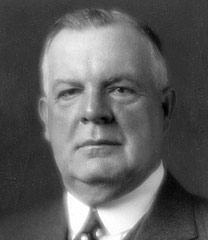
A $3 million bequest from Harry Coulby (see video), received in 1931, may have prevented the Cleveland Foundation’s demise during the Great Depression. There is no question that it gave the foundation the means to aggressively promote child welfare.
Having conceived a fascination for the Great Lakes as a boy growing up in Lincolnshire, England, Coulby stowed away to America as a young man of 19. He arrived in New York City in 1884 with experience as a railroad telegrapher under his belt, then made his way to Cleveland on foot, working odd jobs for his meals or a little cash. Finding it impossible to secure a job on a Great Lakes steamship, he became a stenographer for the Lake Shore and Michigan Railroad. An advertisement placed by John Hay, who had served as a private assistant to President Lincoln and U.S. Secretary of State under President McKinley, subsequently caught Coulby’s eye. Hay was looking for a secretarial assistant to help him complete work on a biography of Lincoln, and Coulby fit the bill.
With the 10-volume biography finished in 1886, Coulby accepted an offer from Hay’s brother-in-law, Samuel Mather, to become a clerk at Pickands, Mather & Company, a recently formed Cleveland-based partnership that supplied raw materials to the steel industry. Within a decade, Coulby had assumed command of the company’s fleet of lake freighters and been promoted to the position of partner, assembling a personal fortune in the process.
Upon his death in 1929 at the age of 64, the “Czar of the Great Lakes” left an estate of more than $4 million, the equivalent of about $62 million today. The Cleveland Foundation’s receipt of the bulk of the estate catapulted the foundation into the ranks of the country’s five largest community trusts. More important, it cushioned the foundation from the impact of the Depression, which put several modestly endowed counterparts in other cities out of business.
The Coulby bequest divided his gift equally between two named funds, which have a combined value of more than $90 million today. The first fund was designated for the support of a favored charity of Samuel Mather, Cleveland’s Lakeside Hospital (the predecessor of University Hospitals of Cleveland). The envisioned purposes of the second fund significantly influenced the direction of the foundation’s grantmaking. Perhaps motivated by his own childlessness, Coulby specified that half of the annual income from his gift should benefit “sick, crippled and needy children.” With these broadly restricted dollars, the Cleveland Foundation has commanded the resources to support innovative child welfare programs ever since.
1933
Experimental Polio Research
The foundation made what may be its first medical research grant, awarding $500 to support a City Hospital physician’s study of the causes of poliomyelitis. John A. Toomey, M.D., who was also a professor of clinical pediatrics and contagious diseases at the medical school of Western Reserve University, continued to receive foundation backing through the early 1940s. One of the leaders of the international search for a suspected polio virus, Toomey was unable to confirm in exhaustive clinical trials the hypothesis that polio could be passed from one individual to another. The pre-eminence of his medical practice—he was one of the first physicians in the country to prescribe physical therapy for polio patients—was a contributing factor in City Hospital’s designation by the National Foundation for Infantile Paralysis as national respiratory care center in the 1950s.
1933
Paving the Way for Public Housing
A master plan to replace 1,000 acres of delapidated housing with low-income garden apartments was prepared by a private redevelopment corporation chaired by the foundation’s director.
None of the many civic responsibilities that Leyton E. Carter shouldered as an expected complement to his position as the Cleveland Foundation’s director proved more significant than his chairmanship of Cleveland Homes, Incorporated. This private housing corporation was formed in 1933 to implement a program of slum clearance and low-cost housing construction to be financed by a $12 million allotment from the Federal Emergency Administration of Public Works (PWA).
With blight swallowing up fully one-fourth of Cleveland’s total acreage, Cleveland Homes prepared a master redevelopment plan that called for 1,000 acres of east-side slums to be replaced with new streets and speedways linking low-income garden apartments with stores, schools and other public buildings.
The plan was never fully realized because Cleveland Homes proved unable to raise an additional $2 million required by the federal government. Nevertheless, during his brief tenure as chair of the housing corporation, Carter helped to lay the groundwork for the construction of the first three public housing projects in America. Before PWA decided in early 1934 to assume full responsibility for the first 1,028 units Cleveland Homes had planned to build, the housing corporation had commissioned all the necessary architectural drawings and acquired the land.
Construction of the Cedar Apartments, Outhwaite Homes and Lakeview Terrace was completed in 1937, and three years later PWA placed the public housing complexes under the management of the Cleveland Metropolitan Housing Authority (CMHA). The founding director of CMHA, former Cleveland councilman Ernest J. Bohn, is usually given sole credit today for the concept of public housing, as it was he who persuaded city council to undertake a catalytic study of blight and influenced state legislation establishing municipal housing authorities. But Carter’s unpaid and time-consuming leadership of Cleveland Homes should also be acknowledged as part of the Cleveland Foundation’s record of accomplishment.
1934
Anisfield-Wolf Book Awards
Focusing Attention on Social Justice and Cultural Diversity
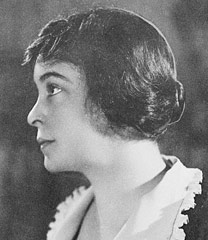
Those who knew Edith Anisfield Wolf (see video), the beloved only child of John and Daniela Anisfield, called her reserved and self-effacing. Yet this unassuming native Clevelander, born in 1889, left a unique mark on the world because of her quiet commitment to social justice. Years ahead of her era in promoting this cause, Edith was influenced by her father, an Austrian immigrant who earned an early fortune in real estate and the garment industry. He put his wealth toward health care for the disadvantaged and improved recreation and education in Cleveland.
In 1901, when Edith was 12, her father welcomed her into his philanthropic work, where she learned to help administer his charitable affairs. Edith studied at Flora Stone Mather College of Western Reserve University and at the Cleveland School of Art, becoming a published poet. She was one of the first women to be appointed a trustee of the Cleveland Public Library. When she determined to honor her father with a prize, she chose literature—a universally popular vehicle—to bring national attention to the causes they both embraced.
So in 1934, Edith established the Anisfield Prize to honor a scholarly work on race relations. The first prize of $1,000 went to a book published in 1935. Following the 1944 death of her husband, Eugene Everett Wolf, Edith established a second $1,000 prize to honor creative works focused on race and cultural diversity. Today, the Anisfield-Wolf Book Awards are presented annually to the authors of three or four distinguished books that address racism and foster appreciation of diversity. Since 1996, the awards also have honored a literary artist for a lifetime of achievement.
With each passing year the book awards have grown more prestigious. The jury—presently chaired by scholar, educator, writer and editor Henry Louis Gates Jr.—has worked hard to broaden the scope. In recent years, Edwidge Danticat, Chimananda Nogozi Adichie, Junot Diaz, Mohsin Hamid and Ayaan Hirsi Ali have joined the ranks of such past honorees as Zora Neale Hurston (1943), Langston Hughes (1954), Martin Luther King Jr. (1959), Toni Morrison (1988) and Ralph Ellison (1992).
Originally, the Saturday Review presented the Anisfield-Wolf Book Awards. Edith’s prescient decision to transfer stewardship to the Cleveland Foundation in 1963 ensured the prizes’ continuance. For the foundation, the awards have become an increasingly effective tool for championing racial tolerance, equality and diversity.
1937
The Retreat
Asset Transfer That Carried on the Work of a Shuttered Home for Young Unmarried Mothers
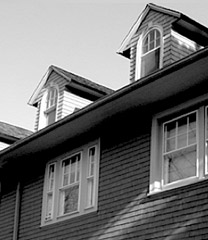
The Retreat, Cleveland’s oldest home for unmarried mothers, faced a difficult decision in 1936. Because parents whose daughters became pregnant out of wedlock were adopting a more tolerant attitude toward the predicament, the need for a residential facility to care for unwed mothers until they gave birth had dramatically declined. The occupancy rate had fallen below 50 percent at the 18-bed Retreat house at 2697 Woodhill Road, prompting The Retreat board’s reluctant decision to close the institution, which had been in operation at various locations since 1868. But what should be done with the organization’s real property and portfolio of stocks and bonds?
Board president Carlotta Creech undoubtedly influenced the transfer of The Retreat’s assets to the Cleveland Foundation. Her husband, Harris, was president of the Cleveland Trust bank and Fred Goff’s successor. In 1937, the foundation received nearly $70,000 from The Retreat, to be invested for the designated purpose of protecting the health and well-being of “unfortunate women and their children.” The Cleveland Foundation was now able to help promote maternal health—the broad cause to which Sarah Elizabeth Fitch, who could rightfully be considered the progenitor of the new endowment fund, was devoted. Coming upon an unwed mother who was about to leap into Lake Erie, Fitch had intervened to prevent the young woman’s suicide and went on to found The Retreat.
1938
Goldblatt’s Early Hypertension Research
A $1,000 grant advanced the highly significant hypertension research of Harry Goldblatt, M.D., director of Western Reserve University’s Institute of Pathology. Goldblatt’s experiments in the 1930s provided a partial answer to clinicians’ bafflement about the causes of hypertension. He demonstrated that if a portion of the main arteries to the kidneys was clamped, blood pressure rose. Goldblatt won international acclaim for his subsequent research identifying elevated levels of renin, an enzyme that regulates arterial blood pressure, as a factor contributing to hypertension.
1938
Model Nursery School
The foundation financed a demonstration project that created a model nursery school at Lakeview Terrace, a public housing project on Cleveland’s near west side. A pioneering early childhood development program, the nursery school was housed in a modern building with well-equipped indoor and outdoor play spaces supervised by an experienced staff. It also offered preschool-age children from tenant families a hot lunch daily and on-site medical services such as immunizations. Hundreds of visitors from other nursery schools and housing projects, social agencies, colleges, hospitals and public health departments came to observe and learn from the school before its operation was taken over by the Cleveland Metropolitan Housing Authority in 1940.
1941
Bellwether Support of African-American Girl Scout Troops
Acknowledging its obligation to confer grants “without discrimination [on the basis] of race, color or creed,” the foundation awarded $1,500 to the Cleveland Girl Scout Council for an expansion of its programming for “negro girls.” The grant, which was used to recruit leadership for new troops and to meet transportation and camping costs for troops requiring financial assistance, was a bellwether of the Cleveland Foundation’s much more substantial support of concerted efforts to serve new racial and ethnic constituencies undertaken by a variety of community organizations beginning in the 1950s.
1941
First Stand-Alone Adoption Service
The foundation supported the start-up and first year’s operation of the Adoption Service Bureau, the first stand-alone agency in the country to assist social service agencies, the courts and prospective parents with the placement of adoptees. Previously, such work was handled as part of a broader portfolio by the Cleveland Humane Society. The bureau’s specialized focus and its advisory board of physicians and lawyers were nationally influential innovations.
1941
Inaugurating Counseling at Divorce Court
The presiding judge of the domestic relations division of the Cuyahoga County Common Pleas Court gained the support of the Cleveland Foundation for a demonstration program to slow the rapidly increasing number of divorce petitions. The program showed that provision of the services of a “competent psychiatrist” could bring about the reconciliation of some petitioners, to the benefit of the couple, their children and the community generally. Family counseling and conciliation remain important functions of the domestic relations court to this day.
1941
Innovative Library Program for Shut-ins
Carrying out the wishes of donor Frederick W. Judd, the foundation began to provide annual funds to the Cleveland Public Library (CPL) to enable it to serve those who were too ill, incapacitated or elderly to visit a library branch. CPL, which had been making books available to hospitals, other institutions and the blind with federal support, developed a first-of-its-kind program to deliver materials to shut-ins in their homes. The Judd Fund program is still in operation today.
1941
Katherine Bohm
A Laundress’s Generous Endowment Gift

Katherine Bohm was only 16 when she and her mother emigrated from Germany to the United States around 1872. Following in the footsteps of thousands of other Germans, mother and daughter settled in Cleveland, but the fact that the Bohms were members of the largest group of immigrants in the city gave them no special advantage. They eventually found work as a cook and a laundress in the homes of some of Cleveland’s most prominent industrialists: Fred Beckwith, Ralph King and Samuel Mather.
Fred Goff and Samuel Mather were neighbors, and, as the subject of philanthropy was of immense interest to both men—Mather helped to found the Welfare Federation of Cleveland’s Community Chest fund-raising campaign in 1919—it would have been natural for them to discuss the Cleveland Foundation whenever they visited each other’s homes in Bratenahl, Ohio. Clevelanders could not have been very surprised to learn after Mather’s death in 1931 that he had left a generous bequest to the foundation.
But no one was prepared for the touching news, reported in January 1941 in the city’s morning and afternoon dailies, that Goff’s vision had inspired Katherine Bohm to leave nearly her entire life savings (after providing for a number of distant relatives) to the Cleveland Foundation. During 60 years of unremitting toil—later in life she had cleaned offices in downtown Cleveland and washed laundry in her three rented rooms—she had accumulated well over $10,000. Prudently invested in blue-chip stocks, Bohm’s nest egg would be worth more than $150,000 today.
Bohm had been almost completely blind as a result of inoperable cataracts when she died, just a few days before her 80th birthday, in 1936. She had lost a leg to diabetes, but had retained her independent spirit. The gift of $6,500 that established the Katherine Bohm Fund was free of any restrictions; income from the fund was to be used, at the foundation’s discretion, to improve the quality of life in her adopted community. Fittingly, the first grant of Bohm Fund monies was awarded to the Cleveland Society for the Blind to pay for clients’ eyeglasses and prosthetic eyes.
1942
Lynn J. and Eva D. Hammond
Donors of the First Funds to Help the Aging

The first funds received by the Cleveland Foundation in the field of aging came from the nearly $1 million estate of Lynn J. and Eva D. Hammond in 1942. Lynn Hammond, who was predeceased by his wife, stipulated that the income from their estate should ultimately fund modest pensions for elderly men and women selected by the foundation as “worthy and deserving.” The monies were to be used first to provide annuities for 33 of the couple’s distant relatives, friends, servants and, most significantly, the retirees of Strong, Carlisle & Hammond, a maker of machine tools and steel mill supplies that Hammond had helped to build into a successful enterprise. Before the principal was transferred to the Cleveland Foundation, the estate also had to fulfill bequests of $5,000 to a number of charitable organizations, including the Masonic Home in Springfield, Ohio.
The source of the Hammonds’ concern for the dignity and comfort of the elderly is not precisely clear, but hints may be found in Lynn’s life story. Born in Cleveland in 1864, he was orphaned around the age of 10 upon the untimely death of his father, Horace, a paymaster at the Cleveland Rolling Mills. An uncle took the boy in. As a young man, Hammond clerked at the rolling mill before hiring on as a bookkeeper and the first employee of the predecessor firm to Strong, Carlisle & Hammond. At his death in 1940, Hammond was the company’s chairman. Did his appreciation of the misfortune that can befall even the meritorious and his gratitude for the hard work of his employees contribute to his keen desire to help seniors who had lived productive lives, but due to socioeconomic realities or unforeseen calamity had found themselves in need?
Whatever the motivation for its creation, the Lynn J. and Eva D. Hammond Memorial Fund helped to propel the Cleveland Foundation into the field of aging, where it would assemble a nationally recognized record of supporting innovation and excellence. (Click on the following links to learn more about model geriatric programs launched with foundation support, such as the Golden Age Centers, Judson Park and the Successful Aging Initiative.)
1951
A. E. Convers Fund
Endowment Monies with Infinite Flexibility
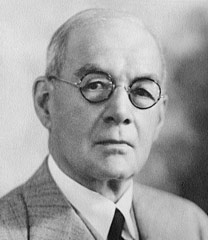
Albert E. Convers was the chairman of Dow Chemical Company and one of the company’s largest shareholders at the time of his death in 1935. The Massachusetts native had formed a lasting attachment to Cleveland, however, during the 30 years he operated a tack manufacturing company here. Believing that the community in which he laid the foundation for his fortune should share in his wealth, he bequeathed almost $4 million to the Cleveland Foundation—with no strings attached.
This was the largest gift received to that point for unrestricted purposes. Demonstrating rare humility in addition to admirable generosity, Convers wanted to provide the community with the means in perpetuity to launch important projects and address critical problems that he himself could never have imagined.
Ever since the first income from the A. E. Convers Fund was realized in 1951, it has generated millions of dollars for grants and supported projects in virtually every program area. Today, the Convers Fund is valued at more than $171 million. The fund’s annual income represents fully 20 percent of the foundation’s unrestricted dollars, allowing flexibility to meet the changing needs of Greater Cleveland.
1954
Downtown Cleveland’s Resurgence
Starting with the Erieview urban renewal project of the 1960s, the foundation has been a steadfast supporter of initiatives to reverse postwar stagnation in the city’s core.
In 2013, Forbes ranked Cleveland as one of 15 cities with a resurgent downtown. The magazine’s appraisal was based on information provided by the Downtown Cleveland Alliance, the latest in a long series of endeavors undertaken with the support of the Cleveland Foundation to reverse the postwar stagnation of Cleveland’s core.
Today, the central city can boast of several impressive measures of good health, starting with the $1.7 billion invested within last decade in new downtown development. Millions more will be invested in proposed hotels, apartments, parks, landscaping and public art and even a full-service grocery. The nation’s eighth largest downtown workforce—nearly 150,000 people strong—pours into the central city each weekday. Roughly 10,000 people live downtown, and almost 16 million people patronize downtown events and attractions each year.
Many visitors might find it hard to believe that, not too long ago, downtown Cleveland emptied out after dark, and blight had overtaken entire quadrants of the city center.
Downtown renewal had stalled during the Depression and never recovered. As of the 1950s, only one or two major new office buildings had been built since the Terminal Tower went up on Public Square in 1929. The pressing need for urban renewal resulted in the creation in 1954 of the Cleveland Development Foundation (CDF), a nonprofit corporation that raised $2 million from the corporate community to invest in redevelopment projects. Supported with early-stage operating grants from the Cleveland Foundation and the Leonard C. Hanna Jr. estate, CDF focused first on building low-income housing, so that slum land could be cleared in preparation for redevelopment.
Then, in 1960, CDF unveiled a $500 million citywide master redevelopment plan underwritten in part by the foundation. The plan, which was formally adopted by the City of Cleveland, included a massive downtown renewal project called Erieview. Conceived by internationally known architects I. M. Pei & Associates, Erieview envisioned $100 million in new construction, including government, office and apartment buildings, retail spaces and even a hotel, for a blighted area immediately northeast of downtown overlooking the lake.
Except for the hotel, the downtown plan had been implemented by the mid-1970s, and Erieview’s scale influenced future redevelopment efforts, which focused on a series of big-time projects: indoor shopping malls, museums, stadiums, a convention center and a medical technology showplace. The Cleveland Foundation supported many of these endeavors, typically by providing planning, site analysis or design grants or supplementing construction budgets with funding for public amenities. The foundation also facilitated improvements in downtown infrastructure and downtown transportation, providing planning grants for a county-wide Regional Transit Authority in the 1970s and the Euclid Avenue Dual Hub Corridor, the predecessor of the HealthLine, in the 1980s and ’90s.
In the late 1990s, civic attention turned to the still-decaying sections of downtown lying beyond or in between the bustling big-development clusters. A new nonprofit economic development corporation called the Downtown Cleveland Partnership (DCP), comprised of a cross-section of downtown business interests, had recently been established, and the Cleveland Foundation provided a $250,000 grant that allowed DCP to study the feasibility of innovative redevelopment projects that might not otherwise be considered by small property owners. In 2001, the foundation contributed $1 million to establish a second catalytic fund at DCP. Providing low-interest loans to property owners willing to undertake exterior renovations, the fund particularly aimed to improve the rundown appearance of lower Euclid Avenue.
Seeking a steady and significant source of funding for its economic development activities, the Downtown Cleveland Partnership began to push in 2005 for a special tax assessment called a business improvement district (BID). Property owners controlling 60 percent of downtown’s sidewalk frontage had to approve the BID’s establishment, as they would be assessed additional taxes to pay for improved maintenance, safety and marketing services. Actively championed by the Cleveland and George Gund Foundations, the BID went into effect in 2006, raising a first-year budget of $3 million for the Downtown Cleveland Partnership’s successor organization, the Downtown Cleveland Alliance. A $450,000 grant awarded by the Cleveland Foundation in 2008 further strengthened the alliance’s work to make downtown more welcoming for visitors, new and existing residents, and business development.
1954
Innovative Senior Services
Before the foundation provided start-up funds to the Golden Age Centers of Cleveland (GAC), few if any local social service programs specifically addressed the needs of senior citizens. GAC’s first project—a recreational center for tenants 60 and older at the Cedar-Central public housing complex—was a popular success. The innovative organization went on to open 15 additional centers offering a wide spectrum of services to the elderly.
1956
Information Services for Cleveland-Hopkins Air Travelers
With increasing numbers of persons traveling by air, the Cleveland Foundation supported the plans of the Travelers Aid Society to expand its services to Cleveland-Hopkins Airport. Backed by a two-year grant, the society set up an office at the airport to provide information, assistance or crisis intervention to the traveling public.
1957
Early Study of Metropolitan Government
The Metropolitan Study Commission (METRO)—an investigation of the advisability of converting Greater Cleveland to a metropolitan form of government—got under way with the help of Cleveland and Ford foundation grants. METRO's findings about the benefits of consolidation failed to convince voters when the issue came to the ballot in 1958, but study director James A. Norton went on to become the fifth director of the Cleveland Foundation.
1957
Poison Information Center
Recognizing the dangers posed by the thousands of new household products coming into routine use, the Academy of Medicine of Cleveland established a Poison Information Center with a start-up grant from the foundation. The center offered physicians detailed information about the chemical composition of all types of toxic substances and first aid advice to members of the public who called in seeking help in treating cases of accidental poisoning.
1958
Emergency Aid to African-American-Run Hospital
Forest City Hospital, a 100-bed general medical center built by a group of African-American physicians who wanted to practice in a hospital free of race restrictions, survived its difficult first year of operation with the help of the foundation’s $35,000 emergency grant. Its financial footing regained, Forest City served the residents of Cleveland’s far east side for 20 years. When the hospital closed, its assets were transferred to the new Forest City Hospital Fund at the Cleveland Foundation. In 1981, fund monies helped to launch a capital campaign to replace the antiquated mansion housing the Eliza Bryant Center for the frail elderly in Hough with a new $4.5 million facility that doubled the nursing home’s capacity.
1960
Attempt to Address Desperate Conditions in Hough
Between 1950 and 1960, the once-fashionable residential area on Cleveland’s east side known as Hough underwent a rapid demographic transformation, changing from 95 percent white to 74 percent African American. No longer a middle-class enclave, Hough suffered from rising unemployment, unacceptable poverty rates, a high incidence of crime and delinquency, and the decay and overcrowding of its housing stock.
In the 1960s, the Cleveland Foundation contributed $106,000 over five years to the Welfare Federation of Cleveland to support the development of a comprehensive social services plan to ameliorate the problems besetting the 80,000 residents of this two-square-mile central-city neighborhood. Living conditions still festered in Hough five years later, but the endeavor was a prescient attempt to address an impending social crisis that erupted into the full-blown Hough riots of 1966.
1960
Legal Representation for Indigent Defendants
The public defender’s office of Cleveland’s Legal Aid Society was established with a $100,000 grant two years before the U.S. Supreme Court unanimously ruled in Gideon v. Wainwright that state courts must provide counsel to represent indigent defendants in criminal cases.
1960
Promoting Fair Housing and Integration
The foundation displayed considerable courage in supporting a variety of programs aimed at overturning entrenched patterns of segregation.
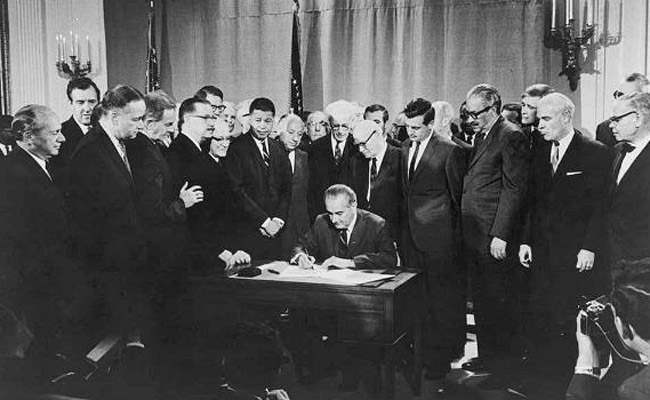 Title VIII (the “Federal Fair Housing Act”) of the Civil Rights Act of 1968, signed by President Johnson a week after the assassination of Martin Luther King Jr., advanced the struggle for integration taking place in Cleveland’s eastern suburbs and elsewhere across the nation.
Title VIII (the “Federal Fair Housing Act”) of the Civil Rights Act of 1968, signed by President Johnson a week after the assassination of Martin Luther King Jr., advanced the struggle for integration taking place in Cleveland’s eastern suburbs and elsewhere across the nation.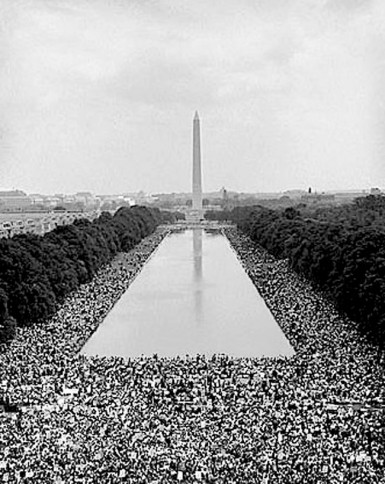 The March on Washington, August 28, 1963, at which Martin Luther King Jr. called upon the nation to make good on democracy’s promise of social and economic freedom for all citizens
The March on Washington, August 28, 1963, at which Martin Luther King Jr. called upon the nation to make good on democracy’s promise of social and economic freedom for all citizens 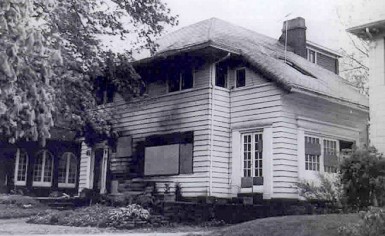 In 1967, this Cleveland Heights home, owned by an African American, was bombed in a senseless and vain attempt to halt the suburb’s integration.
In 1967, this Cleveland Heights home, owned by an African American, was bombed in a senseless and vain attempt to halt the suburb’s integration.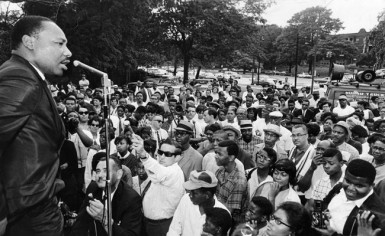 Dr. King speaking in Rockefeller Park on a visit to Cleveland in 1967. The previous year he had dramatized the issue of housing discrimination by moving his family into a grimy apartment on the segregated west side of Chicago and joining in protest marches into that city’s all-white neighborhoods.
Dr. King speaking in Rockefeller Park on a visit to Cleveland in 1967. The previous year he had dramatized the issue of housing discrimination by moving his family into a grimy apartment on the segregated west side of Chicago and joining in protest marches into that city’s all-white neighborhoods.The Cleveland Foundation began to address the issue of housing segregation in the early 1960s, making grants to support the Ludlow and Moreland neighborhood associations that sprang up to encourage the integration of neighborhoods straddling the boundaries of Cleveland and the inner-ring eastern suburb of Shaker Heights. Thus began the foundation’s longstanding commitment to promoting fair housing and integration.
In 1960, only one of every 40 minority families in Cuyahoga County lived outside the City of Cleveland. Most people accepted the status quo. It required courage on the foundation’s part to lend moral and financial support to a wide range of groups working to overturn entrenched patterns of housing segregation. In addition to neighborhood associations, grantees included the Fair Housing Council, which successfully lobbied municipalities across the county to pass fair housing resolutions in the mid-1960s, and the Heights Community Congress (HCC), a broad-based coalition of organizations and individuals that monitored the progress of integration in the inner-ring eastern suburb of Cleveland Heights. When warranted, HCC took remedial action to maintain racial balance and harmony, filing lawsuits against local realtors, for example, that set standards for nondiscriminatory treatment of African-American home buyers.
Cleveland also participated in Operation Equality, a Ford Foundation demonstration project to improve minority housing opportunities in eight test cities. The willingness of the Cleveland Foundation and its affiliated Greater Cleveland Associated Foundation to match a Ford grant of $180,000 allowed Operation Equality to open four field offices in Cleveland in 1966–67. Field workers provided assistance to African-American families willing to risk buying homes in white neighborhoods. Having helped to relocate 200 African-American households during its first two years, Operation Equality-Cleveland decided to shift its focus from providing services to individual clients to attempting to bring the real estate industry into compliance with federal fair housing provisions passed as part of the 1968 Civil Rights Acts. The Cleveland office joined with the U.S. Department of Justice to file fair housing suits against several area apartment management firms in the early 1970s that resulted in consent agreements governing more than 10,000 units.
Progress toward integrating the city’s eastern suburbs became noticeable. By 1970, one of eight African-American households lived outside Cleveland’s boundaries. As outward migration continued, Shaker Heights, Cleveland Heights and University Heights were faced with the prospect of resegregation—that is, they were well on their way to making the transition from all-white to all-minority. Rather than ignoring these demographic trends, municipal and public school officials formed the East Suburban Council for Open Communities (ESCOC) in 1983 with the support of the Cleveland Foundation.
ESCOC offered low-interest loans from special-purpose funds established in Shaker and Cleveland Heights to home buyers willing to settle in neighborhoods where their race was underrepresented. In 1988, the integration maintenance program received an Innovations in State and Local Government Award, one of 10 presented by the John F. Kennedy School of Government at Harvard University that year. Funded by the Ford Foundation, the award recognized ESCOC as the “nation’s first public-private inter-jurisdictional approach to integration, targeting affirmative marketing to all home seekers on a sub-regional rather than local basis.” Equally important, the organization had helped to slow resegregation in the Heights and maintain the racial diversity that is a prized attribute of the area today.
1961
A Central Planning Agency for University Circle
A 1957 master plan for University Circle identified the immense land-use challenges facing Cleveland’s civic mecca, then home to 34 education, arts and culture and healthcare institutions. Affirming the importance of maintaining the Circle’s viability, the Cleveland Foundation made a three-year grant of $180,000 in 1961 to support the operation of the University Circle Development Foundation (UCDF), a central planning agency whose establishment had been recommended by the master planners as essential to the Circle’s orderly growth.
UCDF took responsibility for providing collectively needed services, such as public safety, shuttle transportation and parking. It also assembled a land bank upon which Circle institutions could draw to meet future expansion needs. In 1970, UCDF was reorganized as University Circle Inc. and given the added responsibility of building relationships with the residents of surrounding neighborhoods.
1962
Mass Polio Immunizations
A grant of less than $2,500 helped Cleveland’s Academy of Medicine launch what was at the time the largest mass polio immunization program ever undertaken in the world. Approximately 1.5 million Greater Clevelanders received the Sabin oral vaccine during the immunization campaign, preventing untold suffering and medical expenditures.
1962
PACE’s School Library Campaign
PACE (Plan for Action by Citizens in Education), a broad-based school improvement campaign that aimed to make Cleveland’s public schools “second to none in the country by 1970,” was organized with the support of the Cleveland Foundation’s affiliated philanthropy, the Greater Cleveland Associated Foundation. Among PACE’s most important accomplishments was to raise the monies to establish and outfit libraries in all of the city’s public elementary schools, which did not have these essential learning resources.
1963
Start-up of Cuyahoga Community College
The foundation bridged a critical gap in state funding for advanced technical and vocational education for working-class and minority students.
Cuyahoga Community College (Tri-C), Ohio’s first publicly supported two-year college offering associate degrees in the liberal arts and sciences as well as vocational training, has opened the doors of opportunity for more than 900,000 students since its establishment in 1963. The legislation that enabled the creation of state community colleges neglected to provide funding for predevelopment. The Cleveland Foundation and its affiliated Greater Cleveland Associated Foundation (GCAF) helped Tri-C’s founders bridge this otherwise impassable funding gap by providing grants for planning purposes.
The grants represented acts of courageous leadership, given that the new school had been viewed as competition by Cleveland’s private colleges and universities. After much lobbying by GCAF’s program staff, GCAF chairman Kent Smith, a Case Institute of Technology loyalist, had been convinced of the need to open up the possibility of advanced technical and vocational education for Cleveland’s working-class and minority students. Smith convened a meeting of his peers in the business world at which he solicited contributions to the college so fiercely, Ohio’s then governor, James A. Rhodes, would be prompted to call Smith a “one-man gang” on Tri-C’s behalf.
The pent-up desire for high-quality, low-cost higher education was so intense that the line of Clevelanders who wished to enroll in Tri-C stretched around the block on the first day applications were accepted. From that moment on, Cuyahoga Community College has been an indispensable part of the region’s workforce development infrastructure.
1964
Establishing a Groundbreaking Interracial Forum
The conduct of civic affairs was reshaped around the value of inclusion as a result of a problem-solving collaboration between black and white business leaders.
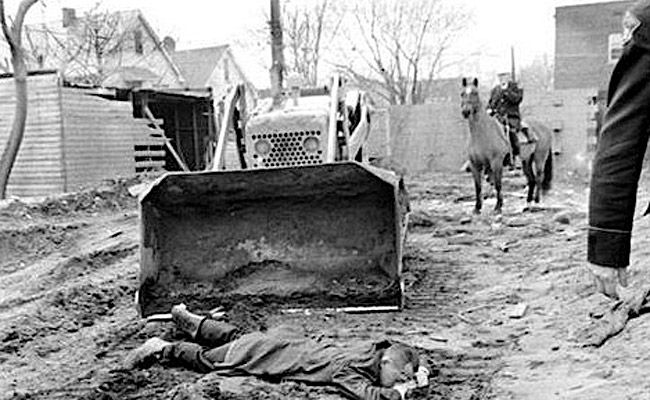 Presbyterian minister Bruce W. Klunder died while protesting the construction of three public elementary schools that Cleveland’s civil rights community believed would perpetuate a system of segregated and inferior education for African-American students.
Presbyterian minister Bruce W. Klunder died while protesting the construction of three public elementary schools that Cleveland’s civil rights community believed would perpetuate a system of segregated and inferior education for African-American students.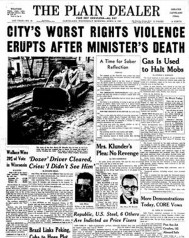
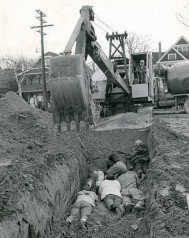 The bulldozer operator accidentally backed over Rev. Klunder in order to avoid hurting the protestors lying in front of him.
The bulldozer operator accidentally backed over Rev. Klunder in order to avoid hurting the protestors lying in front of him.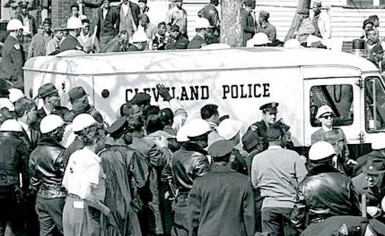 Dispersed by police, the protesters did not succeed in halting construction, but Klunder’s martyrdom inspired the civil rights community to continue what was ultimately a victorious fight against segregation of the Cleveland public schools.
Dispersed by police, the protesters did not succeed in halting construction, but Klunder’s martyrdom inspired the civil rights community to continue what was ultimately a victorious fight against segregation of the Cleveland public schools.On April 7, 1964, a bulldozer clearing land for one of three new public elementary schools to be built in predominately African-American neighborhoods on Cleveland’s east side backed up and accidentally crushed to death a Presbyterian minister who had joined an on-site demonstration organized by a coalition of civil rights groups to protest the construction project’s reinforcement of school segregation.
The news of the Reverend Bruce W. Klunder’s demise horrified James A. Norton, the director of the Cleveland Foundation’s affiliated philanthropy, Greater Cleveland Associated Foundation (GCAF), who had for months been trying to persuade the chamber of commerce to organize a meeting of its members with their African-American counterparts to discuss the city’s disintegrating race relations. Norton and GCAF’s chairman, retired industrialist Kent H. Smith (who also sat on the board of the Cleveland Foundation), feared the tragic accident might ignite greater unrest. They prevailed upon John W. (Jack) Reavis, the managing partner of a pre-eminent corporate law firm, Jones, Day, Reavis & Pogue, to convene an emergency meeting of all concerned.
The meeting that took place at 3 p.m. on Sunday, April 19, 1964, in the Sheraton-Cleveland Hotel was as historic as it was dramatic. Never before had the ranking leadership of Cleveland’s black and white communities been assembled in one room. The white captains of business and industry listened quietly as the self-styled Negro Leadership Committee, whose members included such prominent African-American businessmen as newspaper publisher W.O. Walker and bank executive Bertram E. Gardner, laid out the political, economic and social inequalities afflicting the African-American community.
The parties agreed to form ad hoc committees to examine the problems facing African-American residents in the areas of employment, housing and education, but parted company on whether the issue of police brutality should be tackled. After months of frank and intense discussions, subcommittee members decided at summer’s end to institutionalize their newfound working relationship by creating the Businessmen’s Interracial Committee on Community Affairs (BICCA). GCAF gave BICCA space in its offices, and the committee’s full-time director and administrative expenses were paid in part by annual grants.
Operating under Jack Reavis’s leadership for the next seven years, the Businessmen’s Interracial Committee produced mixed results. The education subcommittee decided the schools’ new superintendent, Paul W. Briggs, should be given time to investigate charges of segregation, a reasonable approach that even the protestors accepted. With a crisis averted and a peaceful opening of the school year assured, master politician Briggs was able to refocus BICCA’s and the community’s attention on passing bond issues to pay for renewing the school system’s physical plant. More than 40 new neighborhood schools were subsequently built, cementing into place the emerging patterns of segregation that had provoked the protests.
BICCA’s housing subcommittee decided to focus on the issue of fair housing and set about organizing and funding the Fair Housing Council, a professionally staffed coordinating agency for the more than 40 community and neighborhood groups the subcommittee had discovered were working on the issue, largely independently of one another. The council met with some success, conducting a campaign that saw 45 of Cuyahoga County’s 60 municipalities pass fair housing resolutions. It also helped to implement Operation Equality, a Ford Foundation initiative to improve minority housing opportunities in eight demonstration cities.
BICCA’s most successful program to improve economic opportunities for African Americans—an intensive effort to train and find jobs for 2,000 chronically unemployed African-American youths—began in June 1967 with federal support. This campaign against central-city joblessness, which stood at 15.5 percent among African Americans, also received a large Ford Foundation grant. BICCA’s most lasting contribution, however, was in demonstrating to the city’s black and white leadership the imperative and benefits of collaboration and inclusion—a lesson that reshaped Greater Clevelanders’ conduct of civic affairs going forward.
1965
Bringing Public Television to Cleveland
Educational television finally came to Cleveland, the last major city in America to create a public broadcasting station, WVIZ Channel 25. The Cleveland Foundation was a major backer of the endeavor, providing $280,000 over two years to the Educational Television Association of Metropolitan Cleveland for planning purposes and operating support.
1965
Police and Tax Base Reform
Following the defeat of a proposed municipal income tax at the polls, business leaders prevailed upon Mayor Ralph S. Locher to create a commission to study the City of Cleveland’s operations and recommend improvements and financial savings. Financed in part by the corporate and philanthropic communities (including the Cleveland Foundation and its affiliated philanthropy, the Greater Cleveland Associated Foundation), the Little Hoover Commission issued 21 reports by professional analysts covering every aspect of the municipal governance—from purchasing to the judiciary.
Although fewer than half of the commission’s 500-plus recommendations were implemented, its findings highlighted the need for improved procedures, professional training and community relations practices in the city police department, many of which were put into place following the Hough riots with additional support from the abovementioned foundations. The Little Hoover Commission’s findings also prompted Cleveland City Council to enact a 0.5 percent city income tax that provided much-needed new funding for local government services.
1965
Preserving Mentor Marsh
The Cleveland Foundation contributed $18,000 to a successful five-year campaign led by the Ohio chapter of the Nature Conservancy and the Cleveland Museum of Natural History to acquire all the acreage constituting the threatened Mentor Marsh in Lake County. One of the largest natural wetlands remaining along the Lake Erie shoreline, Mentor Marsh became the first state nature preserve in 1971.
1966
Kenneth W. Clement, M.D.
Rewarding Community Service with a College Scholarship
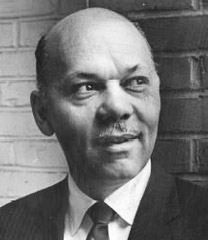
Kenneth W. Clement, a pioneering African-American physician, returned the hand-up that he himself had received by establishing a college scholarship fund at the Cleveland Foundation in 1966, a year before he became the first African American appointed to serve on the foundation’s board.
Having graduated from Cleveland’s Central High School in 1938 as class valedictorian, Clement earned a full scholarship to Oberlin College. He attended medical school at Howard University on a W. K. Kellogg Scholarship. Setting up a private practice in Cleveland in 1951, he had to fight to gain staff privileges at area hospitals. The physician refused to give in to racial discrimination and ultimately gained admitting powers at four institutions.
Dr. Clement, who died in 1974, was a devoted volunteer leader of numerous nonprofit organizations in Cleveland. He also served on two presidentially appointed federal councils that helped to create and implement Medicare legislation. After being honored for his record of public service by the Cleveland chapter of the Urban League in 1966, he and his wife, Ruth, decided to partner with the Cleveland Foundation to award a college scholarship annually to a graduating Cleveland Municipal School District student who had performed laudable community service.
Since its establishment with the Clements’ initial gift of $10,000, the Inez and Harry Clement Award Fund (named in honor of the doctor’s parents) has provided scholarship awards to more than 50 Cleveland public school students, enabling them to study at colleges and universities in Ohio and beyond.
1966
Outreach to the Near West Side’s Growing Hispanic Population
The West Side Community House, an Ohio City-based social service agency whose origins date back to 1890, launched one of the city’s earliest bilingual outreach efforts with foundation support. The agency wanted to better serve the growing number of Spanish-speaking families who were relocating from the east side to Ohio City in order to be closer to jobs in the nearby industrial “Flats.” In collaboration with the Spanish American Committee for a Better Community, it started a social service and recreational center exclusively for Hispanics families. Still working today to promote the socioeconomic success of Spanish-speaking Clevelanders, the Spanish American Committee is the city’s oldest Hispanic human services organization.
1967
Access to Decent, Affordable Housing
With an estimated 50,000 substandard homes in Cleveland, the foundation’s affiliated philanthropy, the Greater Cleveland Associated Foundation, organized a citizens’ action committee to tackle the challenge of providing decent, affordable housing for every Cleveland family. PATH (Plan of Action for Tomorrow’s Housing) produced an eponymous report detailing how production of affordable housing for low- and moderate-income families could be stimulated by offering technical and financial assistance to neighborhood development groups and minority-owned contracting firms.
Even after receiving these services, the city’s embryonic affordable housing production system turned in a mediocre performance, attributed to lack of coordination and cooperation that would be overcome by subsequent foundation initiatives that built on this learning experience. PATH experienced greater success in helping the city leverage federal Housing and Urban Development monies to purchase or build high-rise apartments for the elderly and begin construction of new multifamily public housing projects, such as the King-Kennedy Estates in Cleveland’s Central neighborhood.
During the brief two-and-a-half-year tenure of PATH’s first executive director, Irving Kriegsfeld, 5,000 units were added to the holdings of the Cleveland Metropolitan Housing Authority (CMHA). Given the fact that CMHA had built only 7,000 units during its previous 35 years of operation, Kriegsfeld’s influence was particularly salutary.
1968
A New Justice Center
Since the end of World War II, Cuyahoga County voters had declined 16 times to approve a bond issue to build a new corrections center to replace the county’s aging jail. The issue’s 1968 defeat came shortly after the Cleveland Foundation and its affiliated philanthropy, the Greater Cleveland Associated Foundation, convened and staffed an Administration of Justice Committee (AJAC) to promote community support for reform of the criminal justice system. AJAC worked behind the scenes to convince the Greater Cleveland Growth Association and the mayoral administration of Carl Stokes to create a Greater Cleveland Criminal Justice Coordinating Council, intended to oversee the expenditure of new federal law enforcement monies that the Nixon administration proposed to make available to state and local governments.
The council obtained nearly $50 million in federal funding for such improvements as a police training academy, computerization of the county common pleas court dockets, a public awareness campaign that successfully reduced auto theft, the creation of a safe haven for teenage drug users called the Free Clinic, and a multimedia campaign that helped to persuade voters to pass a bond issue for a new “justice center.” To ensure the excellence of the facilities, staffing, programming and management of the corrections center that would be housed, along with the county courts, in a new tower complex to the south of the federal courthouse, the Greater Cleveland Associated Foundation assembled a panel of five national corrections experts to advise the county on the jail’s design.
1968
Support of Carl Stokes’s Historic Mayoralty
Whatever extra help the country’s first African-American mayor thought he needed to ameliorate Cleveland’s social and economic wounds, the foundation stood ready to provide.
All eyes were focused on Cleveland throughout the summer leading up to the mayoral elections of 1967. The political contest between Seth Taft, the grandson of a U.S. president, and Carl B. Stokes, the grandson of a slave, seemed destined to make international headlines. For the first time in history it looked as if a major American city might elect an African-American mayor.
Realizing that the future of the city depended on inspired, perhaps even heroic, political leadership, the leaders of the Cleveland Foundation were not content merely to watch the drama unfold. Many of them had played active if behind-the-scenes roles to ensure that whoever emerged victorious would not be simply another caretaker mayor. Once the outcome of the race had been decided in Carl B. Stokes’s favor, they laid the full resources of the foundation at the disposal of the winning administration. Whatever the new mayor needed in the way of supplementary personnel, discretionary funds, advice or connections to heal the social and economic wounds of the city, the Cleveland Foundation stood ready to help provide.
Carl Stokes called on all these proffered resources in conceiving and attempting to implement his civic vision, a $1.5 billion redevelopment plan called Cleveland: NOW! that was conceived in the wake of the assassination of Martin Luther King Jr. In a 30-minute speech broadcast on all three local television stations on May 1, 1968, Stokes proposed to turn the city around in 10 years through new programs in the areas of employment, neighborhood rehabilitation, youth development, health and welfare and downtown revitalization.
In its first phase, Cleveland: NOW! called for the expenditure of $177 million on training 11,000 of the city’s hard-core unemployed; rehabilitating or building 4,600 low-income housing units; creating 10 new multiservice health centers, 10 new daycare centers and a variety of summer youth programs; and pushing the completion of the city’s stalled urban renewal projects. While Stokes envisioned that the federal government would pick up most of the tab, he explained to the television audience that he expected Greater Clevelanders to contribute $11.25 million in seed money to “stop the downhill slide, to start the city moving forward, to create a climate in which our city can become someday a great one….”
The response to the challenge was immediate and overwhelmingly positive. Propelled by a lead gift of $1 million from the Schubert Foundation, $5.2 million had been pledged in support of Cleveland: NOW! by that fall. Had not a street activist by the name of Ahmed Evans used monies he earned in running a NOW!-sponsored youth program to buy guns, the public-private partnership that the foundation helped to assemble around NOW! might have indeed jump-started Cleveland’s physical and socioeconomic revival. But the community’s hopes for a better day were brutally and quickly dashed when Evans and his followers engaged in a gun battle with police, during which three officers were slain. The so-called Glenville shootout in July 1968 also seriously wounded prospects for the success of Cleveland: NOW!
The Cleveland Foundation had broken with longstanding philanthropic tradition by working arm-in-arm with a political leader on the delivery of summer programs to Cleveland’s most severely alienated African-American youth. Fortunately, the experience did not sour the board on the concept of public-private partnerships. In fact, the foundation’s aborted attempt to improve municipal governance served to renew the Goff precedent for involvement in public affairs. Successive generations of foundation leaders, operating in a less volatile atmosphere, would offer support to public officials to more lasting effect.
1970
Backing the Free Clinic
The federally funded community health center began operations with foundation support as a safe medical haven for young drug users.
The Cleveland Foundation was an early champion and financial supporter of the Free Medical Clinic of Greater Cleveland, which annually provides quality health care and related services free of charge to more than 10,000 people who lack appropriate alternatives. The Free Clinic was established in 1970 in a old frame house on Cornell Road in University Circle as a treatment center for young people with drug-related problems. The foundation backed the creation of this safe haven, where medical care was provided with no questions asked.
The need for indigent health care on the east side of Cleveland was so great that the Free Clinic soon began treating anyone who walked in. In less than a decade, it had evolved into a comprehensive health center offering medical, dental, mental health, social, legal, educational and counseling services to underserved populations ranging from victims of domestic violence and runaways to neighborhood residents. When the clinic faced closure due to mounting debt in the early 1980s, the foundation stepped forward with emergency operating grants and organizational development assistance.
Today, this bright, modern facility on the outskirts of University Circle is one of the few free clinics started in the turbulent Vietnam War era to survive. Having recently been designated a community health center, one of only 33 in Ohio, the Free Clinic now qualifies for federal support.
1971
Federation of Case Institute of Technology and Western Reserve University
The foundation’s first-ever $1 million grant enabled Case Western Reserve University to complete its transition into a modern research university.
The foundation’s 1924 survey of higher education, undertaken at the behest of Cleveland’s premier liberal arts institution, Western Reserve University, and its outstanding engineering school, the Case School of Applied Science, concluded that the two institutions should be merged into a municipal university to rival those in New York, Boston and Chicago. Because of alumni pride in the independence of their alma maters, the two schools deferred federation until 1967.
To signal its continuing strong support for the union, the Cleveland Foundation awarded its first-ever $1 million grant in 1971 to Case Western Reserve University (CWRU). Teamed with a matching grant from an anonymous donor, these critical discretionary funds enabled CWRU to complete its transition into a modern research university. No city can be globally competitive without one.
1972
Cleveland’s First Arts Council
The Cleveland Area Arts Council (CAAC) opened for business in the Old Arcade in 1972 with Cleveland Foundation funding. It was the first local attempt to enhance public enjoyment of the arts and strengthen their financial base. With ongoing operating support from the foundation, the council demonstrated considerable creativity in bringing culture to the people, sponsoring noon-hour concerts and opera performances in the Old Arcade, holding poetry readings in libraries and coffeehouses, and initiating a popular mural painting program called “City Canvases” to beautify downtown. Although CAAC’s failure to build a broad base of financial support for its activities forced its closure in 1979, the council did raise awareness of the need to secure a solid base of public and corporate support for arts and culture upon which subsequent foundation initiatives were built.
1972
Women’s Empowerment Programs
Spurred by 39-year-old Gwill York, a former president of the Junior League of Cleveland who in 1971 had replaced Pamela Firman Humphrey as the sole woman on the foundation board, the Cleveland Foundation began to champion local women’s initiatives. The first empowerment grant was awarded in 1972 to the Women’s Law Fund, a team of female attorneys helping women litigate cases of sex discrimination. The Rape Crisis Center, which counseled victims and monitored police response to rape reports, was the most prominent of a host of new women’s organizations that received foundation support in the 1970s.
The foundation also contributed more than $50,000 in 1975 to the Greater Cleveland Congress of the International Women’s Year (IWY), the largest such convocation of women’s rights activists in the country. A follow-up grant of $47,700 launched WomenSpace, a central gathering place for women working to advance the U.S. Women’s Agenda ratified at IWY Congresses around the country.
1973
Model Home for the Aged
Carrying out the terms of a bequest from Grace Jordan Gardner, the Cleveland Foundation elevated Gardner’s wish to fund a home for the aged into an opportunity to create a model residential center. A citizens’ committee, advised by highly qualified consultants in gerontology and design, developed criteria for the home, which was to offer comprehensive social and health services and financial assistance to the needy elderly. Twenty-two licensed nonprofit nursing home operators entered the competition for a $1 million grant. The Baptist Home of Ohio (now the Judson Retirement Community) submitted the winning proposal for an expansion of its Judson Park facility on Cleveland’s east side. The new Jordan-Gardner Tower, offering independent living facilities, opened in 1974.
1973
Rebirth of Playhouse Square
The foundation’s rock-solid support has been key to the success of the four-decade-long effort to transform downtown’s historic but decayed theater district into a desirable place to work, play and live.
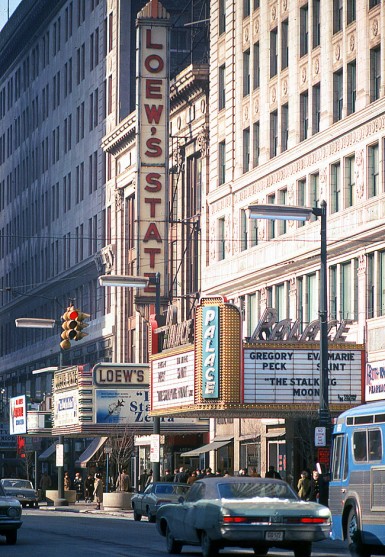 Playhouse Square, c. 1969
Playhouse Square, c. 1969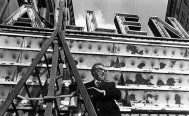 Ralph J. Perk lends a hand to the theater restoration project, which began during his tenure as Cleveland mayor.
Ralph J. Perk lends a hand to the theater restoration project, which began during his tenure as Cleveland mayor. 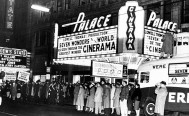 The Palace, the flagship of the Keith chain of vaudeville theaters, reinvented itself as a wide-screen movie house in the 1950s.
The Palace, the flagship of the Keith chain of vaudeville theaters, reinvented itself as a wide-screen movie house in the 1950s.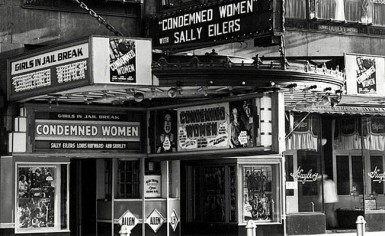 The Allen Theatre, originally an opulent silent movie house, c. 1938
The Allen Theatre, originally an opulent silent movie house, c. 1938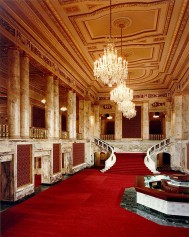 Palace Theatre lobby
Palace Theatre lobby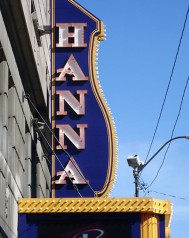
 The 2011 renovation of the Allen Theatre's main auditorium
The 2011 renovation of the Allen Theatre's main auditorium The State Theatre
The State TheatreThe Cleveland Foundation’s commitment to the revitalization of Cleveland’s Jazz Age theater district dates to 1973, a year after the Junior League of Cleveland, a women’s service organization, inspired by a visionary educator named Ray Shepardson, mounted a campaign to prevent two boarded-up theaters from being demolished to create parking lots. A series of grants awarded during the 1970s supported the operation of PlayhouseSquare Foundation (PSF), the public charity formed to secure the Playhouse Square theaters, and also subsidized live performances (notably, Jacques Brel Is Alive and Well and Living in Paris) intended to draw people downtown and deepen support for the theaters’ reuse.
In 1980, the foundation made a lead grant to PSF’s first major capital campaign, a vote of confidence that helped to spur an outpouring of other contributions and funding needed to restore the Ohio, Palace and State Theatres to their former grandeur. The foundation simultaneously encouraged the city’s new ballet and opera companies and a summer Shakespeare festival to relocate to Playhouse Square.
Cleveland won an unprecedented three consecutive All-American City awards in 1986, 1987 and 1988 (when the last of the three theaters reopened), in part because of the rebirth of Playhouse Square, which by then ranked as the most ambitious theater restoration project ever undertaken in America. Having created the largest performing arts complex outside New York City, PlayhouseSquare Foundation is now able to present each year about 1,000 arts and entertainment events that draw a combined audience of one million.
In the 1990s, the Cleveland Foundation helped PSF save a fourth theater, the Allen, from demolition and contributed $750,000 in 2011 toward the theater’s remodeling into a state-of-the-art home for the Cleveland Play House. Marshaling broad-based community support, Great Lakes Theater successfully completed a $19 million campaign that renovated the last of Playhouse Square’s five historic theaters. Doors to the excitingly updated Hanna Theatre (the recipient of a significant capital grant from the Cleveland Foundation) opened in 2008.
The foundation has also been a steadfast supporter of the effort, now in its fourth decade, to redevelop the theater district itself. Its first grant to the PlayhouseSquare Foundation in 1973 underwrote a master plan for the “superblock” stretching from Carnegie and Chester Avenues between East 14th and East 18th Streets. Prepared by Cleveland architect Peter van Dijk, the plan continues to provide inspiration to this day. (The “museum of light” that van Dijk envisioned at East 14th and Euclid Avenue, for example, will soon be realized in the form of a 20-foot-tall glittering chandelier suspended over the intersection.) In addition to recognizing the intrinsic value of PSF’s dreams of attracting restaurants, hotels and shops to Playhouse Square, the foundation appreciated that a thriving theater district might spur the redevelopment of other parts of downtown. Owning and developing property would also give the PlayhouseSquare Foundation a reliable income stream.
In stretching to help PSF realize its outsized ambitions, the Cleveland Foundation built a new capacity to stimulate redevelopment efforts throughout the community. In 1977, PSF had acquired the right to purchase several key parcels in the district, including the Bulkley Building containing the Allen Theatre. With the option days away from expiring in 1982, it had become clear that a syndicate of PSF supporters would not be able to raise the purchase price. The foundation stepped forward to acquire the properties as a program-related investment. (Learn how this daring investment benefited PSF’s facilities and financial stability.)
This was only the second time the foundation had deployed principal to advance a significant redevelopment project that promised also to provide a good return on investment, but it would not be the last. When the Bulkley complex was sold in 1987, the foundation used the proceeds to create a revolving program-related investment (PRI) fund. PRI monies have since been lent at below-market rates to an array of neighborhood and downtown redevelopment projects.
Take the revival of the Hanna Building at 14th and Euclid. The office building’s proposed sale in 1999 presented PSF with the opportunity to control another potentially valuable property in the theater district. The Cleveland Foundation assembled a creative package of gap financing to help the undercapitalized PSF purchase the office building, whose occupancy had been slowly declining. Wishing to help PSF find new tenants, the foundation affirmed its satisfaction with its decision to relocate to the Hanna Building in 1984 by signing a new long-term lease. As evidenced today by the building’s busy Starbucks, market forces have been restored to the district. Indeed, a private developer is now converting the Hanna Building annex into rental apartments, realizing the last component of the vision of Playhouse Square as a desirable place to work, play and live.
1973
Sherwick Fund
Philanthropy’s Pioneering Supporting Organization
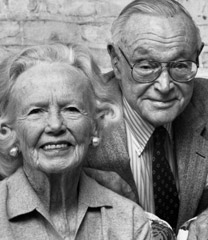
John Sherwin Sr. and his wife, Frances Wick Sherwin, came from long family traditions of philanthropy and community service. John’s cousin, Belle Sherwin, was a member of the young Cleveland Foundation’s first governing committee. The Wicks were early settlers of Youngstown, and Frances’s maternal uncle, Dr. Frank E. Bunts, was a founder of the Cleveland Clinic. With their 1953 establishment of the Sherwick Fund to serve the general charitable needs of metropolitan Cleveland, John, a banker like his father, and Frances became philanthropists in their own right.
Recognized for his active commitment to the community’s betterment, Sherwin was appointed to the board of the Cleveland Foundation in 1961. As the foundation’s chairman from 1963 to 1971, he was open to new ideas and willing to experiment. “I’ve always felt that the unique role of the foundation is to provide risk capital,” he once explained. “If somebody has an idea worth backing, then we ought to back it until it gets on its feet and can carry itself.”
In response to the new provisions of the Tax Reform Act of 1969, the Sherwins advanced a bold idea of their own. In 1973, after 20 years of operation as a family foundation, the Sherwick Fund became a supporting organization of the Cleveland Foundation. Under this precedent-setting arrangement, the Sherwick Fund maintained both a separate corporate identity and the direct participation of its donors in determining policy, while gaining the assistance of the foundation’s professional staff in identifying programs and institutions whose efforts were likely to result in the greatest civic benefit. The Cleveland Foundation gained the ability to help target additional financial resources to the more pressing needs of the community.
As the first private foundation in the country to form such a partnership with a community trust, the Sherwick Fund inspired the creation of a host of supporting organizations. Today, with assets of about $20 million, the Sherwick Fund is the largest of the Cleveland Foundation’s 10 supporting organizations. In 2012, the Sherwick Fund awarded more than $1 million in grants. Helping to perpetuate his family’s distinguished philanthropic heritage, John (Jack) Sherwin Jr. has chaired the fund’s five-person board since 1987. (From 2003 to 2006 Jack Sherwin also chaired the Cleveland Foundation.) His eldest daughter, Heather, was the first female family appointee to the Sherwick board. Heather’s sister, Laura, succeeded her.
1974
Comprehensive Health Care for the Indigent
After being turned away by several other philanthropies, the Glenville Health Association received an award of several hundred thousand dollars from the Cleveland Foundation to start a model health clinic for the indigent. The vote of confidence enabled the clinic’s organizers to raise the $2 million needed to launch, equip and subsidize the operation of the clinic until it became self-supporting. The foundation recognized that the clinic was a less costly expenditure than the long-term societal costs of failing to provide the residents of the central-city neighborhood of Glenville with preventive medical care. Opened in 1974, the clinic provided comprehensive medical, dental and mental health care to Glenville residents, regardless of their ability to pay, for more than 15 years.
1975
Expanding the Artistic Horizons of the Predecessor to MOCA Cleveland
From its beginnings in 1968 as a struggling commercial art dealership located in a Euclid Avenue storefront, the New Gallery had been on the cutting edge of Cleveland’s art scene, exhibiting (often for the first time locally) the works of serious contemporary artists such as Andy Warhol, Jasper Johns and Roy Lichtenstein. In 1974, the gallery’s co-founder, Marjorie Talalay, decided to turn the gallery into a nonprofit organization with the added mission of contemporary art education. The following year, the New Gallery received the first of a series of Cleveland Foundation grants that supported the venture’s evolution over 30 years into MOCA Cleveland, recognized nationally and internationally for its vital exhibitions and public programs. MOCA’s dynamic new University Circle building is the first in America to be designed by acclaimed Iranian architect Farshid Moussavi.
1975
Lifting Civic Spirits and Sights
City planner Lawrence Halprin, brought to Cleveland by the foundation to conduct an “urban diagnosis,” gave the community a “sense that we could be a great city again.”
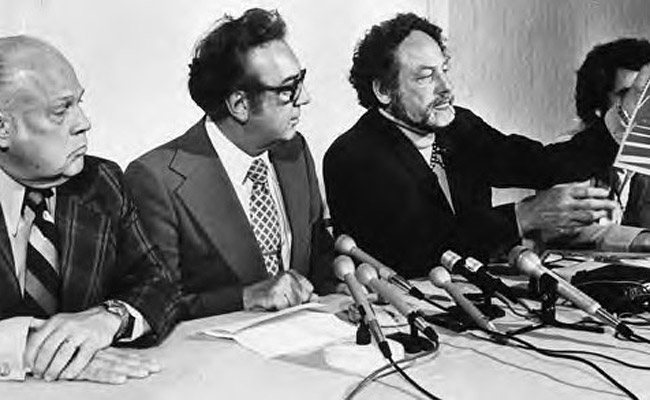 Famed urban planner Lawrence Halprin (right) presented his ideas for downtown Cleveland’s redevelopment at a public forum in 1975 attended by Cleveland mayor Ralph J. Perk (center) and May Company department store president Francis Coy (left).
Famed urban planner Lawrence Halprin (right) presented his ideas for downtown Cleveland’s redevelopment at a public forum in 1975 attended by Cleveland mayor Ralph J. Perk (center) and May Company department store president Francis Coy (left).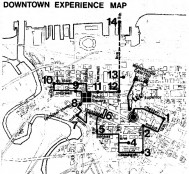 Halprin worksheet
Halprin worksheet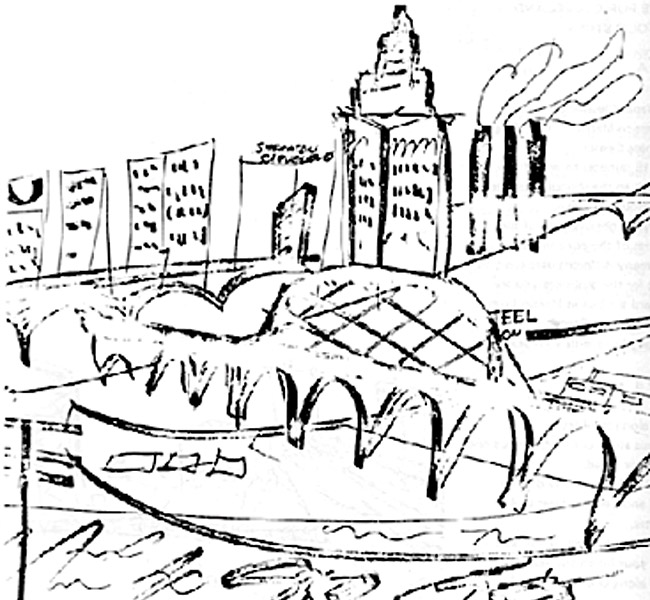 Halprin’s impressionist sketch of Cleveland’s “Flats,” which he praised as a “tremendous resource.”
Halprin’s impressionist sketch of Cleveland’s “Flats,” which he praised as a “tremendous resource.” The mood of Clevelanders in the early 1970s was bleak. The hope that Cleveland’s first African-American mayor could turn around the city had faded after a deadly confrontation in 1968 between police and an African-American street activist whose “youth development program” had been funded by the Stokes administration. The spontaneous ignition of the Cuyahoga River in 1969 made headlines around the country and gave rise to national derision of the city as the “Mistake on the Lake.” A great number of demoralized Clevelanders accepted this verdict.
Fate handed the Cleveland Foundation a means to help the community re-envision itself. In the fall of 1972, foundation director James Norton participated in an annual gathering of approximately a dozen members of the world’s intelligentsia aboard the luxurious yacht of a Greek shipping magnate, Nicolas Doxiadis. There Norton met and was impressed by Lawrence A. Halprin, a noted urban planner whose redevelopment projects included Ghirardelli Square on San Francisco’s waterfront and Nicollet Mall in downtown Minneapolis. The following February the foundation invited Halprin to Cleveland for a two-day visit during which time he conducted what was dubbed an “urban diagnosis.”
Halprin’s informal prescriptions for Cleveland’s recovery were later turned into a slide presentation that the foundation screened for the newly created Downtown Council of the Greater Cleveland Growth Association and other interested civic groups. Pleased by the favorable reception given Halprin’s preliminary ideas, in 1975 the Cleveland Foundation and the Growth Association commissioned his firm to conceive a master redevelopment plan for downtown Cleveland.
On Halprin’s next visit to Cleveland, he met with the mayor and private developers in addition to foundation and Growth Association officials. He also toured the city with Norton and a Plain Dealer reporter, who conveyed Halprin’s optimistic assessment of the city’s potential for renewal. A grassroots campaign was just under way to restore Playhouse Square’s gilded but abandoned vaudeville and movie theaters, and the planner affirmed that the quest to bring the city’s theater district back to life was achievable and valid, bucking up the small cadre of believers in this massive undertaking.
Halprin also recognized that the city’s industrial valley was ripe for mixed-used development. He called the “Flats” a “tremendous resource,” adding: “This is neat down here. If I had an office in Cleveland, this is where it would be.” Halprin’s enthusiasm for the Flats sparked a renewed interest in this undervalued section of town and paved the way for the creation of a restaurant and nightclub district along the industrial riverfront.
Halprin’s formal master plan remained largely unexecuted, but its farsighted support of an embryonic concept called the “Euclid Transit Corridor” that would link the city’s two major employment centers—downtown and University Circle—influenced the continuation of planning for rapid transit along Euclid Avenue. Thirty years in the making, the HealthLine, a $200 million reconfiguration of a 6.8-mile stretch of Euclid to accommodate rapid transit buses, finally opened in 2008 and has since attracted $5.8 billion in investment along the HealthLine route, confirming Halprin’s perception of the undertaking’s merits.
Even before the major redevelopment projects endorsed by the so-called Halprin Study came to fruition, the Californian’s positive assessment of the city’s future served to uplift the spirits of Cleveland’s business and civic leadership, which had been seriously demoralized by the many confrontations of the Stokes years, culminating in the mayor’s abrupt decision to abandon Cleveland for a new career as a television journalist in New York City. “Cleveland’s whole image was just so rotten,” foundation trustee Gwill York later said of the Halprin Study era, “but now there was a sense that we could be a great city again.”
1975
Peaceful School Desegregation
To prevent the violence that greeted court-ordered busing in Boston, the foundation poured more than $1 million into a three-year public education campaign.
In the 1970s there was no tougher educational issue “pressing on the public’s nervous system,” as then Cleveland Foundation director Homer Wadsworth put it, than the federal lawsuit filed in 1973 by the NAACP (National Association of Colored People) that charged the Cleveland public schools with segregation. In response, the foundation formed a civic study group in 1975 that examined similar cases in other districts and concluded that court-ordered desegregation was the suit’s inevitable outcome.
In the hope of preventing the violent protest that had erupted in Boston when the buses finally rolled, the foundation poured more than $1 million into a community-wide awareness campaign. Despite the discomfort certain political and business figures felt over the foundation’s leadership on this volatile issue, the board withstood the heat and maintained its support of three years of activities promoting peaceful desegregation sponsored by the Greater Cleveland Project, a coalition of nearly 60 community groups. The city remained calm when court-ordered busing began in Cleveland in 1979, setting an important precedent for the foundation to act as a moral leader in the future.
1975
Professional Ballet and Opera Companies
Cleveland Ballet, a professional classical ballet company that began to take shape in 1972, gave its first full-scale public performances at the Hanna Theatre in 1976, buoyed by a foundation grant awarded the previous year to nurture the company’s growth and artistic excellence. Also in 1976, the foundation supported the start-up of New Cleveland Opera, the city’s first major resident opera-producing company. Although ambitious and costly, these ventures filled significant holes in the city’s cultural offerings and attracted enthusiastic new audiences to their stages in Playhouse Square.
1976
Enhancement of Public Spaces
The Cleveland Foundation provided support for the planning and start-up of Rapid Recovery, a citizens’ campaign mounted during Cleveland’s bicentennial year of 1996 to clean up and beautify the trash-littered landscape along the rapid transit line linking Cleveland Hopkins Airport to downtown and points east. The project, which greatly improved the appearance of a right-of-way serving 60,000 commuters and countless visitors each day, morphed into a permanent organization, CLEAN-LAND, OHIO.
CLEAN-LAND planted trees and small flower gardens throughout the city before its transformation in 1999 to ParkWorks, an advocacy and project management organization dedicated to the creation and connection of green and open spaces of all kinds and sizes. In 2011, ParkWorks merged with Cleveland Public Art to form LAND Studio, a developer of urban parks and public art. Recognizing the importance of building these kinds of capacities, the Cleveland Foundation has been a steadfast supporter of the programs and projects of each successor organization.
1976
L. Dale Dorney Fund
Seeding a Community Foundation for Hancock County
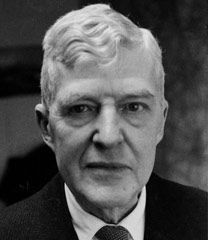
Businessman Leland Dale Dorney (see video), a native and longtime resident of Findlay, Ohio, turned over his life savings to the Cleveland Foundation upon his death in 1976. The disposition, as well as the size, of Dorney’s $5 million estate — the equivalent of $20 million today — no doubt surprised those of his neighbors and associates who mistook for stinginess this bachelor’s frugality.
Dorney, who was born in 1866, had no television or refrigerator. He preferred to spend his free time gardening and canning the fruits of his labor for storage in his root cellar. He racked up only 5,000 miles on his one and only car, a 1951 Buick, opting to walk to the Hancock Brick and Tile, a company founded by his father, where L. Dale worked as an accountant after he left his position as the comptroller of an abrasives manufacturing company in Worcester, Massachusetts. Dorney’s first career, in combination with his inheritance, had left him financially secure, and his thrift and wise money management turned these resources into a fortune.
Dorney already knew about the benefits of giving back through a community foundation when he showed up unannounced at the Cleveland Foundation’s offices in the early 1970s. Lacking an appointment, Dorney was nonetheless seen by foundation director Homer Wadsworth, who enjoyed their initial chat and subsequent discussions about law, finance and philanthropy. As a result, Dorney decided to establish a fund at the foundation whose purposes would be to improve the quality of life in his hometown of Findlay and to strengthen business education programs at Ohio colleges and universities.
The Cleveland Foundation set up a Findlay Distribution Committee, which awarded nearly $3 million in grants from the L. Dale Dorney Fund and its successor supporting organization, the Findlay-Hancock County Community Foundation, between 1977 and 1999. Forty-five percent of these monies went to support projects in Hancock County, located 40 miles south of Toledo, and Findlay (pop. 41,000), the county seat. The Cleveland Foundation ultimately recognized that the supporting organization that had been created in 1992 could be of even greater benefit to the Findlay area if it were granted independence. In 1999, the Cleveland Foundation spun off the Findlay-Hancock County Community Foundation and approved a one-time distribution of $18 million from Dorney principal to the new trust.
Since its inception, the Findlay-Hancock County Community Foundation has awarded $25 million in grants. The cumulative impact of its grantmaking can be seen in Findlay’s 2012 ranking by Site Selection magazine as the second-best “micropolitan” area for business expansion. Just as important, the Findlay-Hancock County Community Foundation has fanned the flame of philanthropy, receiving donations from literally thousands of individuals. The foundation’s endowment now exceeds $70 million. Leland Dale Dorney would be thrilled by the realization of his dream—that his estate might one day form the nucleus of an ever-growing endowment dedicated to the good of his hometown.
1976
Start-up of Friends of Shaker Square
Shaker Square, the first planned shopping center in Ohio, opened on the eastern border of Cleveland in 1929 to acclaim as one of the country’s most architecturally refined retail districts. With its exclusive shops, elaborate window displays and special events, such as a holiday lighting ceremony, the shopping center—named for its location in suburban Shaker Heights—remained a popular destination well into the 1950s.
At the approach of its 50th anniversary, however, Shaker Square had fallen into serious disrepair. In 1976, the Friends of Shaker Square, a broad-based citizens’ coalition formed to push for the shopping district’s restoration, won matching grants of $39,000 each from the Cleveland Foundation and the City of Cleveland to pay for a professional staff. The grants enabled Friends to plan how to most effectively spend federal development funds promised by the city to attract merchants and shoppers back to Shaker Square. This work marked the rebirth of a landmark district whose vibrancy is crucial to the stability of both Cleveland and Shaker Heights.
1977
Safeguarding Cleveland’s Cultural Assets
The foundation took creative steps to secure the financial futures and continued artistic development of the city’s major performing arts organizations at a time when federal support was waning.
The Cleveland Foundation took creative steps to secure the financial futures and continued artistic development of Cleveland’s major performing arts organizations in the late 1970s. The foundation’s first program officer for cultural affairs, Patricia Jansen Doyle, recognized that the city’s new ballet and opera companies and its more established theater groups were operating on the assumption of ever-increasing government funding at a time when national research predicted a leveling off of federal support in general. With board approval, in November 1977 Doyle invited the Cleveland Ballet, Cleveland Play House, Cleveland Orchestra, Great Lakes Shakespeare Festival, Karamu House, New Cleveland Opera Company (later Cleveland Opera) and the Playhouse Square Foundation to participate in the Cleveland Cultural Resources Study.
The participating arts organizations received technical assistance, including a long-range economic analysis of their revenues and expenditures, to inform their preparation of five-year plans. Doyle also assembled a committee of high-powered business leaders chaired by Allen C. Holmes, managing partner of the law firm Jones, Day, Reavis & Pogue to review and critique the group’s plans, with the objective of nurturing the interest of local corporations in supporting the arts. At the end of this yearlong process of self-study, six of the organizations formed a consortium to pursue a joint $2 million challenge grant from the National Endowment for the Arts (NEA). Since the Cleveland Orchestra had recently been a beneficiary of an NEA challenge grant, it did not participate.
In 1979, the NEA awarded the Cleveland Consortium for the Performing Arts a $1.75 million challenge grant that required a 3-to-1 match. The Holmes committee reached out to 180 corporate executives, requesting financial support. During the three-year challenge period, the participating arts organizations raised nearly $13 million in new and increased donations from corporations and individuals. Each of the consortium members dramatically enlarged its base of support, making it possible for all to expand their artistic horizons.
1978
Critical Infrastructure Replacement
The long-overdue repair or replacement of Cleveland’s roads, bridges and sewers was brought to the fore in a 1978 national study after the foundation arranged with the study’s author, Washington’s Urban Institute, for Cleveland to be one of the cities examined. “The Future of Cleveland’s Capital Plant” documented a staggering $1.3 billion backlog of needed capital improvements.
The Greater Cleveland Growth Association and the Cleveland Foundation brought the Urban Institute back to help city officials develop a master capital improvement and financing plan. This timely intervention enabled Cleveland to obtain hundreds of millions in federal, state and local funds earmarked for infrastructure rebuilding. Perhaps the most important of the resulting capital projects was the rebuilding of bridges carrying traffic around the Terminal Tower. Without this improvement, Forest City Enterprises, the skyscraper’s new owners, would have been unable to proceed with a $200 million plan to develop new offices, a hotel and a shopping mall called The Avenue at Tower City at the site.
1978
Stewardship of the City’s Lakefront Parks
Starting with a $25,000 grant to the Shaker Lakes Garden Center that underwrote a 1974 study by the William A. Behnke Associates landscape architecture firm of ways to improve conditions in Cleveland’s municipal-run parks, the Cleveland Foundation led an effort to restore these invaluable recreational assets.
Recognizing that the City of Cleveland could no longer afford to maintain all of its 3,000 acres of parklands, the foundation guided political discussions that led to the transfer in 1978 of responsibility for the maintenance and management of Edgewater, Gordon and Wildwood (now Euclid Beach) Parks from the city to the Ohio Department of Natural Resources (ODNR).
The renamed Cleveland Lakefront State Park was immediately restored to cleanliness and working order under state stewardship, and ODNR subsequently spent more than $40 million to outfit the parklands with new fishing piers, boat launches, marinas, bike and jogging paths, restrooms and picnic areas. Within a few years, park patronage skyrocketed, leaping from 750,000 visitors annually to more than 12 million.
1979
Digging Out from Default
The foundation-supported Operations Improvement Task Force marshaled the expertise needed to return the City of Cleveland to solvency.
 A greasy-spoon diner and flophouse at Payne and Walnut Avenues downtown, c. 1968—emblems of the City of Cleveland’s intensifying financial distress
A greasy-spoon diner and flophouse at Payne and Walnut Avenues downtown, c. 1968—emblems of the City of Cleveland’s intensifying financial distress 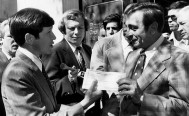 Mayor Dennis Kucinich’s ceremonial presentation of a post-default debt payment
Mayor Dennis Kucinich’s ceremonial presentation of a post-default debt payment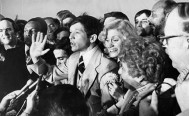 Kucinich proclaiming victory on the eve of his election as mayor in 1977
Kucinich proclaiming victory on the eve of his election as mayor in 1977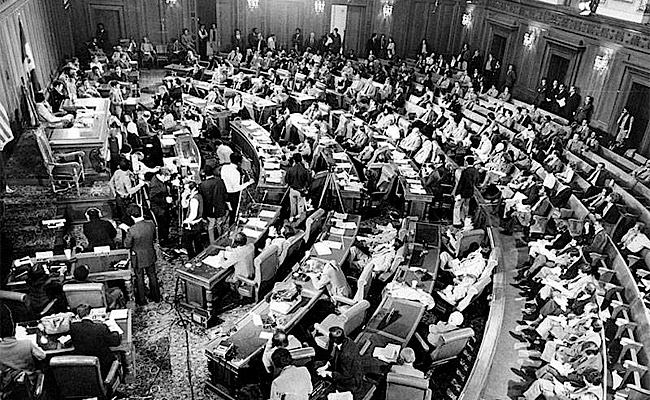 On December 15, 1978, Cleveland City Council considered and rejected Mayor Kucinich’s 11th-hour plan to avoid default.
On December 15, 1978, Cleveland City Council considered and rejected Mayor Kucinich’s 11th-hour plan to avoid default.In 1978, during the mayoral administration of Democrat Dennis J. Kucinich, Cleveland became the first city in the nation to default on its financial obligations since the Great Depression. The following year Republican George V. Voinovich ran against Kucinich, whose combative stance toward big business contributed to a decision by local banks to call the $15.5 million in short-term notes at a time when the city was $30 million in debt.
The day after his election as mayor, Voinovich approached the Cleveland Foundation and the George Gund Foundation with a proposal. In exchange for his agreement to run for mayor, Voinovich had extracted a promise from a small group of corporate leaders that they would provide him with volunteer experts from business and industry to conduct a massive city management assessment once he took office. Now he needed funding for what he was calling the Operations Improvement Task Force.
In less than one month, the foundation approved a grant of $150,000 to help create the Operations Improvement Task Force, provided that half of its money be set aside for implementation of task force recommendations and that the foundation’s entire contribution be matched. $800,000 was ultimately raised.
In early January 1980, 90 loaned executives began fanning out in teams to every city department to observe procedures, ask questions and review documents. By the spring of 1980, the Operations Improvement Task Force (headed by Eaton Corporation chair and chief executive officer E. Mandell de Windt, who had recruited Voinovich to run) had produced more than 800 recommendations. These ranged from computerizing the city’s record-keeping to amending the city charter to provide a four-year term for the mayor. The Voinovich administration implemented almost 75 percent of the suggested cost-cutting and efficiency measures; and indeed, with additional guidance from the state-imposed Financial Planning and Review Commission, the city was able to balance its budget and refinance its defaulted notes during Voinovich’s first year in office.
1979
Reclaiming a Once Magnificent Parkway
A master plan for Rockefeller Park was prepared in 1979 by the William A. Behnke Associates landscape architecture firm with foundation support. A centennial gift to the city by Cleveland industrialist John D. Rockefeller, the parkway had fallen into disrepair due to lack of maintenance, vandalism and crime. Behnke’s master plan suggested ways to solve traffic, parking and security problems, halt the deterioration of the massive stone bridges spanning the parkway, bring back a now-drained ornamental lagoon and restore the park’s most unique feature: the Cleveland Cultural Gardens, which represented the city’s rich ethnographic diversity. Behnke’s master plan marked the beginning of the reclamation of this magnificent parkway.
1980
Boosting Biomedical Research
Strategically supported by the foundation, basic sciences research at Case Western Reserve University and the Cleveland Clinic has helped to drive the region’s transformation into a national center of biomedical commercialization.
In the early 1980s, the School of Medicine at Case Western Reserve University (CWRU) faced a difficult and momentous transition. The chairs of its departments of microbiology, anatomy, pathology and physiology had either resigned or retired. How the vacancies were filled would affect the school’s competitiveness for national science grants well into the next century. The ability of many Cleveland hospitals to attract topflight physicians also depended on the rebuilding of the medical school’s basic sciences departments, as new faculty members would hold joint hospital appointments.
The new dean of the medical school, Richard E. Behrman, looked to the Cleveland Foundation for funds to enable his new department heads to update laboratories and attract nationally regarded researchers. Behrman’s request for $3 million was three times larger than the foundation’s largest grant to date.
Acting on the advice of a team of 11 nationally known basic scientists led by cardiovascular-pulmonary specialist Alfred P. Fishman, M.D., of the University of Pennsylvania, the foundation agreed to support the rebuilding of CWRU’s basic sciences departments one at a time. Site reviews were to be conducted by the consultants prior to the release of funding for each successive department.
Between 1981 and 1986, the medical school received four large grants totaling $2.15 million, a foresighted investment in an institution vital to the practice of medicine locally and to the vigor of the regional economy. By the end of the 1980s, the new basic sciences faculty had attracted about $20 million in additional federal research funds, and the medical school had announced plans to build a new $78 million biomedical research center. The school’s increasing momentum had also helped to propel CWRU back into the national ranks of the top 20 private research universities.
A three-year foundation grant of $575,000 awarded to the Cleveland Clinic Foundation in 1988 similarly enhanced that institution’s capacity to perform advanced biomedical research. Until then, the hospital’s physicians had conducted research with a largely physiological or biochemical focus. With the foundation’s support, cardiologist Bernadine Healy, the recently arrived director of the Clinic’s research institute, created and staffed a major new department of molecular biology, making possible (among other things) research in the emerging field of genomics and gene sequencing.
The foundation’s vote of confidence in Healy’s vision empowered her. Before leaving to head the National Institutes of Health in 1991, Healy continued to broaden the Clinic’s research interests, promoted the critical place of research in the Clinic’s medical education program, and took the first steps toward relocating the Clinic’s scattered research departments into a single complex. Today, the Lerner Research Institute, which opened in 1999 with support from the Cleveland Foundation, houses 18 multidisciplinary teams in its department of cellular and molecular medicine alone.
The repositioning of the Cleveland Clinic and CWRU’s medical school at the cutting edge of biomedical research has advanced scientific knowledge and medical understanding. Valuable in its own right, the ongoing process of discovery has also been one of the engines driving Greater Cleveland’s transformation into a nationally recognized center of biomedical commercialization—a high-tech, high-growth industry cluster key to northeastern Ohio’s economic recovery and global competitiveness.
1980
Hard Data about the Regional Economy
The Center for Regional Economic Issues (REI), in operation at Case Western Reserve University’s Weatherhead School of Management from 1986 until 2005, was an outgrowth of a foundation-sponsored study of the battered Cleveland economy conducted by the Rand Corporation in 1980. In addition to assessing regional economic trends on an industry-by-industry basis—hard data that had been lacking from civic deliberations about how to reverse the region’s postwar stagnation—the California think tank’s report pointed out the benefits of establishing an ongoing capacity to conduct sophisticated economic research on which informed economic development policies and programs could be based. In partnership with the Federal Reserve Bank of Cleveland, the Cleveland Foundation established REI in 1983 to provide hard data and analysis about the regional economy and to make this information widely available for public- and private-sector decision making. The successful effort to enhance Greater Cleveland’s capacity to monitor its economic activity was led by Susan Lajoie Eagan, who later served as the foundation’s executive vice president.
1980
Treu-Mart Fund
Philanthropy’s First Collaboratively Managed Endowment Monies
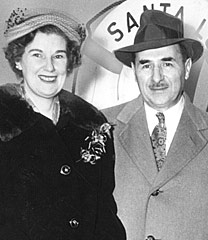
Since its establishment in 1980, the Treu-Mart Fund of the Cleveland Foundation and the Jewish Community Federation of Cleveland has strived to focus its grantmaking on underserved populations or new areas of need. “We believe we can make a difference with that strategy,” explains fund president Arthur W. Treuhaft. However, the fund’s most impactful gift may well be to the field of philanthropy. Treu-Mart is believed to be the first fund in the country to have been set up under the auspices of a community foundation and a major sectarian philanthropic organization to support activities that a jointly appointed board of trustees deems to be in the best interest of the broad community.
This long, productive partnership has accomplished all the objectives of the fund’s creators, William C. and Elizabeth M. Treuhaft. The uncle and aunt of Art Treuhaft, Bill and Libby were each revered for their devoted and wise leadership of a range of civic organizations. When working in concert, they were a powerhouse team whose actions carried immense weight.
The Treuhafts had astutely perceived that the Cleveland Foundation would benefit from exposure to the federation’s exemplary work with living donors. Within a few short years, the foundation had wholeheartedly embraced the concept of donor-advised funds and established a program to provide this philanthropic service. Similarly, the Treuhafts believed the Jewish Community Federation, which relied heavily on volunteer leaders to carry out its planning and programs, would benefit from access to the foundation’s staff-produced analyses. Finally, the Treuhafts wanted to demonstrate to large, independent public charities the power of working together. The concept of collaboration, modeled so effectively over the years by Treu-Mart’s seven-member governing board, has become a key component of the region’s redevelopment strategy.
The name the Treuhafts chose for their fund—a combination of Treuhaft and Libby’s maiden name, Marting—aptly reflected the vibrant linking of two strong personalities and two rich philanthropic traditions. Elizabeth’s grandfather, John C. Marting (after whom Baldwin Wallace University’s Marting Hall is named), was a Methodist minister and educator with a deep commitment to the humanities. Bill Treuhaft, the founder and chairman of a multinational manufacturing company, Tremco International, spent his formative college summers as a counselor at Camp Wise, a training ground for Cleveland’s Jewish leadership for more than a century. In appreciation of Bill’s wide-ranging civic contributions, the Jewish Community Federation named him an honorary trustee for life.
Bill and Libby’s life partnership, which ended with his death in 1981, often found them working on different aspects of the same causes and projects. While he was busy in the 1970s helping to shape the future of the city’s educational and cultural center as the first chairman of the newly federated Case Western Reserve University and founding chairman of University Circle Inc., she was chairing the new University Circle Center for Community Programs, which organized museum field trips for thousands of schoolchildren. Libby also helped to establish the Cleveland Orchestra’s children’s concerts. “Here were these great cultural riches available,” observed Libby before her death in 1998, “but perhaps a little intimidating.”
Children remain central to the mission of the Treu-Mart Fund, which annually awards about $1 million in grants. In recent years, the board—consisting of three donor-appointed directors, two directors appointed by the Jewish Community Federation and two directors appointed by the Cleveland Foundation—has coalesced around a vision of a Greater Cleveland where every child receives the means to thrive. To that end, the Treu-Mart Fund has supported several promising collaborations covering a broad spectrum of youth development efforts. These initiatives include two new public-private partnerships conceived by the Cleveland Foundation: Invest in Children, a county-wide early childhood development initiative, and MyCom, a community-wide mobilization campaign to connect young people with enriching experiences and caring adults. The Treu-Mart Youth Development Fellowship, a professional development program initiated in 2004 by the Mandel Center for Nonprofit Organizations at Case Western Reserve University (CWRU) and now housed at the university’s Weatherhead School of Management, strengthens the community’s capacity to produce positive outcomes for its youth. The program has introduced dozens of area agencies that work with middle-school children to best-practices research in an intensive training program at CWRU, where Libby Treuhaft earned a master’s degree in French literature in 1933.
1981
Systematizing Housing Rehabilitation
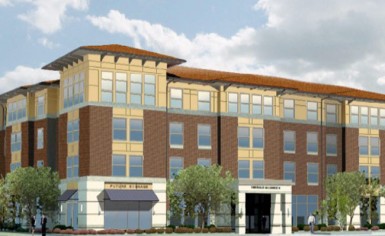 Cleveland Housing Network was the lead developer of Greenbridge Commons, permanent housing for chronically homeless individuals, in the Fairfax neighborhood.
Cleveland Housing Network was the lead developer of Greenbridge Commons, permanent housing for chronically homeless individuals, in the Fairfax neighborhood.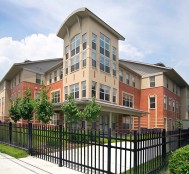 The Cleveland Housing Network assisted the Mt. Pleasant Now nonprofit development corporation with the construction of the Union Court senior apartments.
The Cleveland Housing Network assisted the Mt. Pleasant Now nonprofit development corporation with the construction of the Union Court senior apartments.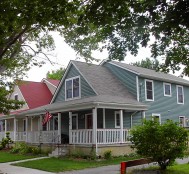 Cleveland Housing Network financing programs have helped low- to moderate-income families become homeowners.
Cleveland Housing Network financing programs have helped low- to moderate-income families become homeowners.The creation of Cleveland Housing Network (CHN) to provide technical support for housing rehabilitation represented an important first step toward the development of a coherent civic strategy for neighborhood revitalization. CHN built on the success of an innovative program conceived by the Hough-based Famicos Foundation, which acquired and rehabilitated substandard homes that were then rented at very reasonable rates to carefully screened low-income families, who had the option of taking title to the properties after 15 years.
The Cleveland Foundation invested $500,000 in the start-up and operation of CHN, which showed neighborhood development organizations (NDOs) struggling to rehab one or two houses a year how to dramatically increase their annual rates of production. By 1986, CHN had established a working relationship with nine NDOs, resulting in the rehabilitation of more than 220 housing units throughout Cleveland.
In 1989, CHN launched a new program to boost the percentage of owner-occupied properties in Cleveland by providing financial assistance and incentives to aspiring home buyers with low to moderate incomes. To date, CHN’s Homeward Program has produced more than 1,000 units of market-rate housing, generating more than $60 million in direct capital investment in Cleveland’s neighborhoods.
More recently, CHN has become involved, with ongoing foundation support, in the rehabilitation or development of multifamily properties, senior housing and permanent housing for the chronically homeless.
1982
Coming of Age of Great Lakes Shakespeare Festival
Beginning with a small grant that allowed Great Lakes Shakespeare Festival (GLSF) to market its productions of classic plays to audiences outside the summer theater’s home base in suburban Lakewood, the Cleveland Foundation has patiently nurtured GLSF’s artistic growth. The foundation was the first to encourage the company, now known as Great Lakes Theater, to lease the Ohio Theatre on Playhouse Square, a win-win proposition for tenant and landlord. (The Hanna Theatre on Playhouse Square ultimately became the company's permanent home.)
Among the offerings of GLSF’s 1982 opening season in the magnificently restored 1,000-seat theater was an 8.5-hour theatrical adaptation of the Charles Dickens novel Nicholas Nickleby, directed by the festival’s new artistic director, Ireland’s Abbey Theatre alum Vincent Dowling. The elaborate production, made possible in part by a $125,000 foundation grant, attracted local raves and national attention for the up-and-coming theater company.
1982
Securing the Playhouse Square Superblock
In 1982, the Cleveland Foundation became the first community foundation in the country to make a program-related investment (PRI), thus ensuring that the restoration of the Playhouse Square theaters and revitalization of the theater district did not grind to a halt. The concept behind a PRI is to invest principal to advance projects that have not only socioeconomic value but also the potential to produce a reasonable return on the investment. In applying a $3.6 million PRI toward the purchase of the Bulkley and Selzer Buildings on Euclid Avenue near East 14th Street, the foundation secured the land needed for the reconstruction of the State Theatre stage house to accommodate professional ballet and opera productions at a time when the PlayhouseSquare Foundation (PSF) did not have the necessary funds to act.
While many others were pessimistic about downtown Cleveland’s future, the foundation had embraced PSF’s vision of a theater district enlivened by restaurants, hotels, shops and office buildings. The Bulkley and Selzer Buildings were central to the envisioned redevelopment of the Playhouse Square superblock. In 1986, the foundation sold property it had acquired as part of an attempt to redevelop the Bulkley complex as an enclosed shopping center. However, the sale to PSF provided the theater district with a much-needed parking lot, which ultimately became a profit center.
Finding real estate development to be feasible, PSF went on to bootstrap the financing needed to build a 205-room Wyndham Hotel at Euclid Avenue and Huron Road. The Bulkley Building, which the foundation sold for $6.1 million in 1987 to a private developer, ultimately became part of PSF’s income-producing real estate holdings. The foundation’s gap financing—a $1 million-plus loan and an agreement to hold a second mortgage of $850,000—made the building’s purchase possible in 2002.
1983
Joining the Early Battle against AIDS
The foundation’s support for preventative education and proactive treatment helped to lessen the disease’s impact in Cuyahoga County.
The Cleveland Foundation’s consistent support of efforts to battle AIDS began only a year after U.S. health officials coined the disease’s name: Acquired Immune Deficiency Syndrome. In 1983, foundation staff met with the City of Cleveland’s health commissioner and encouraged the city to move forward with planning for a widespread education program targeted at high-risk groups. In 1986, the foundation followed up with a $67,000 grant for the city’s first public awareness campaign. Spearheaded by program officer for health Robert E. Eckardt, these initiatives stood in marked contrast to the attitude adopted in other peer Midwestern cities, where AIDS was still misunderstood as affecting only the LGBT (lesbian, gay, bisexual and transgender) community, rather than as a major public health threat.
Although spared the brunt of the epidemic, Cleveland saw a doubling of reported AIDS cases every year between the early 1980s and 1988, when Eckardt joined forces with his counterpart at Cleveland’s George Gund Foundation to push for the city’s inclusion in a demonstration project initiated by the Ford Foundation to stimulate a community-wide attack on the disease in nine metropolitan areas. Ford’s National Community AIDS Partnership Project was based on Cleveland’s response to the epidemic. The Cleveland and Gund Foundations raised $1 million for project grants that helped to pave the way for what became a collaborative, broad-based response to AIDS in Greater Cleveland.
With continuing financial support from the two foundations, a Citizens Committee on AIDS/HIV was convened in 1992. The 13-member committee (which included a number of persons living with AIDS/HIV) reviewed service and funding gaps and developed an action plan out of which grew the AIDS Funding Collaborative (AFC). Supported by Cleveland and Gund, the Cuyahoga County Commissioners, United Way Services and the National AIDS Fund, AFC awarded grants to implement the citizen committee’s wide-ranging recommendations and encourage the community’s coordination of services. Since its inception in 1994, AFC has distributed more than $8 million to private and public-sector providers for research, treatment and related social services.
In the period before early screening tests and improved antiretroviral treatments transformed AIDS into a long-term chronic disease for most patients in the United States, the Cleveland Foundation’s advocacy of preventative education and proactive healthcare programs helped to lessen the disease’s impact in Cuyahoga County.
1984
Envisioning North Coast Harbor
Carefully targeted grants nurtured the redevelopment of the Lake Erie shoreline at the foot of East Ninth Street.
Cleveland’s North Coast Harbor grew out of a planning process begun by the Greater Cleveland Growth Association, which commissioned a fresh look at the city’s sadly deteriorated park system in 1975. The costs of the study were underwritten by a $40,000 grant from the Cleveland Foundation.
A subsequent series of carefully targeted grants nurtured the gradual redevelopment of the Lake Erie shoreline at the foot of East Ninth Street. In 1984, the foundation commissioned a master plan for the 149-acre industrialized site. A collaboration between Zuchelli, Hunter & Associates and the local landscape architecture firm William A. Behnke Associates, the “Cleveland Waterfront Study” recommended the dredging of an “inner harbor” to create a new recreational asset that would also be a prestigious setting for hotels, offices, retail shops, restaurants and such attractions as a museum and an aquarium.
The exciting prospect of opening up public access to the waterfront led (with the foundation’s gentle prodding and provision of operating support) to the establishment of the North Coast Development Corporation, a nonprofit authority charged with managing lakefront development. The dredging of a 7.5-acre harbor and the construction of a surrounding walkway and park were completed in 1987 with federal, state and local funding. Two world-class attractions immediately chose to locate at North Coast Harbor: the Great Lakes Science Center and the Rock and Roll Hall of Fame and Museum (the architectural, program and financing plans for which were developed with underwriting from the Cleveland Foundation). The vision of the harbor as Greater Clevelanders’ downtown entry point to the lakefront, as well as a major tourist and convention destination, continues to inspire public and private investment in redevelopment of the land surrounding this dramatic setting.
1985
F. James and Rita Rechin Fund
Pacesetting Partnership with Living Donors
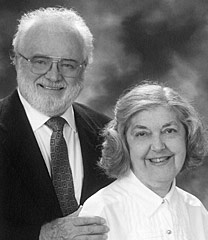
The F. James and Rita Rechin Fund was the first donor-advised fund established at the Cleveland Foundation. “Our fund is modest in the worldly scheme of things,” said Jim Rechin, a retired TRW Inc. group vice president, at the time of the fund’s creation in 1985, “but to those on the receiving end, it’s very significant. And that makes us feel wonderful.”
Natives of New York, the Rechins began creating a lasting philanthropic legacy as a young married couple. Busy rearing four children, they nonetheless opened their Buffalo home and their hearts to orphans at Christmas. In 1955, Jim, a mechanical engineer with experience designing jet engines, accepted a job with TRW, and the Rechins moved to Cleveland. Rita made what turned into long-term commitments to volunteer at Hillcrest Hospital and the Western Reserve Christ Child Society. Jim volunteered, too, notably as a board member of Vocational Guidance Services, a job training agency for people with barriers to employment. Whenever the Rechins bought a new car, they donated their old vehicle to the Salvation Army.
The Rechins’ collaboration with the Cleveland Foundation, facilitated by attorney Michael Horvitz, reflected a zest for tackling tough community issues and promoting innovation. Hoping to build what Jim termed “another focal point for addressing Cleveland’s needs,” the Rechins decided the best use of their fund’s income was as socioeconomic “R&D money.”
Rita passed away in 2012, six years after the death of her husband. But the Rechins’ philanthropic legacy endures, most visibly in the blossoming of the foundation’s donor-advised program. Today, the Cleveland Foundation works with about 440 donor-advised funds, each allowing an individual, family or corporation active involvement in grantmaking, as well as access to the foundation’s programmatic, management and investment expertise.
1986
A Catalytic Industrial Park for MidTown
MidTown Corridor, Inc., a private neighborhood reclamation effort fueled largely by the vision and energy of its co-founder, Premier Industrial Corporation chairman and CEO Morton Mandel, had within its first five years succeeded in stemming disinvestment in the deteriorating inner-city business district in which Premier was located. Physical improvements, business expansions and new business development were visible throughout the corridor stretching from University Circle to downtown between Euclid and Carnegie Avenues.
But the embryonic economic development corporation recognized that it had reached a turning point by 1986. With the support of a foundation grant, MidTown conceived a bold plan that persuaded the City of Cleveland to acquire and demolish the outdated, oversized, unused factory buildings that occupied so much of the corridor’s potentially valuable real estate. Additional foundation grants enabled MidTown Corridor to purchase a cleared 20-acre parcel at East 65th Street and market it as an industrial park. Although not an overnight success, MidTown Commerce Park marked the first stage in the corridor’s repositioning as a “health-tech” district, which is now home to 600 businesses, 18,000 employees and 2,000 residents.
1986
Encouraging the Film Festival’s Relocation Downtown
During its first decade, the Cleveland International Film Festival screened the best of contemporary world cinema primarily at the Cedar Lee Theatre in Cleveland Heights. Recognizing the financial imperative of making this annual event accessible to filmgoers across the region, the Cleveland Foundation encouraged the festival to move its 1986 opening-night festivities downtown to Playhouse Square’s Ohio Theatre by underwriting the installation of the requisite projection and audio equipment. The festival permanently moved downtown to a theater complex in Tower City in 1991. It has since enjoyed a 600 percent growth in attendance.
1986
Turnaround in Hough
The foundation’s championship of a unique proposal to build townhomes near the flashpoint of the Hough riots marked the beginning of reinvestment in the central-city neighborhood.
In the early 1980s the Cleveland Foundation helped finance Lexington Village, the first market-rate rental housing built in the east-side Cleveland neighborhood of Hough in 50 years, precisely because it was a “project of scale,” not a small program that tinkered at the edge of a problem. The 183 townhomes proposed for Phase 1 of Lexington Village had the potential to offer a turnaround solution for disinvestment in the predominately African-American neighborhood, which had never been rebuilt since being engulfed in riots in 1966.
The opportunity to stem the neighborhood’s continuing decline was presented by the Famicos Foundation, a nonprofit developer of housing for low-income families, whose director approached the Cleveland Foundation with a unique proposal to build rental property at Lexington Avenue and East 79th Street, near the flashpoint of the Hough riots. The foundation’s program officer for civic affairs (and future director), Steven A. Minter, embraced the quixotic project. He recognized the immediate benefits for a neighborhood of which he had become a dedicated champion during his days as a caseworker for the City of Cleveland’s welfare department. Minter also saw the project’s potential to provide concrete evidence that middle-class suburb dwellers, provided the proper inducements, could be persuaded to live in and help to revitalize central-city neighborhoods.
The civic affairs program officer persuaded the board to make a program-related investment of $800,000 in Lexington Village—only the second time to date that the foundation had used the still-unconventional tactic of investing principal in a project. Minter then went on to assemble a coalition of 27 public and private lenders that provided the additional $13.3 million in needed working capital.
The marketing of the Phase 1 units, completed in 1986, was so successful that another $6.4 million in bank loans and private-sector and foundation investments was raised to build 93 more units on adjacent land. As the foundation had believed, Lexington Village set off a chain reaction of new development in Hough, including the Church Square shopping center, additional townhome complexes along the main arteries of Chester and Euclid Avenue, and the construction of single-family residences on side streets. Hough is no longer a dead zone, and redevelopment is slow but ongoing.
1986
Updated Citywide Development Plan
The Cleveland Foundation contributed $300,000 to the $1 million cost of updating what was then Cleveland’s last citywide plan, completed in 1949, and its last downtown plan, completed in 1959. Unveiled in 1988, “Civic Vision 2000” was the culmination of two years of studies and dozens of community meetings conducted under the leadership of city planning director Hunter Morrison. Morrison, who had city planning degrees from both Harvard and Yale, had worked for the Hough Area Development Corporation before taking the planning chief’s job in 1980.
Civic Vision affirmed the importance of neighborhood redevelopment to the city’s future, presenting detailed land-use plans for each residential area of the city. Adopted by the City Planning Commission in 1989, Civic Vision influenced the direction of downtown redevelopment, calling for continuous public access to the waterfront, a pedestrian-friendly city center and the development of a critical mass of attractions to lure tourists and residents. The plan received the 1992 American Planning Association National Planning Award for Comprehensive Planning.
1987
First City-History Encyclopedia
With the publication of The Encyclopedia of Cleveland History, Cleveland became the only U.S. city to have such a reference work, which covered everything from the region’s prehistoric inhabitants to the city’s recent recovery from default. Weighing in at five pounds and 1,127 pages, the encyclopedia had first been suggested to its eventual co-editors, David D. Van Tassel and John J. Grabowski, by retired Cleveland Foundation director Homer C. Wadsworth. A series of foundation grants supported the research and writing of more than 2,300 entries. An updated edition of the encyclopedia can now be found online.
1988
Sustained Resources for Neighborhood Redevelopment
“Nowhere else in the United States is there a more extensive, carefully arranged and widely supported system of neighborhood investment.”
By the 1980s, Cleveland boasted a wealth of neighborhood development organizations (NDOs), but few of them had the staff or technical skills to rehab more than a handful of housing units per year, and most could only dream about tackling a commercial redevelopment project. Wishing to accelerate the notoriously slow process of neighborhood revitalization, local funders seized on the opportunity to include Cleveland in a national demonstration project undertaken by the Ford Foundation to increase the productivity of NDOs in selected test cities. With the Cleveland Foundation, the George Gund Foundation, the Standard Oil Company and the City of Cleveland joining forces to provide the required 2-to-1 match of Ford’s $300,000 grant, the $1 million Cleveland Neighborhood Partnership Program (CNPP) was launched here in late 1985.
By early 1987, CNPP had selected six NDOs from across the city through a competitive application process to receive two annual grants averaging $85,000 per year—the means that NDOs had long needed to plan and execute high-impact projects. With the six grantees expected to stimulate $13 million in new development, the Cleveland Foundation recognized the importance of finding a permanent way to coordinate public and private resources in order to turbocharge neighborhood redevelopment.
The foundation reconvened corporate, neighborhood and philanthropic leaders to discuss this issue, and these discussions led to the creation of Neighborhood Progress, Inc., an umbrella coordinating and planning organization that has (with the foundation’s steadfast support) provided Cleveland’s community development organizations with operating monies, technical assistance and working capital needed to build new homes, rehab commercial spaces and improve neighborhood amenities.
Established in 1988 with the foundation’s contribution of $500,000 to its first three years of operation, Neighborhood Progress, Inc. (recently renamed Cleveland Neighborhood Progress) has since mobilized $26 million from public and private sources to support community development organizations (CDOs) that have attracted residents, jobs and new retail, cultural and recreational amenities to the Buckeye-Woodland, Detroit Shoreway, Fairfax, Glenville, Hough, Ohio City, Slavic Village and Tremont neighborhoods (among others). Over the past 20 years, Cleveland’s CDOs have produced nearly 7,500 units of new and rehabilitated housing and developed 1.7 million square feet of new and rehabilitated commercial space.
In a 2003 evaluation commissioned by the Cleveland and Gund Foundations, national community development expert Tony Proscio praised Neighborhood Progress’s work, which demonstrates how sustained investment can pay real dividends for residents, their neighborhoods and the city as a whole. “Nowhere else in the United States,” Proscio stated, “is there a more extensive, carefully arranged, centrally coordinated and widely supported system of neighborhood investment than in Cleveland.”
Proscio’s observation that Cleveland’s CDOs needed to consolidate their disparate gains into a larger, more coherent redevelopment effort that could help to restore market forces in their neighborhoods led to a new Neighborhood Progress initiative begun in 2004 with the support of nearly $4 million in grants and program-related investments from the Cleveland Foundation. These monies, which enabled six CDOs chosen through a competitive application process to undertake large-scale redevelopments, have since leveraged more than $100 million in public and private investments.
1988
Understanding the Causes of Poverty
In response to concerns about Cuyahoga County’s unacceptable poverty rate, which had surpassed the nationwide average, the Cleveland Center for Urban Poverty and Social Change was established at Case Western Reserve University in 1988 with joint funding from the Cleveland and Rockefeller Foundations. Under the leadership of director Claudia Coulton, the center set out to provide the area’s socioeconomic policymakers with previously unavailable data that might help to explain the county’s high and ever-increasing poverty rate.
Released in 1989, the so-called Coulton Report revealed the precise geographical areas with high concentrations of poverty and helpfully broke down poverty into four types based on degrees of newness or persistence. The growing demand for a highly educated workforce, the outmigration of jobs to the suburbs, the isolating influence of public housing and the sharp decline in economic investment in central-city neighborhoods—all played a role in impoverishing individuals and families. In pinpointing the causes of poverty, the Coulton Report contained the germs of new ideas about how to combat the problem.
1989
George and Janet Voinovich
Memorializing a Departed Child
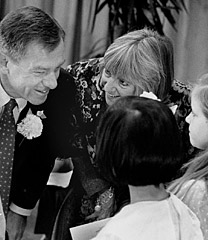
The Cleveland Foundation has long served as a steward of gifts made in memory of a recently departed loved one. During World War II, the foundation even started a memorial fund to provide Clevelanders with a significant way to honor the sacrifice of relatives lost in combat. Retired U.S. Senator George V. Voinovich and his wife, Janet, are among the bereaved parents who have found solace in this form of philanthropy. After the tragic death of their nine-year-old daughter just days after Voinovich won the Republican primary for Cleveland mayor in 1979, the couple created the Molly Agnes Voinovich Memorial Fund to “share Molly’s love with people,” as Voinovich, who won the mayor’s race and went on to serve as Ohio governor and in the U.S. Senate, had simply explained.
Molly Agnes, the youngest of four siblings, was killed when a van that had run a red light struck her while she was walking back after lunch to her fourth-grade classroom at Oliver Hazard Perry School in Cleveland’s Collinwood neighborhood. Fittingly, her parents decided that income from Molly’s memorial fund, which the Cleveland Foundation has administered since 1989, should help to pay for special academic programs, unbudgeted materials and equipment, and enrichment activities for students at Oliver Hazard Perry and other schools in the Cleveland Metropolitan School District.
1989
Lake-Geauga Fund
Grantmaking Expanded to Adjacent Counties
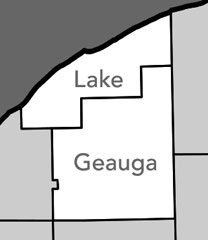
The year 2014 marks the 25th anniversary of the start of grantmaking by the Lake-Geauga Fund, an initiative, supported by the Cleveland Foundation, to meet the often unique needs of communities to the east of Cuyahoga County. By the mid-1980s, when the idea for the fund was conceived, nearby Lorain and Summit Counties had started community foundations, but neither Lake nor Geauga County had such philanthropic support for social services, arts, health care, education and economic development.
Lake County philanthropists John Sherwin Jr. and his father, who were directors of the Cleveland Foundation’s Sherwick Fund supporting organization, approached the foundation with the suggestion that a new fund be created to provide Lake and Geauga County residents with a means to address local needs. Both rural jurisdictions had pockets of poverty (as well as wealth) and faced the onrush of exurban development. Recognizing the idea’s merit, the foundation contributed a $500,000 challenge grant to launch the Lake-Geauga Fund.
With a leadership gift of $250,000 in hand from the Sherwick Fund toward the 3-to-1 match, the Sherwins, assisted by Arthur S. Holden Jr., a patron of Lake County’s Holden Arboretum and a founder of Lakeland Community College, spearheaded a successful fund-raising campaign. By 1989 a seven-member advisory committee of local leaders had been assembled to recommend grants.
In the fund’s first three years alone, more than $1 million was awarded. The list of recipients was wide-ranging, from a new birthing center in Geauga’s Amish community of Middlefield to the new Farmpark of Lake Metroparks. With the fund’s subsequent support of the innovative plans, programs and projects of nearly every local institution and agency of note, the lives of the people of Lake and Geauga Counties have been immeasurably improved by the fund’s grantmaking, which approaches $15 million to date.
The fund’s presence also has helped to promote private interest in giving. Witness the timing of the Lake-Geauga Fund’s grant of $100,000 (matched by a Cleveland Foundation grant of $100,000) toward the renovation of the Nassau Astronomical Observing Station at Observatory Park in Montville Township. When the twin grants were announced in late summer 2013, the Geauga Park District had already raised from private sources more than half of the needed $1.175 million for the project, which will make the observatory even more useful and welcoming to teachers, students and amateur astronomers. The $590,000 that private donors had contributed as of August 2013 came on top of $2.1 million previously raised by the park district to cover the purchase of the observatory from Case Western Reserve University and the acquisition of more than 200 acres of surrounding land.
As its founders intended, the Lake-Geauga Fund has helped the residents of these counties recognize they have the means to take care of their own.
1991
Encouraging Collaboration on Medical Research and Education
By raising awareness of the promise of biotechnology as an economic driver, a foundation-initiated study commission paved the way for new biomedical research and technology-transfer partnerships.
In the early 1990s, the Cleveland Foundation sought to bridge the nearly century-old rift between University Hospitals of Cleveland (UH) and the Cleveland Clinic and to illuminate how the region’s economy could be restructured if these clinical competitors could collaborate on medical research and education. Few people believed that anything could be done to repair the fractured relationship, but foundation chairman and UH trustee John J. Dwyer and Robert E. Eckardt, then senior program officer for health, urged the board to use the foundation’s convening powers to raise the issue publicly.
In 1991, the foundation formed the Study Commission on Medical Research and Education, a panel of nationally prominent medical administrators and corporate executives chaired by William G. Anlyan, M.D., chancellor for health at Duke University. The commission was charged with recommending possible avenues of collaboration among UH, the Clinic, the school of medicine at Case Western Reserve University (CWRU) and Metropolitan General Hospital, the precursor of MetroHealth, Cleveland’s public hospital system. To emphasize its serious intent, the foundation suspended grantmaking in the areas of medical research and education until the study commission released its findings.
Published in the summer of 1992, the commission’s final report raised awareness of the promise of biotechnology as an economic driver for the region, but it did not produce changes in institutional relationships overnight. Yet the study’s recommendations, which Eckardt and foundation director Steve Minter continued to bring to the attention of new leaders at the concerned institutions over the next decade, planted seeds that ultimately bore fruit.
In 1995, CWRU’s school of medicine, which had long been exclusively associated with UH, entered into a joint venture with the Cleveland Clinic to create a center of excellence in structural biology. With significant ongoing support from the foundation for faculty recruitment and state-of-the-art equipment, the Cleveland Center for Membrane and Structural Biology built a vibrant research community dedicated to accelerating the discovery of therapeutic agents to slow, prevent or even reverse an array of diseases and conditions.
Another important collaboration took shape in 2002, when UH, the Clinic and CWRU joined forces to help found BioEnterprise, a state-supported initiative aimed at facilitating the commercialization of locally developed bioscience technologies and fostering the growth of biomedical companies in northeastern Ohio. The foundation’s initial commitment of $4 million was the first private funding the initiative received, and it rallied the philanthropic community around the venture. With significant ongoing support from the foundation and other private funders, BioEnterprise has created, recruited or grown more than 170 biomedical companies to date, and those companies have in turn attracted more than $1.5 billion in new venture capital. More than 500 technology transfer deals have been arranged with industry partners by BioEnterprise.
The nagging fear that northeastern Ohio might miss the opportunity to reinvent itself as a national center of innovation and entrepreneurship in the biosciences and biotechnology has been replaced by pride in the sector’s solid performance. In the mid-1990s, Cleveland was not a leading biotechnology market. Fifteen years later, the situation had changed. In 2011, Cleveland bested its peer cities in the Midwest both in the number of biomedical companies that successfully raised venture capital (43) and in the total dollars raised ($226 million). The synergistic relationships that have been nurtured between the region’s medical-research institutions and its biotechnology entrepreneurs have clearly paid off.
In 2013, the Cleveland Clinic concluded its long search for a partner with whom to collaborate on medical education. In June, the Clinic and CWRU announced the decision to relocate the university’s school of medicine to a new $80 million facility on the Clinic’s campus. With $50 million in construction monies already in hand—including a $10 million commitment from the Cleveland Foundation, its largest grant to date—the school will be ready to educate and train the next generations of physicians by 2016. Its opening will burnish Greater Cleveland’s reputation as a healthcare mecca and swell the ranks of young doctors contributing fresh ideas and energy to the region’s biotechnology pipeline.
1992
Boosting the Manufacturing Sector’s Growth and Competitiveness
By the 1990s, northeastern Ohio, like the nation, had lost a significant number of manufacturing jobs. Nevertheless, more than one-fifth of all jobs in the region were still in manufacturing, and each year the sector generated more than $11 billion in payroll spending. Especially concerned about the retention and expansion of Cleveland-based manufacturing companies, the Cleveland Foundation provided more than $210,000 in 1992 to the Cleveland Advanced Manufacturing Program (CAMP) to enable the management and technology consultants to open a “teaching factory” for college students.
Working in collaboration with Cuyahoga Community College and Cleveland State University, CAMP’s Manufacturing Learning Center offered hands-on courses that supplemented the colleges’ curricula in order to produce the highly skilled workers needed to ensure the competitiveness and growth of Cleveland’s small to mid-sized manufacturing companies. A second grant of $200,000 in 1994 helped CAMP obtain $5 million in federal monies to expand the reach of the learning center, which had already gained national prominence for the effectiveness of its training, to older workers.
1992
Gateway’s Public Plaza and Art
When completed in 1994, Gateway—the intended home of the Cleveland Indians’ new baseball stadium and the Cleveland Cavaliers’ new basketball arena—was expected to dramatically enhance downtown’s attractiveness as a destination for tourists and residents. To ensure that the public spaces surrounding the sports complex were as exciting as the stadium and arena themselves, in 1992 the Cleveland Foundation made a $750,000 grant and a $2 million program-related investment to provide Gateway Economic Development Corporation with the resources to design and construct gracious exterior plazas filled with public art.
A competitive application process overseen by Cleveland Public Art attracted 125 submissions, from which four artists were commissioned to create outdoor works that became overnight sensations with fans. R. M. Fischer’s Sports Stacks, incorporating elements of the complex’s exhaust system … Nancy Dwyer’s benches entitled Meet Me Here and Who’s on First? … and a planting bed/seating area decorated with Penny Rakoff’s historic photographs of the old Central Market that once occupied the site and Angelica Pozo’s ceramic tiles of market produce would likely not have been created without the support of the foundation’s “patient money.”
1993
African-American Philanthropy Committee
Raising Awareness of a Rich Tradition of Giving
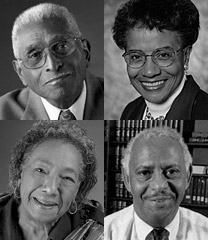
Beginning with the period before the Civil War, when their charitable focus was on abolishing slavery and securing aid for ex-slaves, through today, when their giving is likely to be combinations of individual and organization voluntarism and monetary or material support of beneficiaries well known to the donor, African Americans have a rich philanthropic history, according to Adrienne Lash Jones, associate professor emerita of African-American studies at Oberlin College.
Dr. Jones, who became a member of the Cleveland Foundation board in 1988, had made scholarly studies of African-American philanthropy, an area of history underappreciated by the larger society and perhaps even by some African Americans themselves. She recognized that the Cleveland Foundation was well positioned to help raise awareness among African-American Clevelanders about the societal impact and personal rewards of philanthropic engagement.
In 1993, Dr. Jones, several other current or former members of the foundation’s board, including the Reverend Elmo A. Bean (upper left), pastor of St. James A.M.E. Church, Doris A. Evans, M.D. (upper right), and businessman David G. Hill (bottom right), and a select number of other African-American civic leaders, including Cleveland Municipal Court judge Lillian W. Burke (bottom left), accepted the foundation’s invitation to form an African-American outreach advisory committee.
The group, which was renamed the African-American Philanthropy Committee in 2001, has sought, through a variety of educational activities, to nurture and broaden the charitable pursuits of African Americans who are generous supporters of their churches or active in fraternal or sororal organizations devoted to community service, and to inspire others who have yet to find a personally meaningful way to give back to their community.
The African-American Philanthropy Committee has recently begun to sponsor biannual summits on the use of wealth for charitable purposes. The 2010 and 2012 summits were open to members of the public and attracted a broad range of attendees, including young adults who were encouraged to perpetuate African-American traditions of philanthropy that can be traced back to (among other antecedents) the Free African Society, a mutual aid society founded by free blacks in Philadelphia in 1787.
1993
Holsey Gates Handyside
Donor of the First Historic Preservation Funds
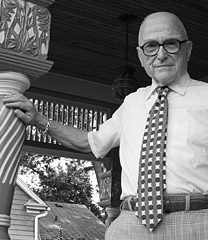
Cleveland native Holsey Gates Handyside spent more than 30 years in the U.S. Foreign Service, working primarily in the Middle East. The highlight of his career, which began in 1955 and took him to Egypt, Lebanon, Iraq and Libya, was his appointment to serve as ambassador of the West African nation of Mauritania.
Having traveled the world, Ambassador Handyside decided upon his retirement in 1985 to return to his hometown and devote himself to the preservation of his family home in the Cleveland suburb of Bedford. The Queen Anne Revival home, which stands at 762 Broadway Avenue and is listed on the National Register of Historic Places, was built in 1894 by his great-grandfather, Washington Gates, a member of the family that originally settled Gates Mills, Ohio, and later operated a mill near Bedford at the Great Falls of Tinker’s Creek.
In order to enable the maintenance of the Victorian-era residence by the Western Reserve Historical Society, Ambassador Handyside embraced the pioneering idea of using life insurance as a vehicle to establish a preservation fund at the Cleveland Foundation. With the foundation as the owner and permanent beneficiary of the policy, the insurance premiums paid by the donor are tax-deductible. Established in 1993, the Holsey Gates Handyside Charitable Remainder Trust supplemented a smaller historic preservation fund—the foundation’s first so-designated fund—that Handyside had previously created in 1988. A gift of life insurance, the former diplomat had recognized, was a “problem-free way to produce substantial dollars for a desired charitable enterprise.”
1993
Reinhold W. Erickson, D.D.S.
Turning Church Spires into Glorious Nighttime Landmarks
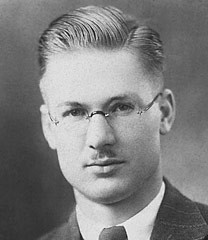
Reinhold W. (Ray) Erickson (see video) had an unusual dream. He wanted to light up the church steeples of Cleveland that can be seen from Interstate 71. Erickson wasn’t particularly religious, according to his attorney. He simply found the spires charming and thought it was a shame they couldn’t be enjoyed at night.
A dentist who practiced in East Cleveland, Ohio, for 40 years after his graduation from the dental school of Western Reserve University, Erickson died without kin in 1992 at the age of 87. Counting on the Cleveland Foundation to help him realize his dream, he directed that income from his life savings of $370,000 should first be used to illuminate as many of the 21 towers visible from the interstate as possible. (Thereafter, the monies were to be used to advance health education.) The Cleveland Foundation honored the last wishes of this quiet-living retiree, establishing the Reinhold W. Erickson Fund in 1993 to pay for the lighting and installation costs. The Cleveland Restoration Society oversaw the work.
The imposing Romanesque spire of the Pilgrim Congregational Church in Tremont became the first “Beacon of Hope,” as the lighting program was named. To date, 17 churches have received Erickson’s gift of light, ranging from Trinity Episcopal Cathedral (the downtown Cleveland home of the Episcopal Diocese of Ohio) to Tremont’s Zion United Church of Christ, founded by German immigrants in 1867.
1995
“National Heritage Corridor” Designation for Ohio & Erie Canalway
The Ohio Canal Corridor Inc. received a $40,000 foundation grant to support its efforts to secure a “National Heritage Corridor” designation for the historic Ohio & Erie Canal route, extending south from Lake Erie through the Cuyahoga River Valley to New Philadelphia, Ohio. Congress awarded the canalway this recognition in 1996, paving the way for Ohio Canal Corridor Inc. to receive $1 million in federal funds. A second $40,000 grant in 1997 enabled the heritage corridor’s chief advocacy and management group to develop a strategic plan for using these funds to advance development of the Ohio & Erie Canal Towpath Trail, an envisioned 100-mile-long scenic hiking and biking trail.
1996
Reforming Public School Governance
The directors of the Cleveland and George Gund Foundations chaired a nonpartisan study commission that led to voter approval of mayoral control.
Steven A. Minter felt duty-bound to accept Cleveland mayor Michael R. White’s request that he co-chair the Mayoral Commission on School Governance in 1996. The Cleveland Foundation had a long tradition of leading efforts to improve the public schools, and the foundation’s seventh chief executive was personally devoted to education reform.
During the first three years of Minter’s tenure, the foundation had stepped forward to make the lead commitment to a $16 million philanthropic-corporate partnership called the Cleveland Initiative for Education (CIE), which sought to establish universal postsecondary scholarship and employment programs requested by the system’s superintendent as incentives for his students. Minter deemed the initiative so critical to the well-being of the city and its children that he joined the CIE board and helped guide its evolution into a broad-based coalition working to effect school improvement on multiple fronts.
Minter’s new assignment came as a result of a proposal floated by two Ohio General Assembly members recommending that control of the state’s failing public school systems be vested in the top elected official of the system’s home city. If adopted (as similar legislation had been in Chicago), Clevelanders would no longer elect school board members.
The prospect of losing hard-won voting rights did not sit well with many of Cleveland’s African-American leaders, and the leaders of the Cleveland Teachers Union were opposed to ceding control of the schools to a politician with whom they had publicly wrangled over contract negotiations. Yet “mayoral control” seemed to be making a difference in the performance of the Chicago schools. A nonpartisan study of the concept, Mayor White recognized, might help to ensure it a fair hearing in the General Assembly. To chair the study, he looked to civic leaders who could be counted on to do a thorough examination and who would be perceived as having no axes to grind: Steve Minter and David Bergholz, then executive director of the George Gund Foundation.
Like all champions of public education, Minter had watched with increasing concern the comings and goings of 14 Cleveland schools superintendents and the dysfunction of the system’s elected board. The board proved incapable of heading off either state control, which the federal courts imposed on the system in 1995, or the “fiscal emergency” declared by the state auditor in 1996. Finding these developments intolerable, Minter had given considerable thought to the issue of school governance and believed that mayoral control might be a workable alternative.
To inform its deliberations, the Mayoral Commission on School Governance conducted research, sought perspective from national experts and held public hearings that brought out contentious opposition to the concept of an appointed school board. Minter knew the hearings would change no minds, but believed them necessary to the integrity of the study process. He did not want it said that the commission had ignored legitimate concerns. Minter took special pains to solicit the feedback of then U.S. Congressman Louis Stokes, who had represented Cleveland’s 11th District since 1970 and whose opinions counted with both the public and the powers-that-be. The congressman helped to shape a positive outcome by vetoing the idea of having suburban representatives on the appointed board and making his opposition to mayoral control known without mounting the barricades.
The commission issued its final report in December 1996, arguing that “those involved in governance must have the ability to make a variety of financial, policy and other strategic decisions that will effectively chart the correct course of the Cleveland Public Schools…. We believe these types of skills can best be brought to bear through an appointed board structure.” The commission co-chairs succeeded in moving “the debate beyond the political to considerations of management and education,” according to Mayor White.
The Ohio General Assembly ushered in a new day for the Cleveland public schools by enacting legislation that enabled the city’s mayor to name a chief executive officer of the public schools and appoint a nine-member board of education. The legislation called for a referendum on mayoral control after four years. When the vote came on November 5, 2002, more than 70 percent of the city’s electorate said yes to the perpetuation of the untraditional governance model that has been essential ever since to the initiation of substantive efforts to improve Cleveland’s public schools.
1997
Public Funding for Arts and Culture
Cuyahoga County is now almost without peer in the level of public funding provided to arts organizations and individual artists.
In late 1996, the Cleveland Foundation Civic Study Commission on the Performing Arts issued a warning that the stability and permanence of cultural assets throughout the seven-county region were under threat. In response, the foundation teamed in 1997 with the George Gund Foundation and the Cleveland Cultural Coalition to convene the Community Partnership for Arts and Culture (CPAC), a community-wide group of committed arts leaders, practitioners and advocates, to develop a regional strategic plan to address the sector’s needs.
With support from the two foundations, CPAC commissioned unprecedented research on the value of arts and culture to the regional economy. Published in 2000, the research documented that the sector annually contributed $1.3 billion to the local economy and that arts and cultural organizations employed about 3,700 full-time equivalent staffers, who earned salaries totaling more than $105 million.
CPAC simultaneously led a two-year engagement process in which more than 7,000 northeastern Ohio residents expressed their views on how to more effectively connect people to arts and culture, make that sector a partner in neighborhood, community and regional development, and secure financial and other resources needed to sustain and grow the sector.
Under the leadership of Thomas Schorgl, CPAC became a nonprofit organization charged with carrying out the community’s strategic plan. Among CPAC’s many subsequent accomplishments, none was more critical than its championship of public financing of the arts and culture, an endeavor endorsed by a $300,000 Cleveland Foundation grant in 2003 (see video).
At the dawn of the new millennium, Cuyahoga County had among the lowest levels of public support for the sector of any peer community. CPAC initiated conversations with the county commissioners that led to their agreement to place on the 2004 ballot a joint economic development and arts and culture issue that would have provided the latter sector with $10 million annually via a property tax. Issue 31 failed by a slim margin.
CPAC rallied county officials and state legislators around a new funding plan, which required the Ohio General Assembly to create a special-assessment district for arts and culture in Cuyahoga County. Issue 18, which called for a 10-year increase in the cigarette excise tax to fund the district, was placed on the ballot in 2006. Thanks to the hard work of CPAC’s dedicated corps of arts advocates, this time voters approved the funding plan.
Today, Cuyahoga County’s arts and cultural organizations receive public monies for operations and programs, awarded annually in a competitive application process. To date, $112 million has been distributed to 237 organizations, large and small. Each year, Cuyahoga Arts & Culture, the county agency that has assumed responsibility for inspiring and strengthening the community through judicious investment of the excise tax funds, also presents $20,000 fellowships to 20 individual artists whose work has enriched the quality of life here.
Cuyahoga County is now almost without peer in providing a high level of public funding to maintain the vibrancy of the arts and cultural assets within its jurisdiction. In turn, public support has contributed to the strengthening of the arts and culture sector as an economic driver. The 182 nonprofits that received public funds from Cuyahoga Arts & Culture in 2011 employed more than 8,700 people and accounted for more than $286 million annually in direct spending, including more than $140 million in salaries.
1997
Trust for Public Land’s Local Field Office
The Trust for Public Land (TPL), a national leader in land conservation based in California, has been working in Ohio since 1974. With the support of a $100,000 grant from the Cleveland Foundation in 1977, the organization played a key role in acquiring 30,000 acres of land for the Cuyahoga Valley National Park around Blossom Music Center, at the former site of the Richfield Coliseum, and along the Ohio & Erie Canal Towpath Trail, a scenic hiking and biking trail.
With foundation support, TPL opened a Cleveland field office in 1997, facilitating its efforts to connect Cleveland residents to Lake Erie, the Cuyahoga River and the national park. TPL-Cleveland subsequently acquired land for the Lake Link Trail connecting the river valley to Cleveland’s near west side and purchased property needed to extend the Towpath Trail through Cleveland’s industrial Flats. In 2006, the foundation made a $1 million program-related investment in TPL’s Ohio Land Protection Fund, a revolving loan fund that allows the organization to act quickly to protect environmentally sensitive land.
1998
Maintaining the Excellence of the Lively Arts
Over the last quarter century, the foundation has awarded grants totalling almost $200 million to sustain the vibrancy and viability of this critical sector.
The first in-depth examination of the well-being of the area’s performing arts organizations in 20 years was undertaken by the Cleveland Foundation in 1996. The Cleveland Foundation Civic Study Commission on the Performing Arts issued two major recommendations: If the excellence of the region’s orchestral and chamber ensembles, opera companies, theaters, and dance presenters and troupes was to be maintained, a substantial renewable source of public funding of the arts must be secured, and the leadership, business acumen and operational effectiveness of lively arts organizations must be dramatically improved.
The Cleveland Foundation’s grantmaking in arts and culture traditionally had focused on nurturing artistic aspirations and organizational growth. In 1999, the foundation revised its strategy, unveiling the first of a continuing series of initiatives aimed at maintaining the excellence and stability of the region’s leading arts organizations. The first initiative, dubbed BASICs (“Building the Arts’ Strength in Cleveland”), was a $10 million commitment to foster the professionalism of 14 participating organizations. The grantees received operating support for the duration of the five-year initiative and one-time grants to strengthen financial management, strategic planning or information technology.
To continue the progress generated by BASICs, in 2004 the foundation committed $5 million to implement an Arts Advancement Program. The three-year initiative sought to encourage operating efficiencies, develop highly skilled leaders and improve the financial positions of six mid-sized arts organizations. Deemed ready for additional capacity-building by nationally recognized experts in arts management, Apollo’s Fire (Cleveland Baroque Orchestra), the Cleveland Film Society, Cleveland Public Art, Great Lakes Theater Festival, MOCA (the Museum of Contemporary Art Cleveland) and Young Audiences of Greater Cleveland received technical assistance, working capital and grants to underwrite needed staffing, planning and feasibility studies, and marketing.
Sustaining Excellence, an invitation-only program of special support, was launched in 2008 to counter the effects of the economic downtown. This initiative extended a safety net of $6.6 million in grants to continue the movement of a spectrum of arts organizations toward self-sufficiency. In 2011, the foundation kicked off Engaging the Future, a three-year initiative that enlisted 11 established arts and cultural organizations of varying sizes—from the Cleveland Orchestra to GroundWorks DanceTheater—in an all-out effort to adapt to rapidly shifting demographics, technologies and tastes. The goal of this initiative, which provided $1.44 million in first-year grants, is to give the participating organizations the time and means to attract the younger, more diverse, more tech-oriented audiences they will need to survive for generations to come.
Over the last quarter century, the Cleveland Foundation has awarded grants totaling almost $200 million to sustain the vibrancy and viability of the region’s arts and cultural amenities. The foundation led its peers in deciding at the turn of the 21st century to redirect significant resources to building the management capacities of local arts organizations. It remains at the cutting edge in recognizing the cultural and economic imperative of providing long-term support for arts professionalization and new-audience development.
1999
Helping Young Children Thrive
Cuyahoga County’s early childhood development program, a reform initiative advocated by the foundation, has received recognition as a national model.
Aware that many Cleveland youngsters lacked basic necessities and proper parenting, the Cleveland Foundation helped to move the community closer to the day when every child born in Cuyahoga County receives the care necessary to thrive. Acting on new research showing the years from birth to five to be the most critical developmentally, the foundation successfully advocated for a major redesign of the county’s child welfare services. Rather than merely treating the problems presented by neglected or abused children, county officials collaborated with the foundation’s senior program officers for social services and civic affairs on a new delivery system aimed at fostering good parenting practices and preventative care.
The resulting early childhood development initiative, which came to be called “Invest in Children,” was launched in 1999. Parenting information placed in the hands of the families of all babies born within the county’s boundaries underpinned the program. Diagnostic and follow-up visits to newborns’ homes by qualified nurses directed families, as needed, to existing support services, such as healthcare insurance and quality day care. County, state and federal governments teamed to contribute $30 million to the $40 million rollout. The foundation authorized a start-up grant of $3.5 million and took the lead in raising the remainder of the $10 million needed to sustain the program during its first three years, lining up 23 corporate and philanthropic partners. Invest in Children, which received national recognition as a model for other urban areas, is now an integral component of Cuyahoga County’s social services system.
1999
Return of Farming to the Cuyahoga River Valley
The Cleveland Foundation’s interest in preserving the unique natural and cultural heritage of the Cuyahoga River Valley dates back to its support in the mid-1970s of the Cuyahoga Valley Association (CVA), a citizens advocacy group that played a key role in the creation of the Cuyahoga Valley National Park in 1975. In addition to providing operating funds, the foundation supported CVA’s efforts to protect the perimeter of the newly established park from commercial exploitation.
Over the years the foundation has helped the park enhance its infrastructure and programs. Perhaps the most innovative of these improvement projects is the Countryside Initiative, which was undertaken to preserve the rural heritage of the Cuyahoga Valley. Planning for the project began in 1999 with a Cleveland Foundation grant of $100,000. Believed to be the only endeavor of its kind in the country, the initiative has nurtured the return of agricultural food production to historic farmlands located within the boundaries of what is now the Cuyahoga Valley National Park and provided park patrons with opportunities to visit a working farm.
The Countryside Conservancy, the project’s manager, set a goal of rehabilitating the 20 or so old farmsteads within the park’s boundaries and leasing them to persons committed to practicing sustainable agriculture. Long-term leases are awarded on a competitive basis, and the first request for proposals went out in 2001. A second foundation grant of $80,000 in 2003 gave the initiative, which was still in its formative stages, time to prove its effectiveness. To date, 11 farms have been placed back into fruitful production.
2001
Promoting Green Buildings
The Cleveland Foundation provided critical early-stage programmatic support over several years to the Cleveland Green Building Coalition, formed in 1999 by the Oberlin College environmental studies program to educate community and real estate leaders about the economic, environmental and health benefits of green building. The foundation’s first grant of $50,000 was awarded in 2001, several years before the movement to advance sustainable development gained a national advocacy arm.
The coalition, which is now a chapter of the United States Green Building Council, applied the foundation’s initial grant toward the renovation of a 1914 Ohio City bank building as a collaborative work space for its staff and volunteers and several other environmental groups. The Cleveland Environmental Center at 3500 Lorain Avenue was also a landmark demonstration project—Ohio’s first commercial retrofit of a historical building with energy-saving features.
2001
Updated Approaches to Successful Aging
Greater Cleveland began mobilizing the resources needed to serve the coming explosion of aging but still active adults with the foundation’s encouragement.
Every single day for the next 10 years, 10,000 Americans will turn 65. The Cleveland Foundation began laying the groundwork early in the 21st century for the community to assess and develop the resources that will be needed to serve this explosion of aging but still active adults. In 2003, the foundation launched a three-year initiative called Successful Aging that provided $4 million to implement the recommendations of a task force of community leaders and professionals convened in 2001 to discuss ways to engage seniors through volunteering and civic involvement, lifelong learning and job opportunities.
The first grants enabled Cuyahoga Community College, Fairhill Center for Aging, Goodrich-Gannett Neighborhood Center, the Murtis H. Taylor Multi-Service Center, the OASIS Institute and the Orange City School District to establish lifelong learning and development centers. The centers, most of which began operations in early 2004, are places for older adults to congregate, network, participate in learning activities and connect with opportunities to give back to the community.
An assessment tool was created to help every municipality in northeastern Ohio evaluate and address how well they meet the needs of their aging populations in three key areas: home life, community life and mobility. Home life gauges the affordability and availability of appropriate housing choices. Community life measures the availability and accessibility of social and safety services. Mobility assesses how easy it is for seniors to get around in their communities.
Finally, the initiative gave nonprofit organizations the means to create or expand programming that serves seniors. For example, the Retired Senior Volunteer Program of Cleveland (RSVP) received a grant to enlarge its Experience Corps. The program, which began in 1997, mobilizes senior volunteers to tutor grade K-3 students in Cleveland schools. With the foundation’s support, RSVP increased the program’s reach from six to 16 schools and from 60 to 260 volunteers. Experience Corps not only helps improve children’s reading skills, but also provides older individuals with meaningful volunteer activities, which have been shown to improve physical and mental health.
Building on the concept of providing opportunities for seniors to give back to their communities, the Cleveland Foundation announced in 2013 that it will take a lead role in developing an “encore career” program for Greater Cleveland. The foundation will consult with Encore.org, a San Francisco-based nonprofit, on the best means locally to help find second careers in public service for individuals who may be close or at retirement age, but still wish to be productive.
2002
Empowering Grassroots Citizens and Groups
The foundation’s Neighborhood Connections grant program has tapped the creativity and capabilities of everyday folks.
At the time of its creation in 2002, Neighborhood Connections was the only known small-grants program administered by a private philanthropy that delegated total decision-making authority to ordinary citizens. An outgrowth of the Cleveland Foundation’s long-term commitment to physical revitalization and leadership development in Cleveland’s neighborhoods, Neighborhood Connections started with an initial fund of $1.35 million to be distributed over three years to grassroots groups judged to have the most compelling ideas for improving their particular sections of the city. The program was conceived in part to build on the successes of Cleveland’s neighborhood redevelopment movement, which had gained critical mass as the result of sustained private and public investment in the capacity of local community development corporations catalyzed by the Cleveland Foundation and the George Gund Foundation.
Neighborhood Connections aimed to expand the scope of revitalization activities by tapping into the aspirations and creativity of block clubs, ad hoc bands of neighbors and concerned individuals. A committee of representative neighborhood residents selected by the Cleveland Foundation from a community-wide pool of nominees determines which improvement projects should receive grants of $500 to $5,000. A required dollar-for-dollar match serves to build the capacity of the grantees and to encourage them to partner with more established organizations.
Now in its 11th year, Neighborhood Connections has provided $6.5 million to help realize 1,800 project proposals. By showing respect for the vision and capabilities of everyday folks, this innovative program has changed the way things get done in Cleveland.
2002
Stimulating Economic Growth
The foundation has invested more than $85 million in a concerted attempt to foster innovation, entrepreneurship, business attraction, global competitiveness and the development of new high-potential industry clusters.

 Entrepreneurship: Wood Trac, an affordable, drop-ceiling system developed and marketed by Sauder Woodworking, a family-owned business in Ashland, Ohio
Entrepreneurship: Wood Trac, an affordable, drop-ceiling system developed and marketed by Sauder Woodworking, a family-owned business in Ashland, Ohio Innovation: CleveMed’s wireless sleep monitor
Innovation: CleveMed’s wireless sleep monitor Business growth: The Greater Cleveland Partnership’s business development team
Business growth: The Greater Cleveland Partnership’s business development team Business attraction: The Global Center for Health Innovation
Business attraction: The Global Center for Health InnovationJob and business creation has been a top priority of the Cleveland Foundation since 1985, when the foundation’s board responded to a growing sense of urgency about the region’s stagnation by elevating economic development grantmaking to a full-fledged program area. In 2002, the foundation recruited a senior fellow for economic development, who began meeting with business, political and academic leaders to formulate a comprehensive strategy. The foundation has since invested more than $85 million in helping to create a network of programs that support innovation and entrepreneurship, business attraction and growth, advancements in manufacturing, global competitiveness and the development of new high-growth industry clusters, including biotechnology and advanced energy.
These activities are carried out by a number of new intermediaries, such as BioEnterprise, Global Cleveland, JumpStart and MAGNET. All have received foundation grants to support their start-up, early-stage operation and programmatic expansion.
More recently, the Cleveland Foundation has sparked the creation of innovative programs specifically designed to create good jobs for city residents, including employee-owned business cooperatives and a microlending fund to seed the business ideas of grassroots entrepreneurs. Replacing the tens of thousands of manufacturing positions lost throughout the region since the 1970s remains a work in progress, but the intense focus on economic development has produced measurable results. One hopeful statistic: Manufacturing jobs were up by 1,000 between October and October 2013.
2003
A Greater University Circle
An unprecedented collaboration is attracting capital investments, jobs and residents to the Circle and surrounding neighborhoods.
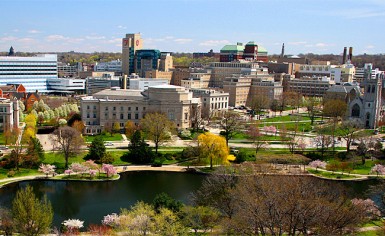 Wade Lagoon, the tranquil heart of Cleveland’s cultural hub
Wade Lagoon, the tranquil heart of Cleveland’s cultural hub  Participants in Parade the Circle, an annual celebration of creativity
Participants in Parade the Circle, an annual celebration of creativity  University Circle’s cultural institutions have long been renowned for their enriching educational activities.
University Circle’s cultural institutions have long been renowned for their enriching educational activities. Uptown, the Circle’s exciting, new high-density neighborhood, has all the amenities associated with urban living.
Uptown, the Circle’s exciting, new high-density neighborhood, has all the amenities associated with urban living. Proposed townhomes for East 118th Street
Proposed townhomes for East 118th Street Sold out! Heritage Lane townhomes, built within walking distance of the Circle
Sold out! Heritage Lane townhomes, built within walking distance of the Circle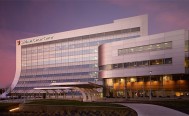 Circle institutions have invested or are planning to invest billions in capital improvements, such as University Hospitals of Cleveland’s new Seidman Cancer Center.
Circle institutions have invested or are planning to invest billions in capital improvements, such as University Hospitals of Cleveland’s new Seidman Cancer Center.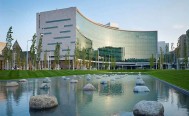 Upper Chester, which abuts the Cleveland Clinic, is the next Circle neighborhood slated for redevelopment.
Upper Chester, which abuts the Cleveland Clinic, is the next Circle neighborhood slated for redevelopment.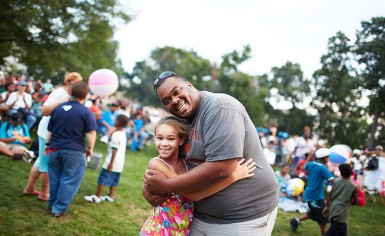 Wade Oval Wednesdays, summertime’s popular outdoor music series
Wade Oval Wednesdays, summertime’s popular outdoor music series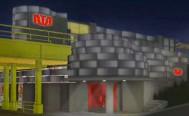 Artist’s conception of the new Regional Transit Authority station planned for Mayfield Road in Little Italy
Artist’s conception of the new Regional Transit Authority station planned for Mayfield Road in Little Italy 27 Coltman, a luxury townhome development on the eastern boundary of University Circle
27 Coltman, a luxury townhome development on the eastern boundary of University Circle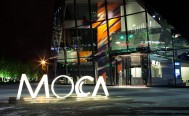 MOCA Cleveland’s faceted, mirrored, four-story art gallery anchors the Uptown development.
MOCA Cleveland’s faceted, mirrored, four-story art gallery anchors the Uptown development.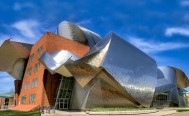 The Peter B. Lewis Building, designed by Frank Gehry, is the home of Case Western Reserve University’s Weatherhead School of Management.
The Peter B. Lewis Building, designed by Frank Gehry, is the home of Case Western Reserve University’s Weatherhead School of Management.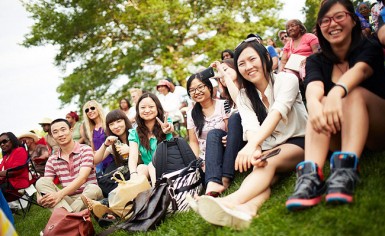 A new generation of Circle fans
A new generation of Circle fansFor decades, the 35-plus educational, medical and arts institutions based in University Circle had worked collaboratively on improvements within the district. Despite making several attempts to combat blight in nearby Hough with small-scale housing construction projects, University Circle remained an island of vibrancy surrounded by areas of disinvestment. With $3 billion in new construction under way or planned by University Circle institutions in the early 2000s, the Cleveland Foundation seized a once-in-a-generation opportunity to extend anchor-institution investment into a half-dozen nearby neighborhoods, whose residents are predominantly low-income and working-class African Americans.
In 2003, the foundation’s CEO invited the CEOs of Case Western Reserve University (CWRU), University Hospitals of Cleveland and the Cleveland Clinic Foundation to come to the table and help identify new ways to collaborate on the improvement of Greater University Circle. Agreeing that the future of their institutions and the Circle was inextricably linked to the health of the surrounding communities, the four CEOs formed the core of a planning task force that grew to include public, private and grassroots representatives with a stake in attracting new investment, residents and visitors to the Circle and its immediate environs: Buckeye-Shaker, East Cleveland, Fairfax, Glenville, Little Italy and Hough.
Fueled by the Cleveland Foundation’s commitment of $1.6 million toward planning, the Greater University Circle Initiative, a multipronged strategy to transform the lives and environment of those who live, work and spend leisure time in or near the Circle, was launched in 2006. The deteriorated condition of the Circle’s transit infrastructure was the first project to be tackled. The Regional Transit Authority had set aside the monies to modernize RTA stations at Cedar Hill and at Euclid Avenue and East 120th Street, but had been unable to forge a consensus as to how best to improve the stations’ functioning and appearance.
With the support of a $1.6 million transportation fund raised by the initiative’s leadership group, RTA secured the design and engineering assistance needed to reconcile divergent opinions and move ahead with the projects. The Cedar Glen bus station and the tangled intersection at East 105th Street and Martin Luther King Jr. Drive were also slated for remodeling to relieve congestion. Representing $37 million in capital improvements, each of these projects will help to reduce the physical barriers that have long isolated University Circle from neighboring communities.
The desirability of those neighborhoods received a boost in 2007, when the Circle’s anchor institutions joined with a coalition of sympathetic private and philanthropic funders to unveil Greater Circle Living, a $4 million incentive program to stimulate investment in and rehabilitation of the adjoining neighborhoods’ housing stock. Full-time employees of 35 participating Circle institutions are now eligible to receive a forgivable, no-interest loan toward the purchase of an owner-occupied home in Greater University Circle. Subsidies for rental units and exterior repair are also available. More than 225 individuals, couples and families have taken advantage of these incentives to reside near their workplaces, bringing new life to the area.
Appreciating that home ownership requires a good-paying job, the Greater University Circle Initiative has taken the first steps toward creating a network of Evergreen Cooperatives, environmentally sustainable businesses established to employ residents of adjoining neighborhoods. Based on a Spanish model, the cooperatives give workers a chance to build wealth through an equity stake in the enterprise. Three Evergreen Cooperatives have opened since 2009. An industrial-scale laundry service, a hydroponic greenhouse and a company specializing in the installation of solar panels began operations with the support of a $1.15 million in grants from the Cleveland Foundation. The agreement of the Circle’s anchor institutions to redirect a portion of their combined $3 billion in annual procurement monies to buy goods and services from the Evergreen Cooperatives underpins the feasibility of this potentially revolutionary undertaking.
The initiative’s most visible accomplishment is Uptown, a high-density, mixed-use superblock at the eastern edge of the CWRU campus. The Cleveland Foundation set the redevelopment in motion with a $1 million grant for urban design services and made a series of loans totaling $4 million to support the initial phase of construction of the $150 million project, which has brought new apartments, shops, restaurants and services to the important but formerly lackluster intersection of Mayfield Road and Euclid. The foundation contributed another $1 million to the capital campaign for MOCA Cleveland, a contemporary art center whose faceted, black-mirrored four-story gallery now anchors Uptown.
Buoyed by the initiative’s progress and impact, its leaders agreed in October 2011 to continue the collaboration for at least three more years. Next project: planning for the redevelopment of Upper Chester, a prominent but long-blighted area of Hough that lies between the Cleveland Clinic and the western border of University Circle. CWRU’s decision to locate its new $50 million medical education building on the Cleveland Clinic campus could be transformative for the neighborhood to the north. One possible scenario envisions the redevelopment of the northern stretch of Chester Avenue into a “medical village” comprised of housing and services for medical students and health care professionals anchored by the medical school, which will be constructed at Euclid Avenue and East 93rd Street with the support of a $10 million grant from the Cleveland Foundation.
2003
Championing Advanced Energy
The foundation’s quest to make Greater Cleveland a hub of wind energy research, manufacturing and generation is moving closer to reality.
 The foundation’s vision of creating a wind farm in Lake Erie is moving closer to reality.
The foundation’s vision of creating a wind farm in Lake Erie is moving closer to reality. The Great Lakes Science Center’s wind turbine
The Great Lakes Science Center’s wind turbine A new company that makes and installs solar-panel arrays has been created with foundation support.
A new company that makes and installs solar-panel arrays has been created with foundation support. The foundation helped to draft and win passage of a clean energy law for Ohio.
The foundation helped to draft and win passage of a clean energy law for Ohio.The Cleveland Foundation was the first to envision the rise of an advanced energy industry in northeastern Ohio. In a test of the attractiveness of solar power, the foundation spearheaded the creation of Evergreen Energy Solutions, a worker’s cooperative that designs and installs photovoltaic solar-panel arrays for institutional and commercial customers. Given the region’s manufacturing heritage, the design and production of wind power components seemed an even better bet to the foundation’s new president and CEO, Ronald B. Richard.
Struck by the windy chop of Lake Erie during his first trip to interview for the foundation job in 2003, Richard had barely settled into his new responsibilities before he began to talk about the environmental and economic benefits to be derived from the region’s taking a lead role in clean energy creation. Having gained extensive experience with manufacturing and environmental issues during his previous career in business, he suggested that offshore wind generation might be a means to provide Greater Cleveland with a green, renewable source of electricity, and to reinvigorate its manufacturing base. In the beginning, people were skeptical.
Richard believed that one of the reasons for the region’s economic weakness was missing out on the information technology revolution. He was determined to ensure that Greater Cleveland participated in what he correctly believed would become a big-industry cluster. Today, advanced energy enterprises generate $46 billion in annual revenues and account for 400,000 jobs worldwide.
In 2004, Richard won board approval to take the first step toward gauging the technical and economic feasibility of creating an offshore freshwater wind farm. With foundation funding, Green Energy Ohio installed an anemometer, a wind-measuring device, on the city’s water intake crib off downtown Cleveland so that monthly data on wind speed, direction and temperature could be collected and evaluated. The data were encouraging, as was public fascination with a 135-foot-tall wind turbine that the Great Lakes Science Center erected on the lakefront in 2004 with a $160,000 grant from the foundation. Generating enough energy to power up to 20 homes through a tie-in with Cleveland Public Power, the turbine served as an educational demonstration on the environmental benefits of alternative energy.
Ronn persuaded British Petroleum (formerly Ohio’s Standard Oil Company) to allow him to use designated funds at the foundation to hire a senior fellow for economic and environmental advancement. With the recruitment of energy industry veteran Richard Stuebi to the position of BP fellow in early 2006, Ronn’s aspiration to help Greater Cleveland become a North American hub of wind energy research, manufacturing and generation began to take strategic form.
Stuebi (whose fellowship ended in 2010) recommended that the foundation award a $3.6 million grant in 2007 to help launch the Great Lakes Energy Institute (GLEI) at the School of Engineering at Case Western Reserve University. Focused on advanced energy research, particularly in the fields of renewable energy, energy storage and energy efficiency, the institute was expected to develop new technologies with commercial promise. Ohio’s Third Frontier innovation and development fund also recognized the institute’s potential as an engine of technology transfer, awarding GLEI a $3 million grant in 2009 to fund wind turbine research.
On the manufacturing front, the Cleveland Foundation helped to establish the Great Lakes Wind Network (GLWN), a supply chain advisory group that works to link regional metalworking companies with domestic and international wind turbine manufacturers seeking to source components. With the support of a 2008 foundation grant, GLWN also collaborated with WIRE-NET, a manufacturing advocacy group on Cleveland’s west side, to educate local casting, machining, forging and fabrication firms about the growth potential of serving the wind power industry.
On the generation front, Stuebi worked closely with state legislators on drafting a clean energy policy for Ohio. SB 221, adopted in May 2008, included provisions requiring Ohio utilities to obtain 25 percent of their electricity from advanced energy sources—half of which must be renewable—by 2025. Without this state mandate, a substantial market for advanced energy technologies and businesses could never gain traction here.
The seemingly quixotic dream of erecting a freshwater wind farm in Lake Erie is moving closer to reality. Along with representatives from such stakeholders as Ashtabula, Lake and Lorain Counties, Case Western Reserve University, the City of Cleveland, the Cleveland-Cuyahoga County Port Authority and NorTech (an accelerator of high-growth industry clusters), Stuebi served on the Great Lakes Energy Development Task Force, chartered in 2006 by Cuyahoga County. The task force’s research, largely funded by the Cleveland Foundation, confirmed the feasibility of offshore wind power generation and recommended that a new nonprofit organization be created to spearhead the wind farm’s development.
In 2010, the Lake Erie Energy Development Corporation (LEEDCo) was formed, with Dave Karpinsky, vice president and director of NorTech Energy Enterprises, serving as board chairman. Supported by $700,000 in start-up and operating monies from the Cleveland Foundation, LEEDCo began planning a “proof of concept” project. In 2012, “Icebreaker”—named for a type of turbine foundation support—became one of seven offshore wind power prototype projects to receive U.S. Department of Energy funding. The $4 million federal grant will enable LEEDCo to complete the engineering studies and permitting needed to erect six three-megawatt, American-made wind turbines seven miles off the Cleveland shoreline. Just as important, LEEDCo is now one of six projects eligible to receive a follow-on Department of Energy grant. The three winners of grants of up to $46.7 million apiece will be determined in spring 2014.
In Icebreaker’s case, the additional federal funding would cover about half of the estimated costs of building and installing the six turbines—the next step toward LEEDCo’s ultimate goal of demonstrating the commercial potential of offshore wind generation to private developers and helping regional metalworking companies gain the experience to serve those developers.
2003
Frank H. and Nancy L. Porter Fund
Foresighted Gift of Discretionary Monies

Nancy Beth Lyon gave up her plans to earn a master’s degree in social work in 1943 when she married Frank H. Porter, whom she had known since their Cleveland Heights High School days. But she never abandoned her commitment to helping others. After Frank completed his wartime service in the army, the couple moved to Russell Township on the outskirts of Cuyahoga County, where they brought up four sons and a daughter. With energy to spare, Nancy gave generously of her time and talents to nonprofit agencies that touched thousands of lives.
Committed to connecting as many people as possible to effective health care, educational opportunities and essential human services, she volunteered at the Welfare Federation of Cleveland, served as a board president of the Benjamin Rose Institute on Aging and was a founder and board president of the Centers for Families and Children. Nancy also served on the visiting committee for the Mandel School of Applied Social Sciences at Case Western Reserve University.
Nancy’s volunteerism introduced her to a young Cuyahoga County welfare department employee named Steven A. Minter, a fast-rising public servant destined to become a chief executive of the Cleveland Foundation. Their common interest in helping low-income families escape poverty and their membership in Fairmount Presbyterian Church in Cleveland Heights, where the Porters and the Minters would all serve as elders, cemented Nancy and Steve’s lifelong friendship.
Nancy Porter passed away in 1996 at the age of 75, leaving her husband to carry on their charitable endeavors. Frank Porter, the owner of Central Cadillac, a luxury car dealership started by his father-in-law, had pursued his love of contemporary art and sculpture with a passionate spirit equal to that of his late wife’s. With Nancy’s enthusiastic support Frank had built an extensive art collection, commissioned internationally renowned architect Walter Gropius to design the landmark Tower East in Shaker Heights (the first of several buildings Porter developed in Cleveland’s suburbs), and avidly supported the Cleveland Museum of Art.
As Porter considered how to perpetuate the charitable and cultural interests that had enriched his and Nancy’s lives, he initially thought of setting up a private family foundation. Reflecting on his wife’s admiration and affection for Steve Minter, Porter also investigated the possibility of bequeathing the couple’s estate to the Cleveland Foundation. He ultimately decided that establishing an endowment fund at the foundation would be far simpler and also more beneficial to Greater Cleveland.
In 2003, a year after Frank H. Porter died at the age of 82, the Cleveland Foundation announced the Porters’ bequest, which had an estimated value of between $60 and $70 million. This extraordinary gift was the largest in the foundation’s history at the time. In contrast to national trends in giving to community foundations, which tended toward donations to designated causes, the Frank H. and Nancy L. Porter Fund was an unrestricted endowment. Porter had displayed remarkable foresight in giving the foundation’s board of directors the discretion to make grants from the fund for priority community concerns.
Gratefully considering the bequest a gift from the entire Porter family, the foundation’s directors approved the use of a portion of the endowment as a donor-advised fund so that the Porter children—Frank Jr., George, Frederick, Elizabeth and Steven—can recommend awards in their parents’ names to organizations and causes the couple cared about during their lifetimes.
2003
Fund for Our Economic Future
The decades-long decline of northeastern Ohio’s economy had achieved a dimension described by the media as a “quiet crisis” by the turn of the 21st century. Determined to help the region mount an aggressive campaign to staunch the slow but steady loss of jobs, in 2002 the Cleveland Foundation initiated a broad-based discussion with business, political and philanthropic leaders about how to promote business formulation and economic growth. Growing out of these consensus-building conversations was a remarkable commitment made in 2003 by 40 area philanthropies to join forces, pool their resources and launch the Fund for Our Economic Future to stimulate business creation and expansion.
Quickly expanding to 68 members, the fund raised $30 million to be used over three years to support new intermediaries promoting entrepreneurship, fostering new high-growth industry clusters and improving the region’s business attraction and support services. The Cleveland Foundation made a large-scale commitment of nearly $20 million to the fund’s first five years of operation and has remained a significant annual contributor to the largest philanthropic collaboration of its kind in the United States.
2003
Increasing the Community’s Capacity to Relieve Hunger
By the early 2000s, the Cleveland Foodbank was northeastern Ohio’s largest hunger relief organization. It provided nearly 19 million pounds of food to its member agencies annually. But lack of storage at its 100-year-old main warehouse and distribution center downtown required the organization to turn away almost 1.5 million tons of provisions each year.
In 2003, the Cleveland Foundation contributed $1 million toward the $10 million cost of constructing a new 60,000-square-foot facility for the Foodbank near Interstate 90 on the far east side of Cleveland. The new headquarters, which opened in 2004, positioned the organization to expand its services. Unfortunately, the economic downturn dramatically increased demand in neighborhoods the Foodbank had not previously served and did not have the capacity to fulfill. A $300,000 grant from the foundation in 2009 supported the hiring of three additional staff members and the addition of four mobile pantries, enabling the Foodbank to offer hunger relief to an additional 160,000 persons.
2003
Support for High-Potential Business Start-ups
In the early 2000s, a number of barriers stood in the way of recapturing the entrepreneurial energy on which Cleveland’s former economic prosperity was based. Aspiring entrepreneurs were hampered by a lack of skills necessary to convert good ideas into successful businesses, a scarcity of early-stage capital and a shortage of networking and support systems. With the help of a $300,000 grant from the Cleveland Foundation, JumpStart was launched in 2003 to provide business development services and seed monies to high-potential start-up firms.
The foundation subsequently invested $2 million in JumpStart’s venture-capital fund and granted $750,000 toward operations in 2010. The more than 120 high-growth companies currently in JumpStart’s investment portfolio or on its list of clients have indisputably boosted the regional economy. Since 2003, they have contributed $200 million in economic impact, attracted $517 million in venture capital and created or retained more than 1,500 jobs.
2004
Betting on “Cool Cleveland”
The Cleveland Foundation launched the Civic Innovation Lab in 2003 to test whether providing start-up funding, mentorship, networking opportunities and visibility to individuals with creative ideas for new small businesses should be part of Greater Cleveland’s economic development strategy. In the first “class” of grantees in 2004 was Cool Cleveland, a weekly e-mail newsletter launched in 2002 to cover the people, places and activities deemed “cool” by its founder and publisher, Thomas Mulready. The foundation’s $30,000 grant gave the experimental online publication time to find its voice, develop a successful business plan and secure a devoted audience that appreciated Mulready’s edgy take on the things that make Cleveland great.
2004
Donald and Ruth Weber Goodman
Perpetuating Life-Saving Medical Care

In October 2000, Donald Goodman, a retired dentist, returned to his Pepper Pike home after his morning exercise and abruptly collapsed on the floor. After being rushed to University Hospitals of Cleveland, he was diagnosed with acute myelogenous leukemia, a rare and particularly aggressive form of cancer. Instead of chemotherapy, doctors at UH’s Ireland Cancer Center decided to treat Dr. Goodman with Mylotarg, a drug that had received Federal Drug Administration approval only five months prior. After 30 days of grueling treatment, during which time he received 19 transfusions of whole blood, Donald Goodman was declared cancer free.
While hospitalized, Dr. Goodman had been prohibited from receiving visitors, leaving him with time for reflection. One thing he naturally found himself thinking about was his estate plan. The Goodmans had already planned a gift to the community through the Cleveland Foundation. Indeed, after Dr. Goodman recovered, he and his wife sought an appointment with the foundation’s new CEO, Ronald B. Richard.
Richard’s calendar was booked for a solid month, but he offered to meet with the “dentist from Beachwood” (as Donald had modestly identified himself) after work or on a weekend. Although unwilling to inconvenience the foundation’s CEO, Goodman was so impressed by Richard’s courtesy that he drew up the couple’s bequests to the foundation in advance of his subsequently scheduled workday meeting with Richard. In 2004, the Donald and Ruth Weber Goodman Fund was established at the foundation.
As a result of Dr. Goodman’s hospitalization, the couple knew exactly how they wanted the fund’s income to be used. It was designated for the advancement of medical research and education at a number of favored institutions, including UH, the Ireland Cancer Center (now the Seidman Cancer Center), the Case Western Reserve University (CWRU) School of Medicine and the CWRU School of Dental Medicine, of which Dr. Goodman was a graduate. The support of medical programming on public broadcast stations in northeastern Ohio was also stipulated as an objective.
The bequest to the fund from the estate of Dr. Goodman, who died in 2007, totaled more than $9 million. Ruth Weber Goodman, the daughter of the founder of Cleveland’s Triplex Screw Corporation and Dr. Goodman’s second wife, died in 2008. Her bequests brought the total value of the fund to nearly $70 million, making the Goodmans’ gift the largest in the foundation’s history to date.
2006
Portfolio of 20 Innovative and Excellent Schools
Believing in the talent and promise of urban youth, the Cleveland Foundation sought to demonstrate that public school students could achieve their potential if given an opportunity to learn in high-performance educational settings. In 2006, the foundation partnered with the George Gund Foundation and the Cleveland Municipal School District to create a portfolio of new, innovative and excellent schools. To date, the two foundations have contributed more than $16 million in grants to the initiative.
As a result, there are now 20 portfolio schools in Cleveland: 13 district innovative schools and seven charter schools sponsored by the district. Many of them are built around the STEM (science, technology, engineering and math) disciplines that are widely accepted as a key to success in a knowledge-based, technology-driven global economy. Others are single-gender or residential academies.
Three innovative high schools located in University Circle on the John Hay campus, which reopened in 2006 after extensive renovation, exemplify the range of excellent educational options now available to Cleveland public school students. The School of Science and Medicine boasts a 100 percent graduation rate, with 100 percent of its students accepted into college. Cleveland Early College High School offers high-achieving students an accelerated curriculum that allows them to graduate high school in three years, often armed with college credits. The Cleveland School of Architecture and Design, which features a project-based, college-preparatory curriculum, has earned an Excellent rating by the State of Ohio Department of Education each year since its opening in 2010.
2008
Bridge to Arts Education and Healthcare Careers
With the support of a $3 million grant awarded by the Cleveland Foundation in 2008, NewBridge Cleveland Center for Arts and Technology opened in MidTown in the fall of 2010. The airy high-tech building houses a vocational program that prepares adults for careers as phlebotomy and pharmacy technicians and after-school arts classes for teens poised on the brink of quitting school. NewBridge is modeled after Pittsburgh’s highly successful Manchester Bidwell training center, which has been in operation since 1968.
The foundation led a collaborative effort to replicate the Manchester Bidwell program here. Cleveland’s leading medical institutions advised on the design of the adult curricula, resulting in a high rate of employment of the 36 adults who graduated in 2011 and 2012.
More than 350 ninth- and 10th-graders selected by 40 high schools from across the county attended free, hands-on classes in ceramics, photography, digital arts, and music recording and production during the 2011–12 academic year. In contrast to usual turnout for afterschool programs, which often fail to attract young men, 55 percent of the attendees were male. The foundation affirmed its belief in NewBridge’s effectiveness with a second grant of $1.5 million in 2011.
2008
Creating Real Jobs for Neighborhood People
To reduce poverty in University Circle’s environs, the foundation has designed and launched three workers’ cooperative businesses that serve the Circle’s anchor institutions.
 Green City Growers Cooperative’s 3.25-acre hydroponic greenhouse in the Central neighborhood opened in 2013.
Green City Growers Cooperative’s 3.25-acre hydroponic greenhouse in the Central neighborhood opened in 2013. 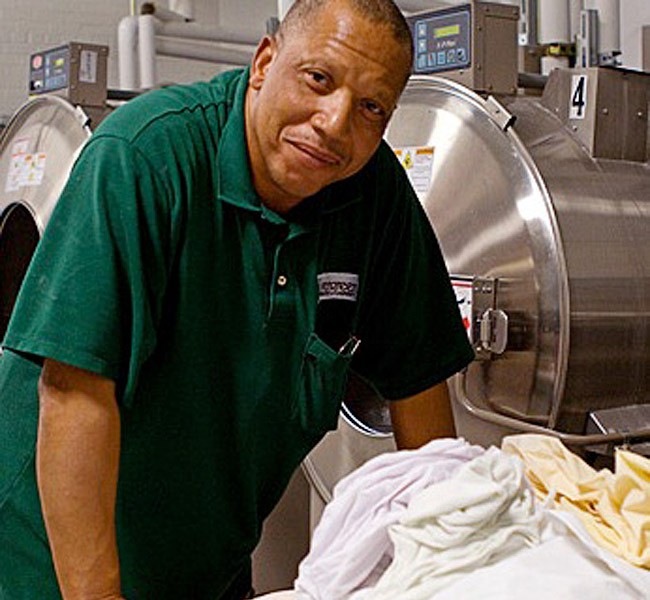 An owner-employee of the Evergreen Laundry
An owner-employee of the Evergreen Laundry Evergreen Energy Solution’s photovoltaic panels
Evergreen Energy Solution’s photovoltaic panels Green City Growers supplies Bibb lettuce, green leaf lettuce, gourmet lettuces and basil to institutional and commercial customers.
Green City Growers supplies Bibb lettuce, green leaf lettuce, gourmet lettuces and basil to institutional and commercial customers.In leading the Greater University Circle Initiative, the Cleveland Foundation has set out to achieve nothing less than a dramatic reduction of poverty in the six Cleveland neighborhoods adjoining the Circle, which are home to 43,000 residents whose average household income is below $18,500. In addition to stimulating major physical improvements within the Circle, the initiative has undertaken two neighborhood-rebuilding campaigns, the objectives of which can be summed up in the phrases “Live Local,” “Hire Local,”and “Buy Local.” The first phrase describes an employee housing assistance program. The second and third phrases underpin a business formation plan that taps into the $3 billion the Circle’s anchor institutions spend annually on procurement.
Devised by the foundation in partnership with the anchor institutions, the business formation campaign represents a new paradigm for neighborhood economic development. The partners have committed to creating a network of for-profit businesses that recruit their workforces exclusively from the pool of residents who live in neighborhoods surrounding the Circle. The businesses offer their recruits on-the-job training and award them a living wage and full health benefits.
Jobs alone are not enough to break families out of the cycle of poverty, however. Once the businesses achieve profitability, employees who have worked for a year or longer will also receive an equity stake in the business. Employees’ shares of annual profits are to be distributed into their portable capital accounts. Profits will also underwrite worker training and new business start-ups.
Three employee-owned businesses employing about 90 workers have been launched since 2009: an industrial-scale laundry that washes and irons bed linens, a hydroponic greenhouse that raises lettuces and herbs, and a solar panel installation company that also offers weatherization services. Called Evergreen Cooperatives, they all operate according to the latest “green” principles. In addition to reaping long-term savings from their sustainable business practices, the cooperatives have a good chance of succeeding because University Circle’s largest institutions have contracted with them for goods and services.
The hard-won experience of the Cleveland Foundation’s program director for neighborhoods, housing and community development informed the partnership’s discussion about how to reverse the loss of jobs in Buckeye-Shaker, East Cleveland, Fairfax, Glenville, Little Italy and Hough. As the former director of the City of Cleveland Empowerment Zone, India Pierce Lee appreciated that employment tax credits offered by the federal program had not created a sufficient number of jobs to make a critical difference in the targeted urban neighborhoods. She had also observed the pitfalls of workforce training programs that prepared low-skilled city residents for jobs largely available in distant suburbs. Recognizing the need for an out-of-the-box job creation strategy, the foundation turned to Ted Howard, a national expert on community wealth building based at the University of Maryland.
Howard was retained as a consultant to the foundation in 2007. He helped the Greater University Circle partners formulate the cooperatives strategy and carefully think through each element of a model employee-owned business, right down to calculating the estimated $65,000 that each worker could expect to accumulate in his or her portable capital account at the end of eight years of employment.
To help the model designers visualize the end product, Howard led representatives of Case Western Reserve University, the Cleveland Clinic and University Hospitals of Cleveland (among others) on a study tour to Spain’s Basque region, the location of the Mondragon Cooperative Corporation, an interconnected group of 120 cooperatives with 100,000 employees and $25 billion in sales that has been built over a period of 50 years. Howard also met with national foundations that had never before worked in Cleveland and obtained seed grants from several funders who recognized the undertaking’s value as a “learning lab.”
In recognition of his contributions to the design, financing and rollout of the Evergreen Cooperatives, Howard was subsequently named the foundation’s first Steven A. Minter Fellow for Social Justice. In this capacity he continued to collaborate with the Greater University Circle partners on the refinement of the cooperatives strategy and advise other urban communities interested in replicating the Cleveland model.
The Cleveland Foundation granted $1 million toward the start-up of the first three Evergreen Cooperatives. These seed monies, along with the promised procurement contracts, helped to leverage an additional $35 million in venture and operating capital from a variety of sources, including grants from local and national foundations, long-term, low-interest federal loans, tax credits, state grants and even commercial loans. The foundation has also contributed more than $2.5 million to the development fund of the Evergreen Cooperative Corporation, a not-for-profit holding company whose foundation-led board oversees the existing cooperatives and plans to raise between $50 million and $100 million to capitalize the next generations of start-ups.
One locally rooted, sustainable business at a time, the economies of Greater University Circle neighborhoods will be revitalized. The long-term goal is to create hundreds, if not thousands of new jobs that will pay wages on which families can be raised and help those families achieve the American dream of building wealth.
2008
Gang Violence Prevention
The Cleveland Foundation awarded $1.45 million over five years to fund the Greater Cleveland Peacemakers Alliance, a coalition of the City of Cleveland Community Relations Board and seven community organizations that addresses gang and street violence in the city and its inner-ring suburbs. The alliance, whose members include Amer-I-Can Cleveland, Boys & Girls Club Cleveland and the Guardian Angels, trains outreach workers in conflict resolution, cultural diversity and community engagement.
Peacemakers make themselves known in high-crime neighborhoods, seeking opportunities to mentor street youth and connect them to social services and recreational activities organized by the alliance. They also assist schools with crisis prevention and help police with crowd control. The outreach program contributed to a 37 percent decrease in crimes involving youth and guns committed in Cleveland in 2012.
2008
Gordon Square Arts District
Starting in 1975, with a three-year operating grant to the fledgling Detroit Shoreway Community Development Corporation, the foundation has been a champion of the redevelopment of the Gordon Square commercial district centering on a historic arcade at Detroit Avenue and West 65th Street. The foundation’s initial grant gave Detroit Shoreway organizers the capacity to save the half-vacant Gordon Square Arcade from demolition and apply for a $200,000 Urban Development Action Grant to rehab the grand old building, which once housed the 1,500-seat Capitol movie theater, a hotel, apartments and office spaces.
In the mid-2000s, the community development organization capped its steady progress in revivifying the Detroit Shoreway neighborhood by creating the Gordon Square Arts District, home to new or renovated facilities for the Cleveland Public Theatre, a presenter of experimental drama; the Near West Theatre, a training ground for youth; and the Capitol Theatre, which reopened in 2009 as a venue for first-run and independent movies after rehabilitation supported by a $500,000 foundation grant. The Cleveland Foundation has contributed another $500,000 to the art district’s $30 million capital campaign, which is expected to leverage $500 million in related retail, restaurant and housing development in a 15-block area along Detroit Avenue.
2008
International-Artist Residency Program
 Dancer/choreographer Kapila Palihawadana of Sri Lanka, 2012 artist in residence with the Inlet Dance Theatre, conducts a master dance class at the Beck Center for the Performing Arts.
Dancer/choreographer Kapila Palihawadana of Sri Lanka, 2012 artist in residence with the Inlet Dance Theatre, conducts a master dance class at the Beck Center for the Performing Arts. Vietnamese lutist Pham Thi Hue was Young Audiences of Northeast Ohio’s artist in residence in 2013.
Vietnamese lutist Pham Thi Hue was Young Audiences of Northeast Ohio’s artist in residence in 2013.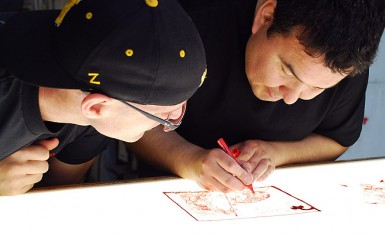 Ivan Lecaros (right), a master printmaker from Chile, puts the final touches on a drawing for a silkscreen print during his 2012 residency at Zygote Press.
Ivan Lecaros (right), a master printmaker from Chile, puts the final touches on a drawing for a silkscreen print during his 2012 residency at Zygote Press.Creative Fusion, the Cleveland Foundation’s innovative artist-in-residence program, supports long-term residencies at local arts organizations for accomplished international artists, with a goal of expanding the region’s exposure to world culture. Selected and hosted by cultural institutions throughout Greater Cleveland, the artists hail from cultures not well represented here. As they conduct classes and workshops, create and perform, they provide the benefits of creative exchange with their local counterparts, hands-on learning experiences with students of all ages, and deep engagement with the general public. As of 2012, Creative Fusion had brought 16 visiting artists—from countries ranging from Chile to Uganda—to Cleveland, where they, too, have benefited from experiencing three months in an American heartland city.
2009
Incentivizing Consumption of Fruits and Vegetables
The Cleveland-Cuyahoga County Food Policy Coalition, representing a spectrum of stakeholders—from hunger relief advocates to urban and rural farmers—came together in 2007 to create a more equitable, healthy and sustainable food system for northeastern Ohioans. In 2009, the coalition received capacity-building grants from the Cleveland and George Gund Foundations. With increased staffing, the coalition was able to reach out to farmers’ markets in Cleveland in an attempt to make fresh fruits and vegetables a household staple in neighborhoods where produce was not readily available, especially to those in the greatest financial need.
In 2010, a pilot program to incentivize produce consumption was launched. Four markets agreed to offer $5 extra to customers who spent at least $5 on fruits, vegetables, seeds and edible plants, using EBT (electronic benefit transfer) cards containing their food assistance benefits. By 2012, 16 farmers’ markets and food stands across Cuyahoga County were participating in the “Produce Perks” program. EBT sales recorded that year at all the markets amounted to more than $26,000—evidence that Produce Perks is producing new business for farmers’ markets and healthier, tastier meals for their new customers.
2009
Linking City Teens to Life-Enriching Programs
MyCom (My Commitment, My Community) may be the most ambitious effort ever undertaken in Cuyahoga County to provide underserved city youths with the kinds of life-enhancing, responsibility-building experiences that middle-class children take for granted: out-of-school enrichment activities, caring adult mentors, summer jobs. The planning for MyCom began in 2007, when some 250 community organizations, government agencies, faith-based groups, and youths came together at the Cleveland Foundation’s invitation to consider how to mitigate adolescents’ exposure to risk and help them harness their potential. The foundation’s $2.5 million in grants to support the launch of MyCom in 2009 leveraged $4.1 million from other funders, including the initiative’s principal partner, Cuyahoga County.
To make the most efficient and effective use of its funding, the partners decided not to create another program, but to connect youngsters to all the appropriate programs already in existence. MyCom’s evolving online and phone-accessible directory points parents and kids to more than 1,900 activities and services such as tutoring and career exploration. In its first year, MyCom’s jobs program found summer work for 3,600 teens. The long-term goal is to secure summer jobs for a greater percentage of the 11,000 first-year applicants and to expand MyCom’s offerings beyond eight pilot neighborhoods: Bellaire-Puritas, Central, Cudell-West Park, Mt. Pleasant, St. Clair-Superior, Slavic Village, northern Parma and southern Shaker Heights.
2009
Vacant Lot Reclamation
The City of Cleveland has an aggressive program to tear down homes abandoned due to disrepair or foreclosure. As a result, the metropolitan area has an inventory of about 20,000 vacant lots. The financial crisis of 2007–08, which dramatically increased the number of homes in foreclosure, prompted Neighborhood Progress, Inc., a redevelopment intermediary now known as Cleveland Neighborhood Progress, to work with government officials and community development organizations on a solution to the growing problem of empty lots. A $250,000 grant from the Cleveland Foundation underwrote a formal study of strategies for sustainable land reuse in 2009.
Using $500,000 in federal urban redevelopment money, the public-private partnership subsequently piloted a demonstration project to test the feasibility of various reclamation ideas. Fifty-six neighborhood groups, churches, schools and individuals received grants from Neighborhood Progress’s “Re-Imagining a More Sustainable Cleveland” program in the first round in 2010. The successful conversion of weedy lots into community gardens, pocket parks, orchards and spacious side yards convinced the city to raise $1 million for a second round of grants in 2011.
2010
Asian Festival
Cleveland’s first annual Asian Festival, mounted in observation of Asian Pacific-American Heritage Month in May 2010, received a $5,000 foundation grant to support the organization of a weekend-long celebration. Approximately 10,000 people crowded into Asia Plaza in the St. Clair-Superior neighborhood to enjoy cultural and martial arts performances, authentic Asian cuisine and ethnic merchandise.
The foundation’s modest investment in testing new ideas and partnerships was rewarded many times over. Greater Clevelanders responded to this opportunity to partake of the city’s rich diversity by swelling festival attendance to more than 30,000 in 2011 and 50,000 in 2012. The St. Clair-Superior Development Organization recognized the festival’s economic benefits for the surrounding neighborhood by presenting the Asian Festival with its 2011 Community Action Group Award.
2010
Increased Public Access to the Cuyahoga River
The Cleveland Rowing Foundation (CRF), formed in 1989 to promote the health, educational and social benefits of rowing, needed to find a permanent headquarters on the Cuyahoga River for its 800 members and the urban schoolchildren it mentored. A vacant commercial site with 1,100 feet of riverfront and two buildings seemed ideal, but the $3.5 million price tag for the seven-acre property was daunting. CRF sought assistance from the Cleveland Foundation, which recognized the challenge as an opportunity to expand public access to the Cuyahoga River.
The foundation connected CRF with the Trust for Public Land (TPL), a conservancy organization. With the support of a $250,000 foundation grant awarded in 2010 on the condition the monies be applied toward the creation of a public green space, CRF and TPL were able to raise the funds needed to purchase the concrete-covered property. Three acres were converted into Rivergate Park, which opened in May 2011 as a recreational resource for kayakers, canoers and rowers. The park also gave CRF room to expand its skills-building program for urban youth.
2010
Training Urban Primary Care Physicians
America faces a shortage of primary care physicians that will only become more severe when aging baby boomers become the frail elderly. The lack of primary care is especially acute in urban neighborhoods. In Greater Cleveland, a pioneering collaboration between the Northeast Ohio Medical University (NEOMED) and Cleveland State University (CSU) is tackling the shortage head-on.
With the support of a $250,000 planning grant from the Cleveland Foundation, the two institutions of higher education began in 2010 to design a unique training program that takes advantage of their combined strengths in urban health, primary care medicine and inter-professional education. The resulting initiative, now known as NEOMED-CSU Partnership for Urban Health, is targeted at economically disadvantaged youth who reside in the region, offering them two paths to becoming a primary care physician. They can complete their undergraduate work at CSU and then qualify for early admission to NEOMED, where they can earn a Doctor of Medicine (M.D.) degree. For students who already have college degrees, there is a post-baccalaureate/M.D. option.
The partner institutions received a second foundation grant of $1.5 million in 2012 to implement the initiative, which accepted its first class of 35 students that fall. In addition to formal coursework, students receive hands-on experience working with a small caseload of patients in a medically underserved neighborhood in Cleveland. Scholarships are awarded to students in exchange for a commitment to practice here for a specified period of time after their residencies. With 63 aspirants now enrolled, the program could significantly reduce the shortage of primary care physicians in Cleveland’s neighborhoods within a few short years.
2011
$4 Million Microlending Pool
Responding to the needs of “economically isolated” entrepreneurs, the Cleveland Foundation assembled a working group to examine the issue of small business lending in early 2011. A subsequent study of the microcredit landscape in Cuyahoga County, which the foundation commissioned with the Business of Good Foundation, estimated an unmet need of $38 million in loans under $50,000. The gap primarily affects minorities, immigrants and women, whose businesses may be either too small to interest conventional lenders or deemed not creditworthy.
The first small, but proactive, steps to address this issue, supported by Cleveland Foundation grants, met with positive results that prompted the formation of a public-private partnership consisting of the foundation, the City of Cleveland, Cuyahoga County, the U.S. Small Business Administration, Huntington Bank, the Greater Cleveland Partnership, the Commission on Economic Inclusion and the Business of Good Foundation. The partners contributed $4 million to fund microloans and $600,000 to provide loan recipients with training and technical assistance. The Columbus-based Economic and Community Development Institute (ECDI) was recruited to manage the microlending program.
Even before the program’s July 2012 launch, ECDI had made eight loans to local entrepreneurs totaling $163,000. As of the end of 2013, 30 businesses owned predominately by women or racial or ethnic minorities had received loans totaling $1.3 million. Nearly a third of these enterprises are based within the city of Cleveland.
2011
20,000 New Manufacturing Jobs by 2020
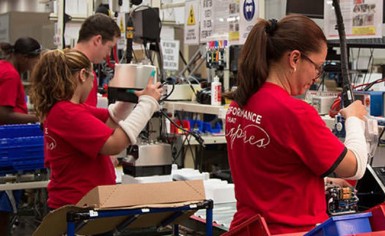 MAGNET’s Prism program helped Cleveland-based Vitamix keep up with demand for its high-end blenders.
MAGNET’s Prism program helped Cleveland-based Vitamix keep up with demand for its high-end blenders.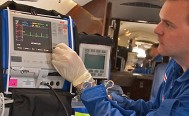 Sophisticated life support equipment in an air ambulance made by Nextant Aerospace, Ohio’s only aircraft manufacturer and a MAGNET client
Sophisticated life support equipment in an air ambulance made by Nextant Aerospace, Ohio’s only aircraft manufacturer and a MAGNET client MAGNET incubator graduate, DXY Solutions, makes components and software for mobile devices.
MAGNET incubator graduate, DXY Solutions, makes components and software for mobile devices. MAGNET consultants helped Nextant Aerospace of Richmond Heights, Ohio, apply lean principles to its specialty business of remanufacturing corporate jets for an under-$5 million market.
MAGNET consultants helped Nextant Aerospace of Richmond Heights, Ohio, apply lean principles to its specialty business of remanufacturing corporate jets for an under-$5 million market. 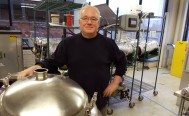 MAGNET incubator tenant Tom Lix, the founder and CEO of Cleveland Whiskey, which has developed a proprietary process for accelerating the aging of distilled liquors
MAGNET incubator tenant Tom Lix, the founder and CEO of Cleveland Whiskey, which has developed a proprietary process for accelerating the aging of distilled liquorsMAGNET, a longtime foundation grantee previously known as the Cleveland Advanced Manufacturing Program (CAMP), is making an important transition from its former emphasis on helping local manufacturers solve specific problems to its new focus on establishing long-term consulting relationships that will help manufacturing CEOs grow their companies.
With the support of a Cleveland Foundation grant of $400,000 awarded in 2011, MAGNET has begun to develop a comprehensive network of experts and resources to which its clients can be directed for assistance. Called PRISM (Partnership for Regional Innovation Services to Manufacturers), MAGNET’s new program seeks to help companies with annual sales of between $10 million and $500 million create new products and enter new markets, thus propelling double-digit percentage sales growth.
A second foundation grant of $400,000 awarded in early 2013 will enable MAGNET to expand PRISM’s portfolio of clients with an eye to fostering the creation of 20,000 new jobs in northeastern Ohio by 2020.
2011
Recidivism Reduction and Successful Re-entry
To ensure the successful reintegration into society of the 5,000 Greater Clevelanders who are released from Ohio’s prisons each year and reduce recidivism rates in the metropolitan area, the Cleveland Foundation collaborated with Cuyahoga County officials and the Centers for Families and Children on the development of an innovative pilot re-entry program called Transformation Enterprises.
With a $150,000 grant in 2011, the foundation joined with its partners in funding the creation of three small companies—a food preparation business, a home renovation business and a beauty salon—to employ individuals with felony convictions. Although the businesses are managed by nonprofit organizations, they are for-profit ventures whose revenues support job training for their employees.
Aware that 70 percent of all recidivism occurs within the first 12 months of re-entry, Transformation Enterprises facilitates immediate employment and also provides “soft-skills” training and job placement assistance to enable employees to find nonsubsidized work. More than half of the 32 employees who have “graduated” from the renovation business begun in 2012 by Career Development and Placement Services have secured full-time jobs elsewhere.
2012
The Cleveland Plan for Transforming Schools
A blueprint for tripling the number of public students enrolled in high-performing schools within six years, developed with the guidance of the Cleveland and George Gund Foundations, is the most groundbreaking education reform strategy in recent local history.
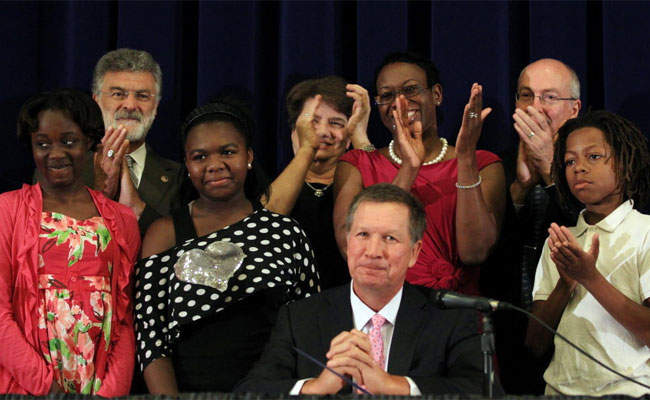 Ohio governor John Kasich at the signing of House Bill 525, legislation enabling education reform, in June 2012
Ohio governor John Kasich at the signing of House Bill 525, legislation enabling education reform, in June 2012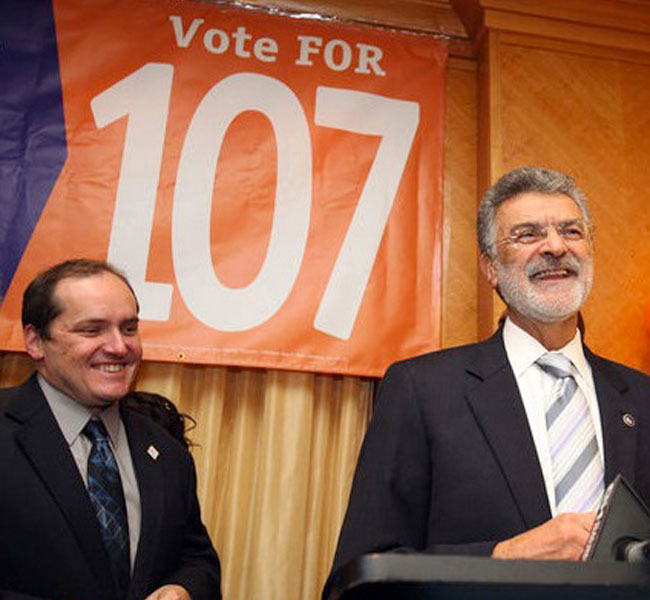 Cleveland schools CEO Eric Gordon and Cleveland mayor Frank Jackson stumping in 2012 for the passage of the first operating levy to be placed on the ballet in 16 years
Cleveland schools CEO Eric Gordon and Cleveland mayor Frank Jackson stumping in 2012 for the passage of the first operating levy to be placed on the ballet in 16 years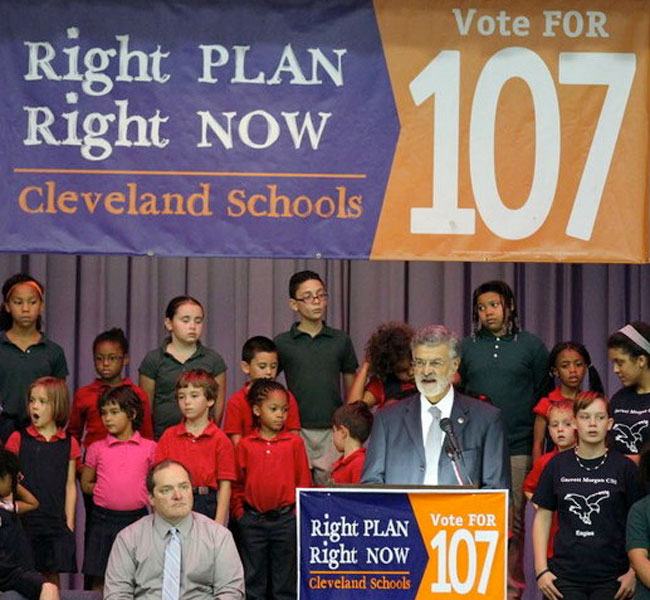 Cleveland voters expressed their hopes for the success of the reform plan by approving the Issue 107 operating levy.
Cleveland voters expressed their hopes for the success of the reform plan by approving the Issue 107 operating levy.In February 2012, Cleveland mayor Frank Jackson unveiled “Cleveland's Plan for Transforming Schools,” developed by a broad group of stakeholders, including the Cleveland and George Gund Foundations, and strongly endorsed by Cleveland Metropolitan School District (CMSD) CEO Eric Gordon. The plan builds on the success of an initiative launched by the two foundations in 2006 to create a portfolio of excellent schools in Cleveland.
Growing to 20 strong, these charter and CMSD schools—granted operational autonomy in exchange for high levels of accountability—have consistently outperformed their traditional counterparts. “The Cleveland Plan” laid out a blueprint for tripling the number of Cleveland students enrolled in high-performing portfolio schools and eliminating failing CMSD schools within six years.
The plan calls for central administrators to focus on governance and support and relinquish top-down control of individual schools; mandates a performance-based evaluation and compensation system for teachers and principals; eliminates length of service as the primary criterion in layoffs; empowers a panel of business, community and school leaders called the Cleveland Transformation Alliance to ensure the accountability of all the city’s schools; and permits CMSD to intervene quickly to restructure failing schools and share local tax revenues with partnering charter schools. It is, in sum, the most groundbreaking reform strategy in the district’s recent history. In recognition of their contributions and commitment to the plan's creation, the Cleveland and Gund Foundations received the 2013 Ohio Philanthropy Innovation Award from Philanthropy Ohio, a statewide association of private funders.
After extended negotiations in which the two foundations helpfully participated, the Transformation Plan gained the support of the Cleveland Teachers Union and, ultimately, the approval of the Ohio General Assembly. The foundation played a prominent role in winning passage of the enabling legislation, which was signed by Ohio governor John Kasich in June 2012. It also helped to finance the campaign promoting passage of Issue 107, CMSD’s first operating levy in 16 years and the largest to come before northeastern Ohio voters in recent memory. Referring to the enabling provisions of House Bill 525 as a prerequisite, Mayor Jackson noted that the passage in November 2012 of the 15-mill levy moved the school district another step closer to success.
The third step is implementation. Having declared its highest objective to be achieving the educational excellence necessary to develop a knowledgeable and skilled workforce and ensuring that every child in Cleveland has the opportunity to realize his or her full potential in an imaginative and effective school, the Cleveland Foundation committed more than $4 million to help make the Transformation Plan a reality. “Without major public school reform … our city will be left behind, and our children will face a bleak future—a tragic prospect wholly unnecessary,” foundation president and CEO Ronald B. Richard has stated. “We must seize this chance to create a stronger, more globally competitive Cleveland, and a more just society for our community and the nation.”
2012
Welcoming a New Generation of Immigrants
The Global Cleveland initiative has set the objective of attracting 100,000 talented newcomers to the region from around the world in an effort to counter Cuyahoga County’s steady population loss and reclaim the entrepreneurial energy generated by previous waves of immigrants. On February 7, 2012, Global Cleveland opened an international welcome center in the Huntington Bank building near Public Square with the support of a $150,000 foundation grant.
The welcome center will be both an information resource for people considering the possibility of relocating to Greater Cleveland and the headquarters of Global Cleveland, a concept first advanced by the Jewish Federation of Cleveland and widely embraced by the community’s civic and political leadership as the best means of recruiting the highly skilled employees needed to fuel the growth of the region’s high-tech businesses and industries.
2013
Ensuring the Cleveland Orchestra’s Next 100 Years
The Cleveland Foundation underscored the importance of securing the future of the Cleveland Orchestra—an international treasure recently ranked as the world’s favorite orchestra by Bachtrack, the international concert reviewer and online listing resource—with a 2013 grant of $10 million, the largest award to an arts organization in the foundation’s history. A leadership gift to the orchestra’s “Sound for the Centennial” campaign leading up to the celebration of the ensemble’s 100th anniversary in 2018, the grant provides support for day-to-day operations and creative programming designed to attract new audiences, especially younger listeners.
2013
Sponsorship of 2014 Gay Games
With its $250,000 grant to the Gay Games, the Cleveland Foundation became the first presenting sponsor in the 31-year history of this international sports competition open to all participants. Gay Games 9 is expected to bring 30,000 athletes and spectators to Cleveland in August 2014.
Greater Cleveland is the smallest metropolitan area to be chosen to host the games, which will present gold medals to the first-place winners of more than 35 sporting competitions. The Cleveland Foundation sponsorship, as well as the welcoming spirit of the City of Cleveland, the City of Akron and each community’s visitors bureau, were decisive factors in Greater Cleveland’s selection. In addition to securing the benefits of the competition’s anticipated $50 million economic impact on the region, the foundation seized the opportunity to express its strong support for the values of equality, social justice and human dignity.

